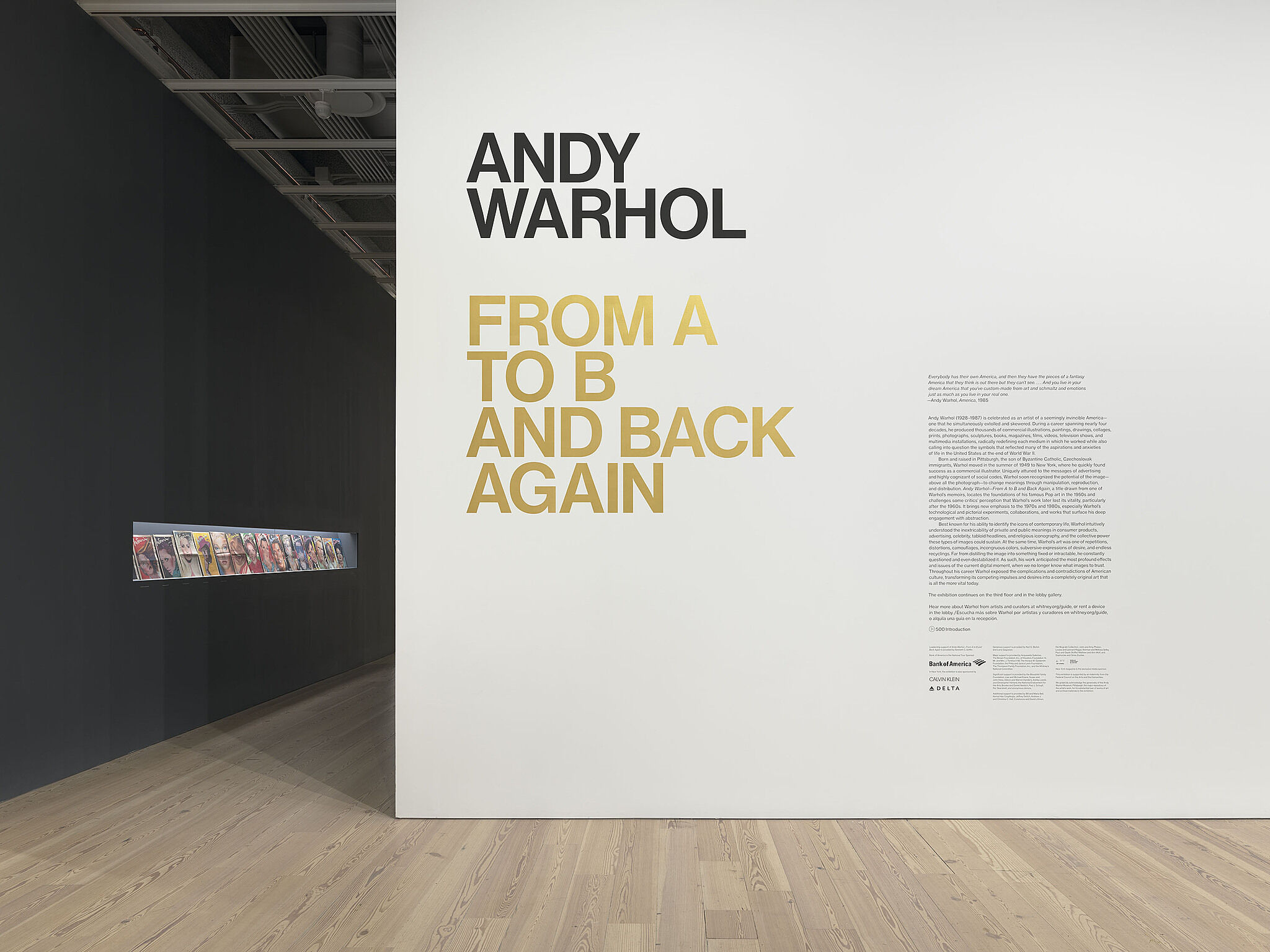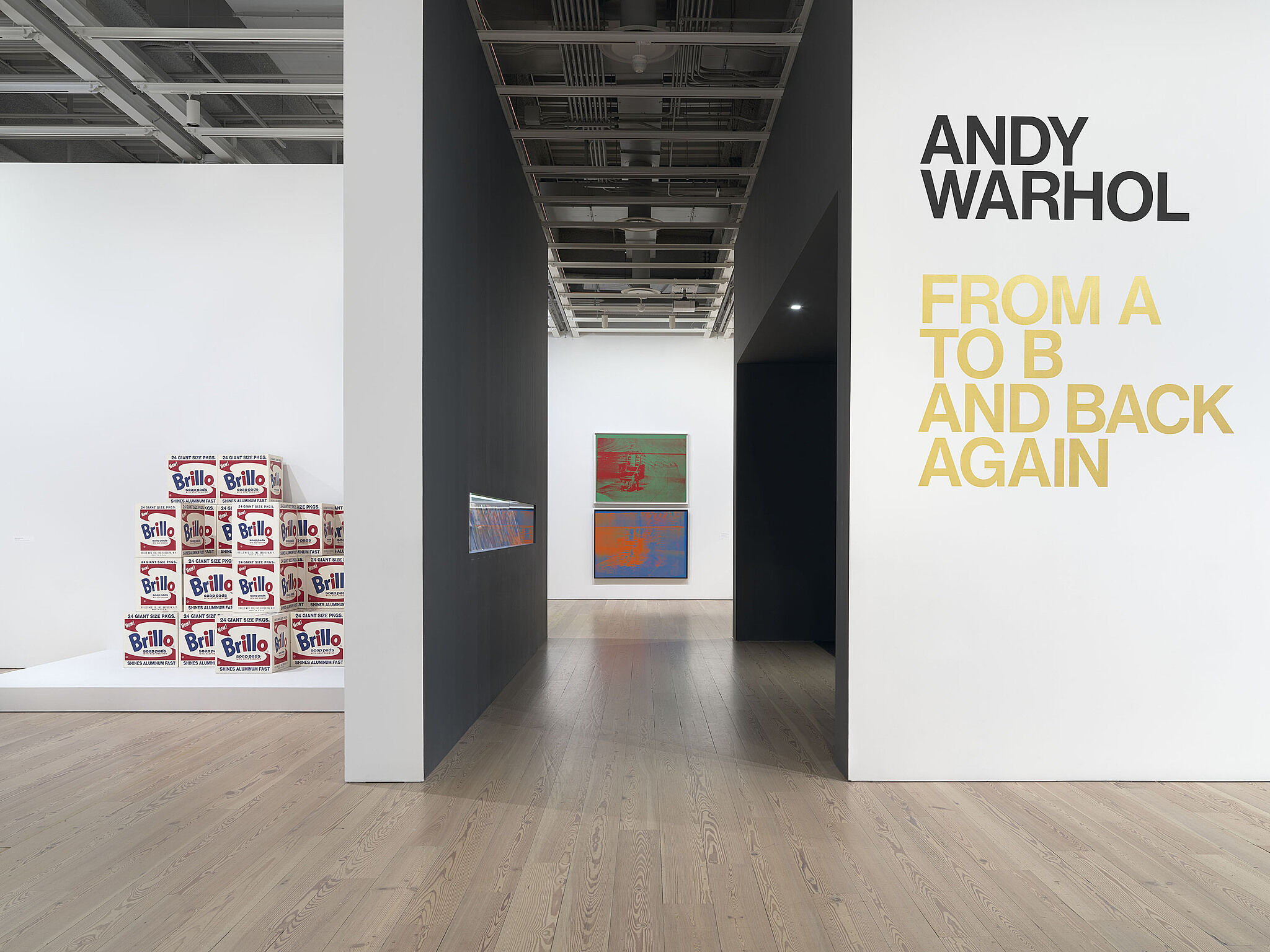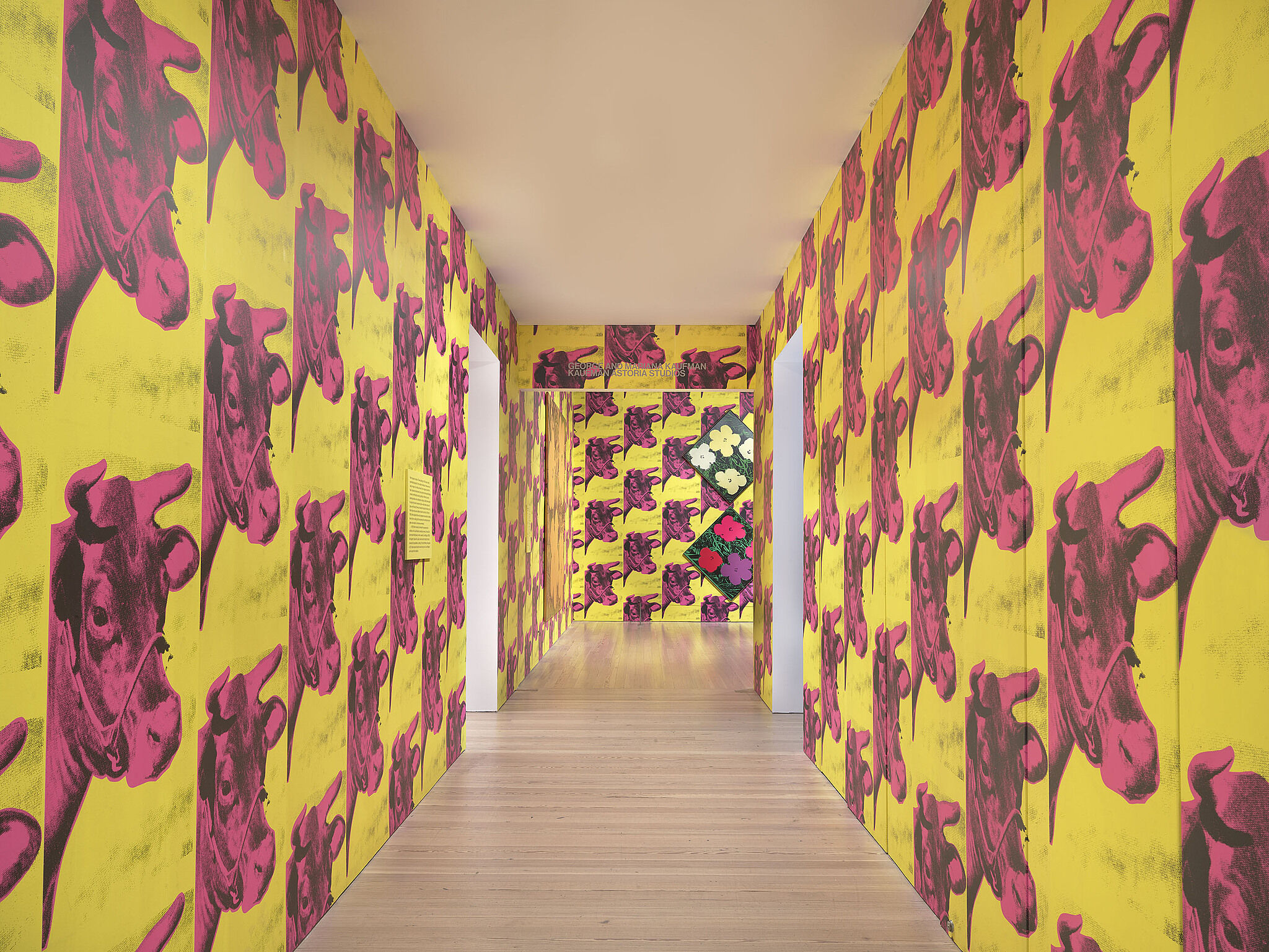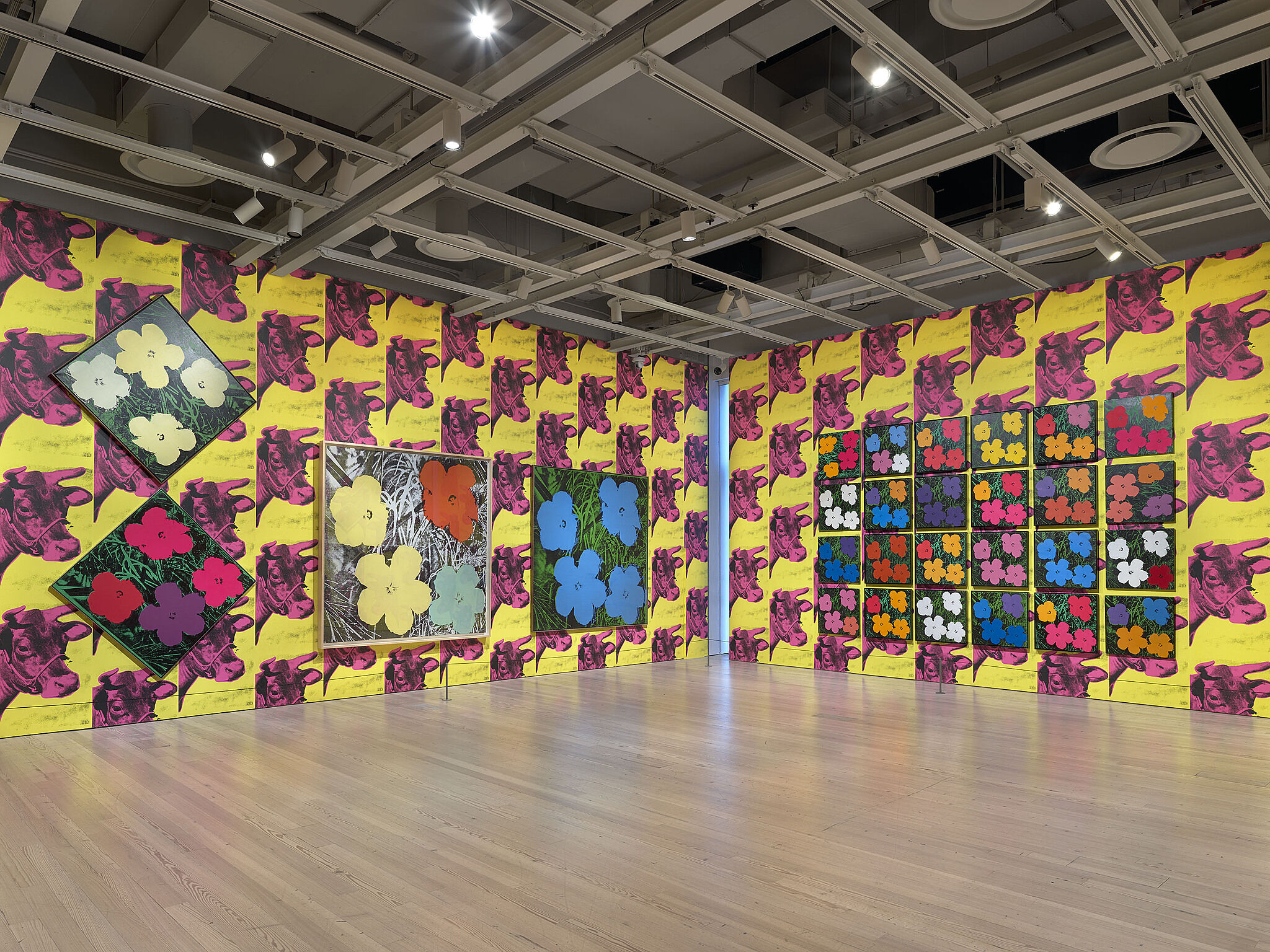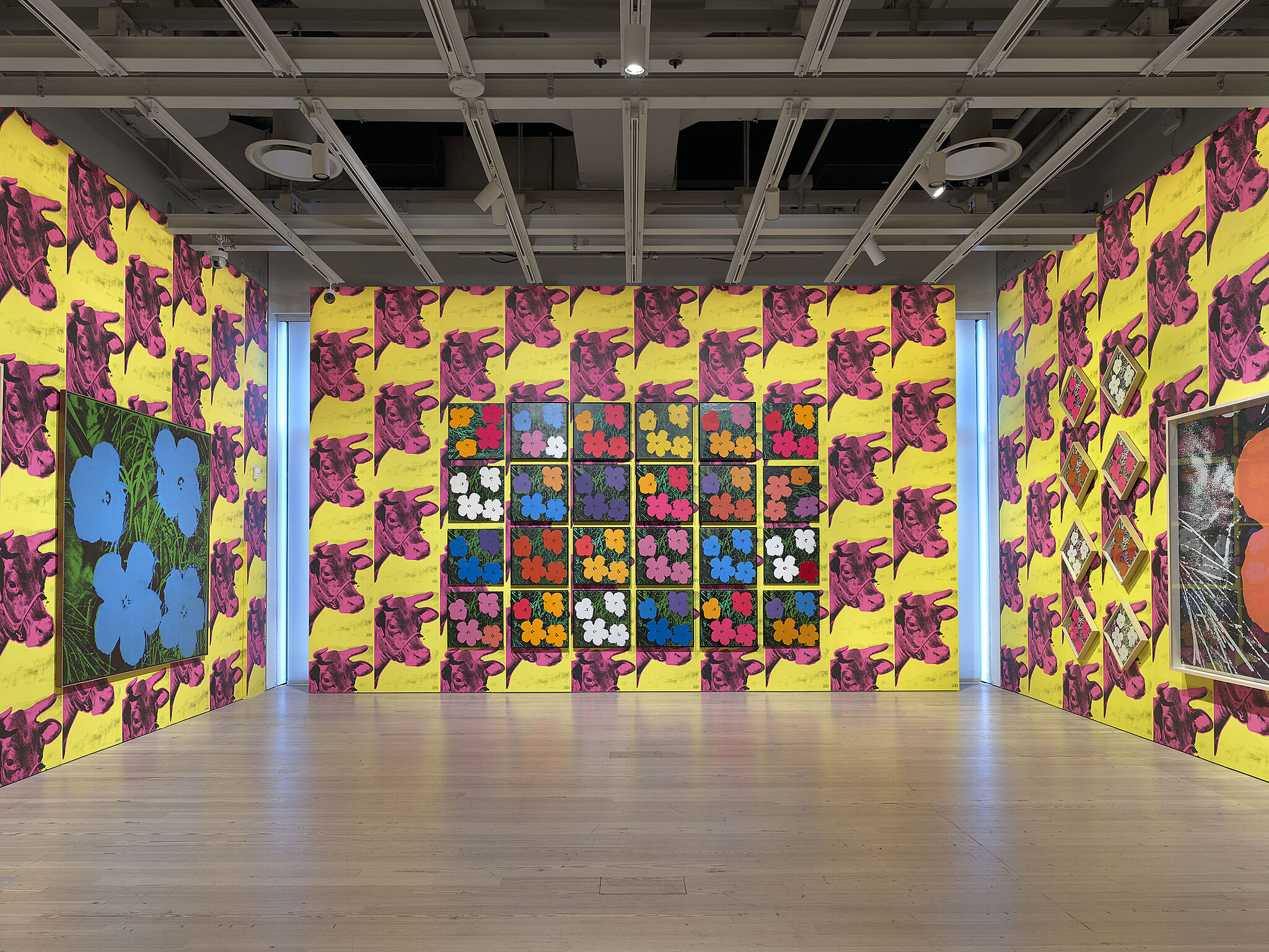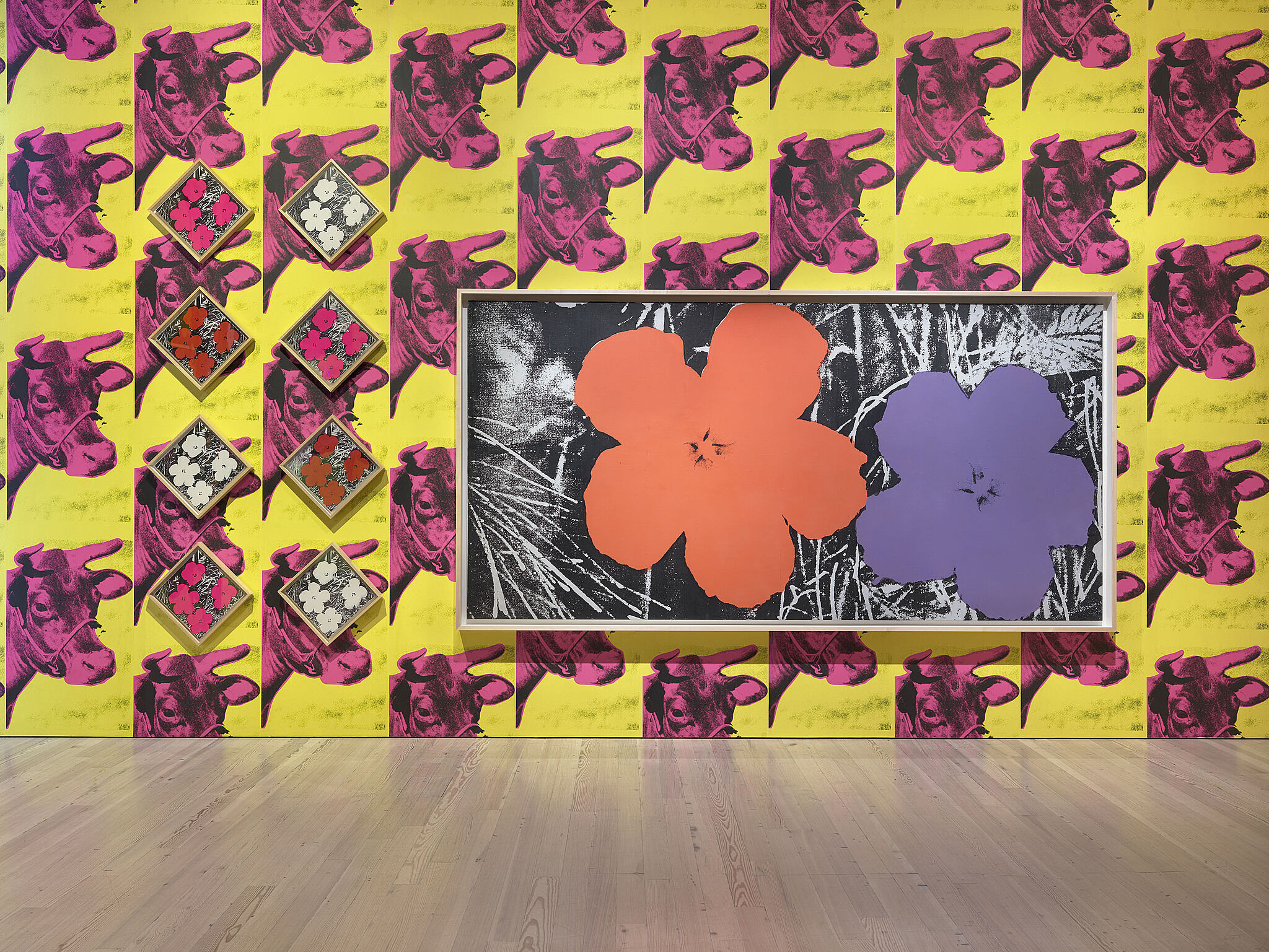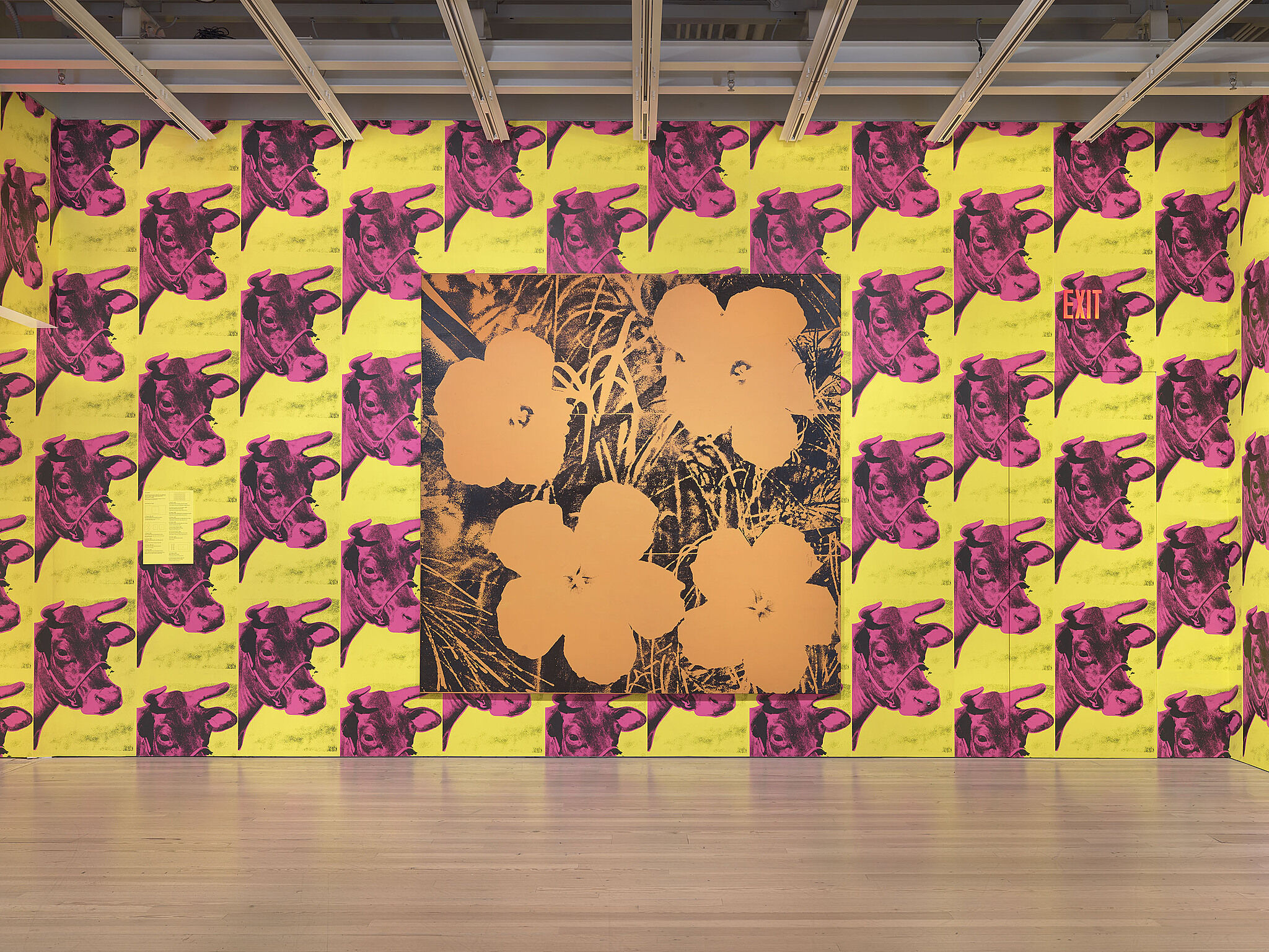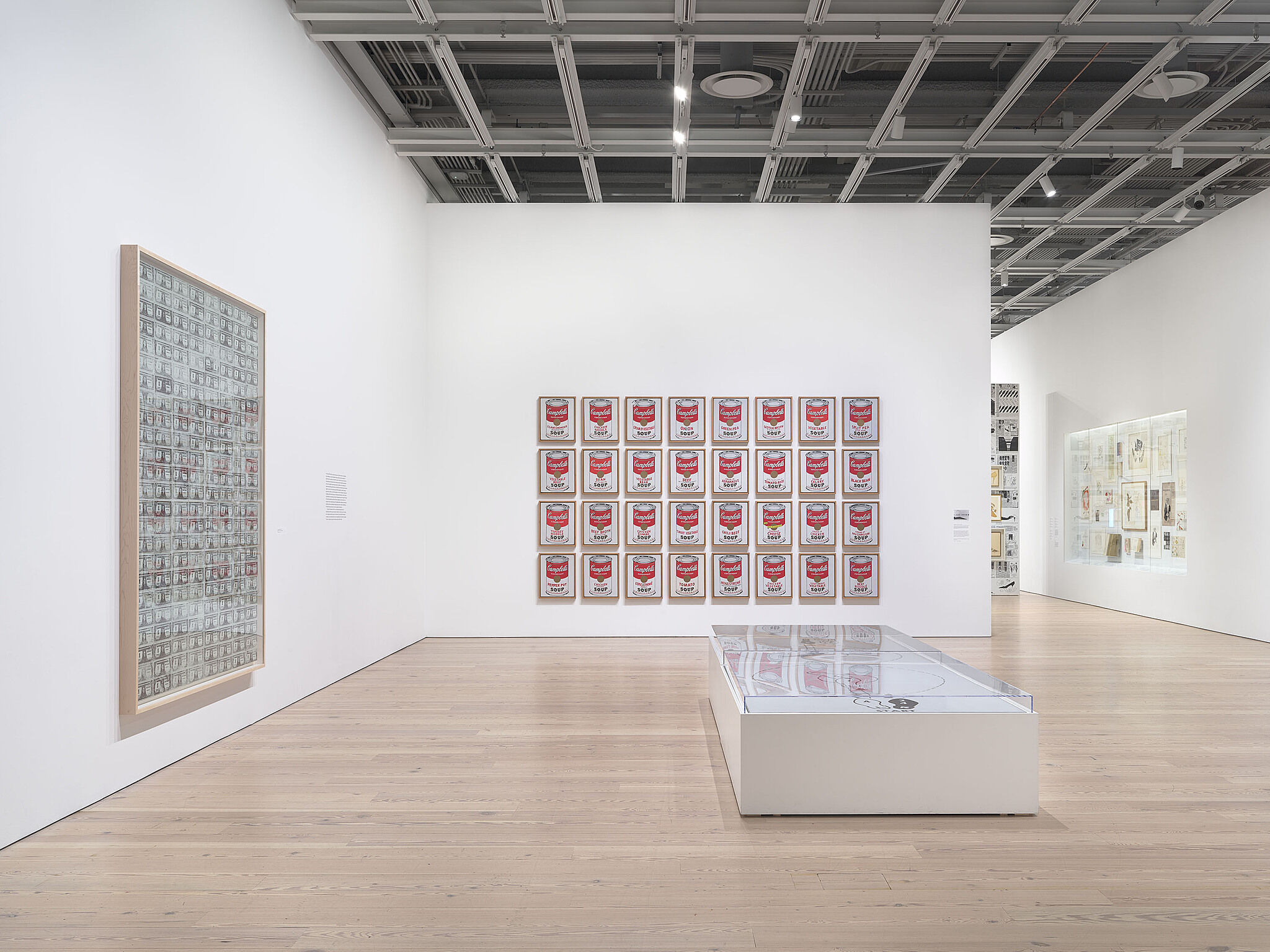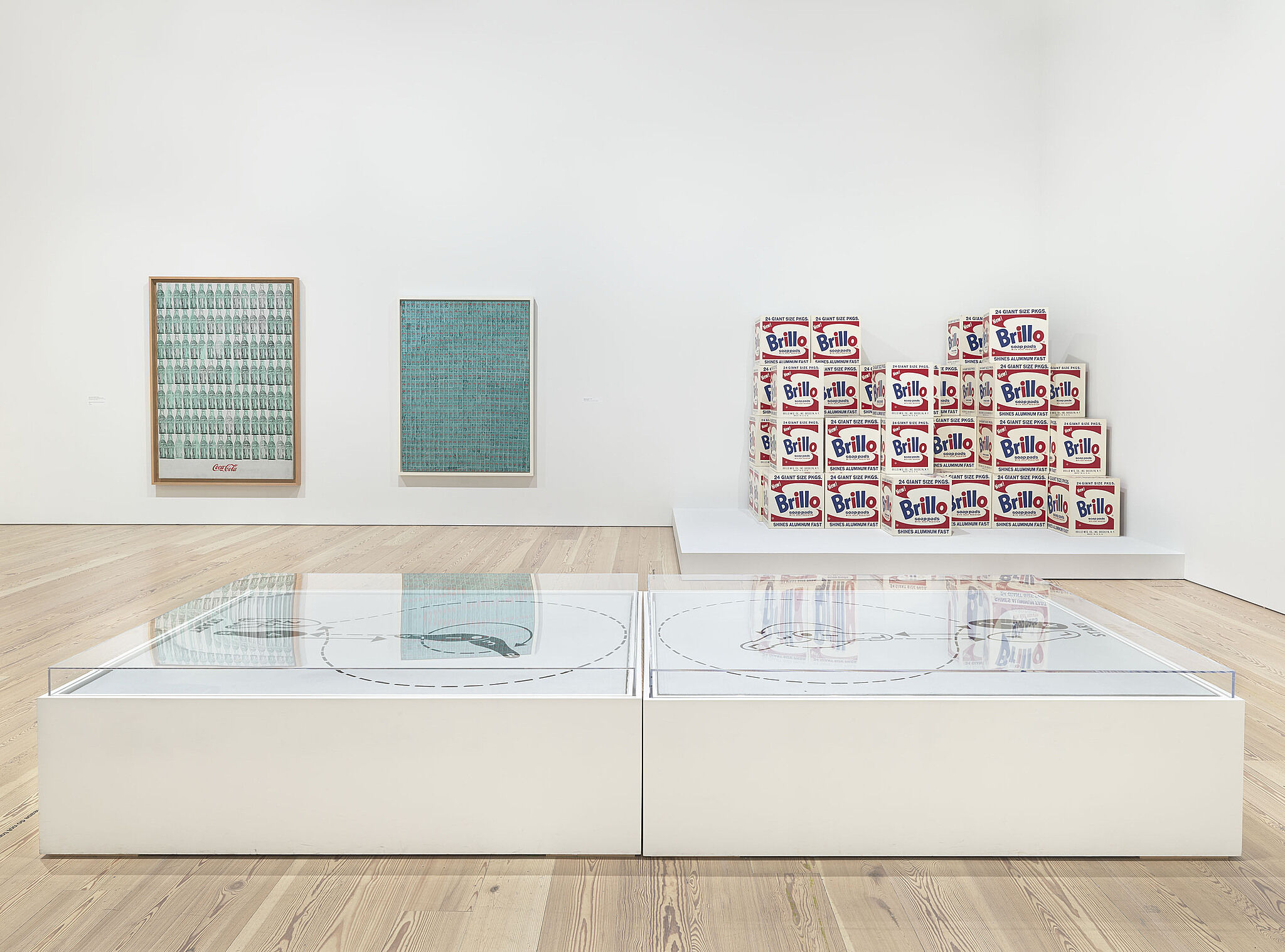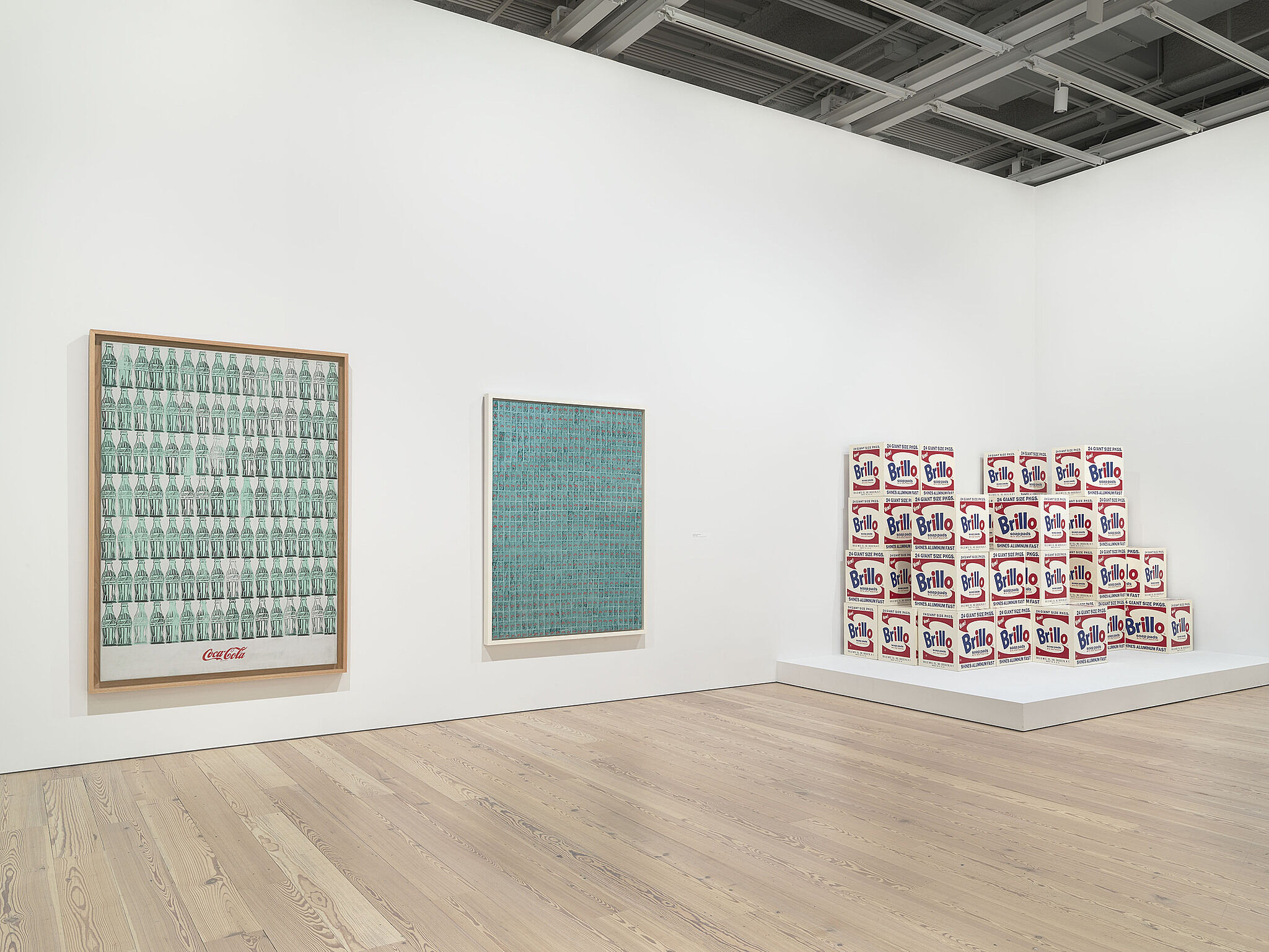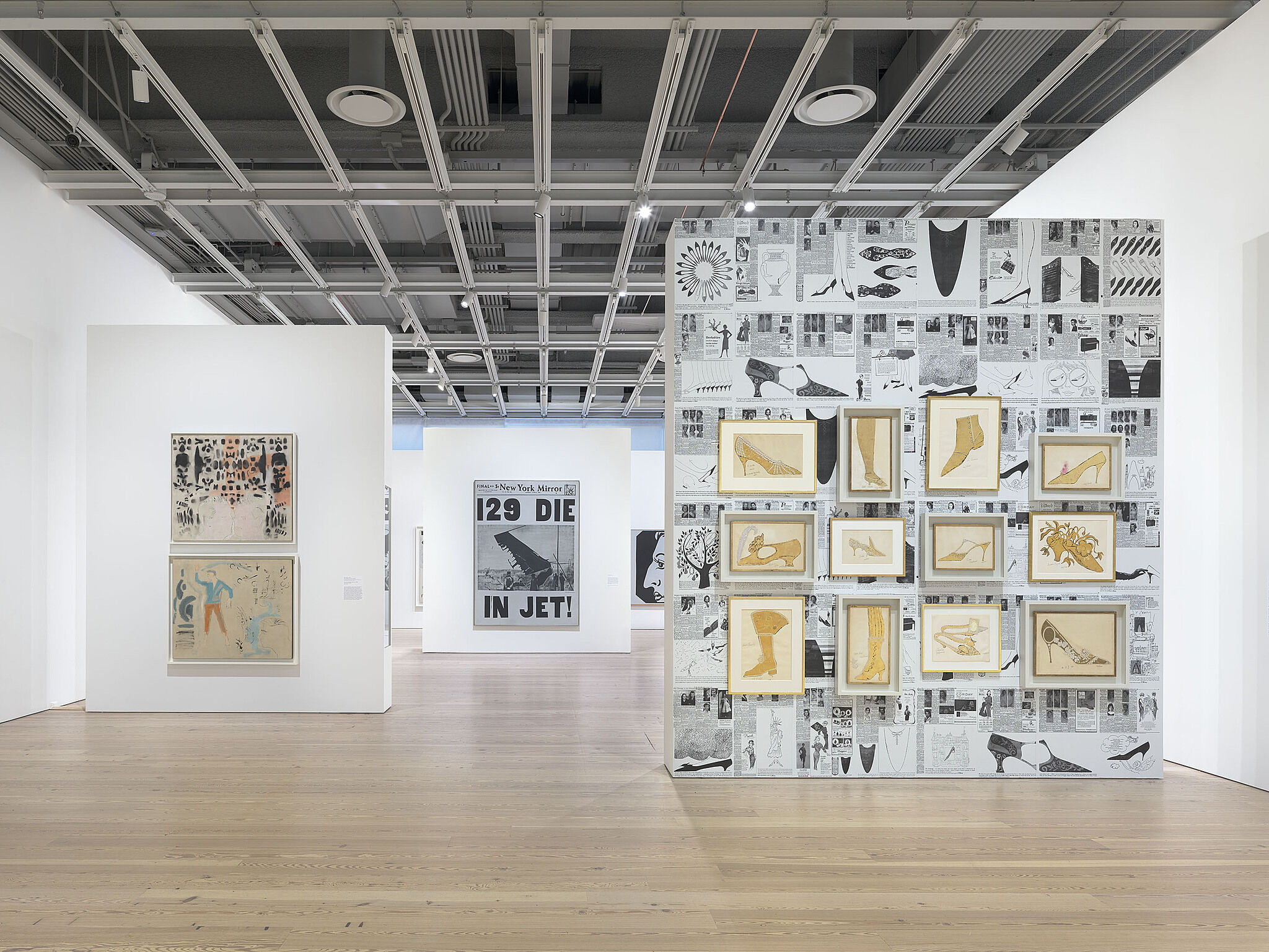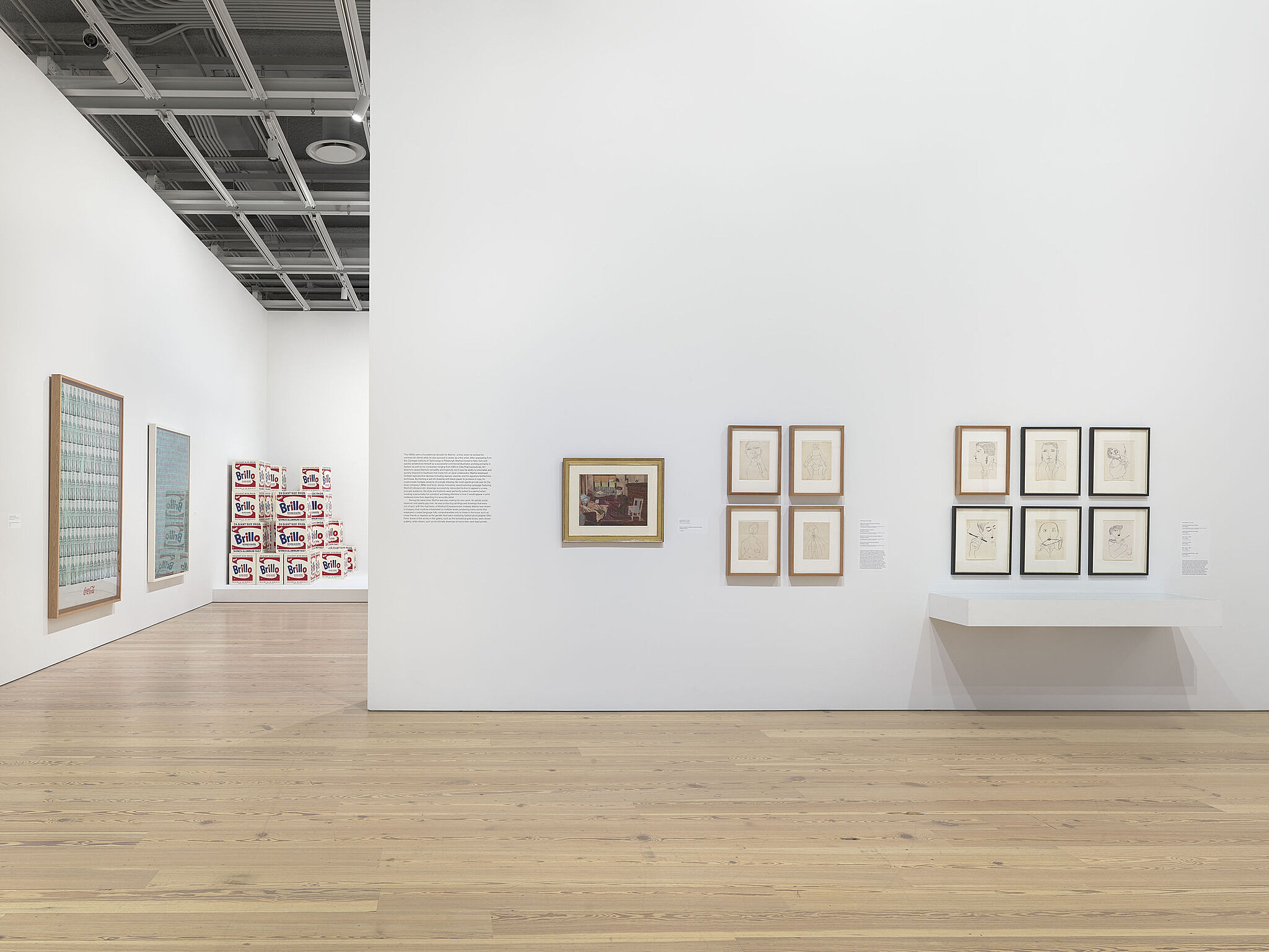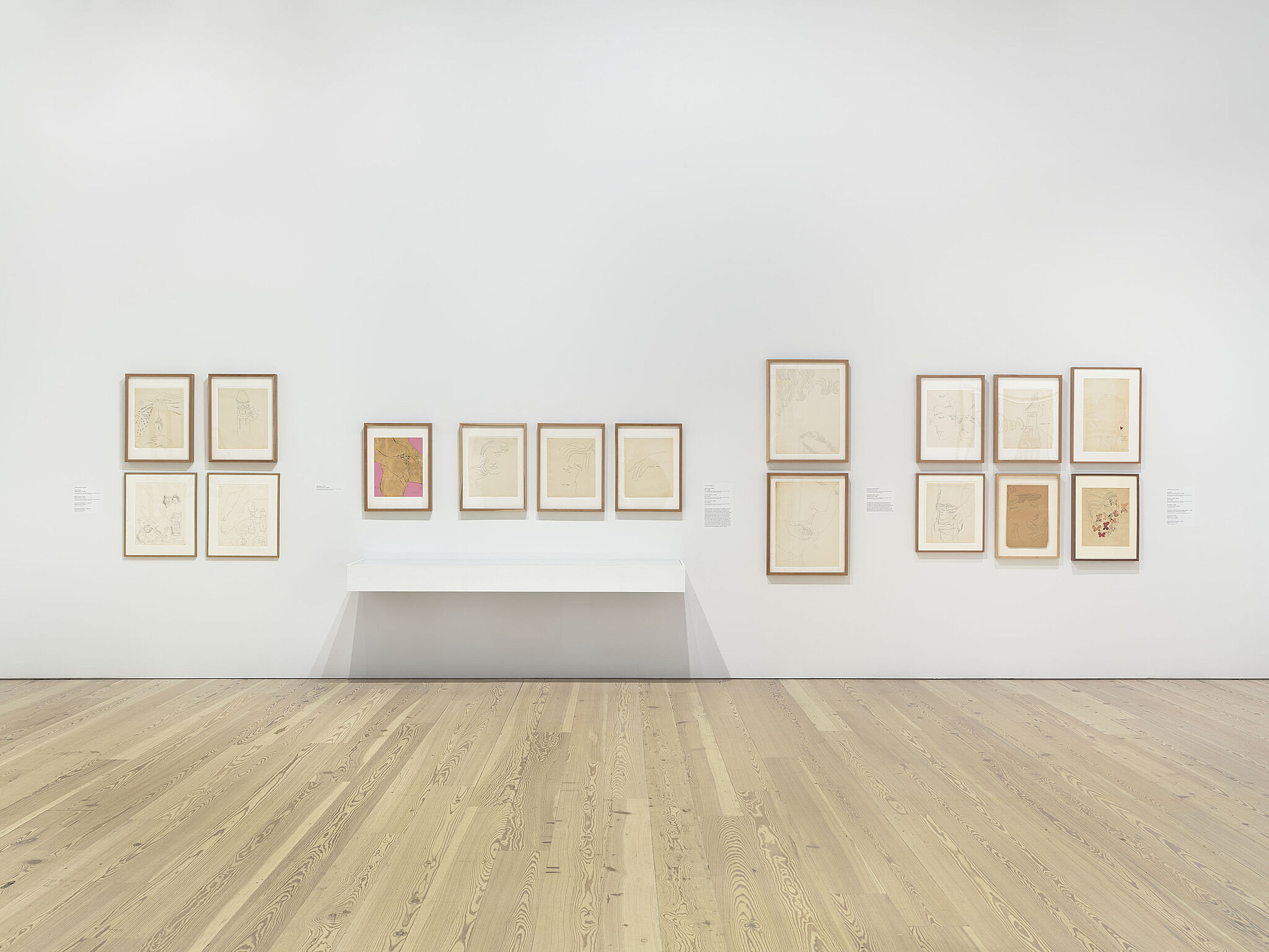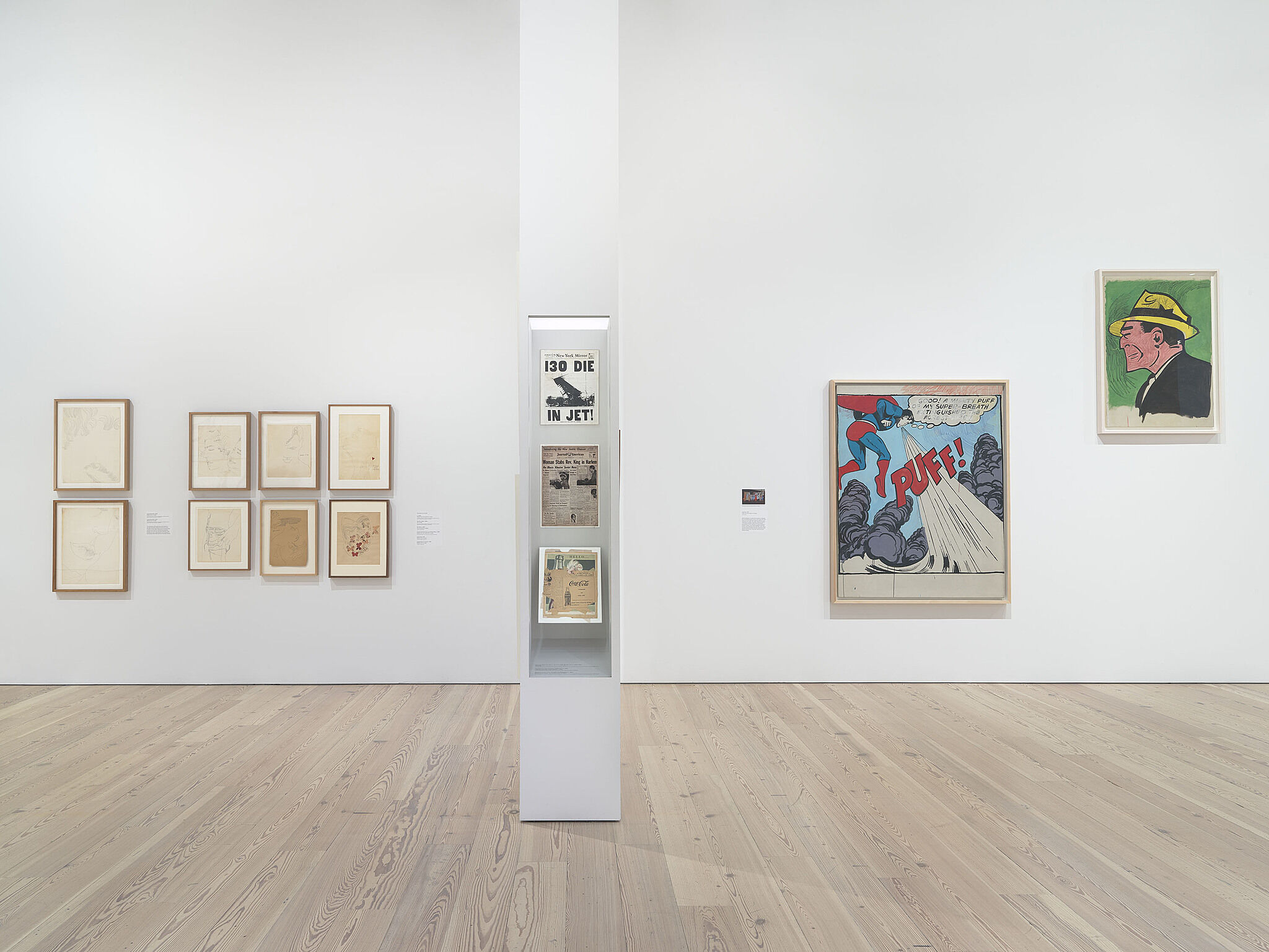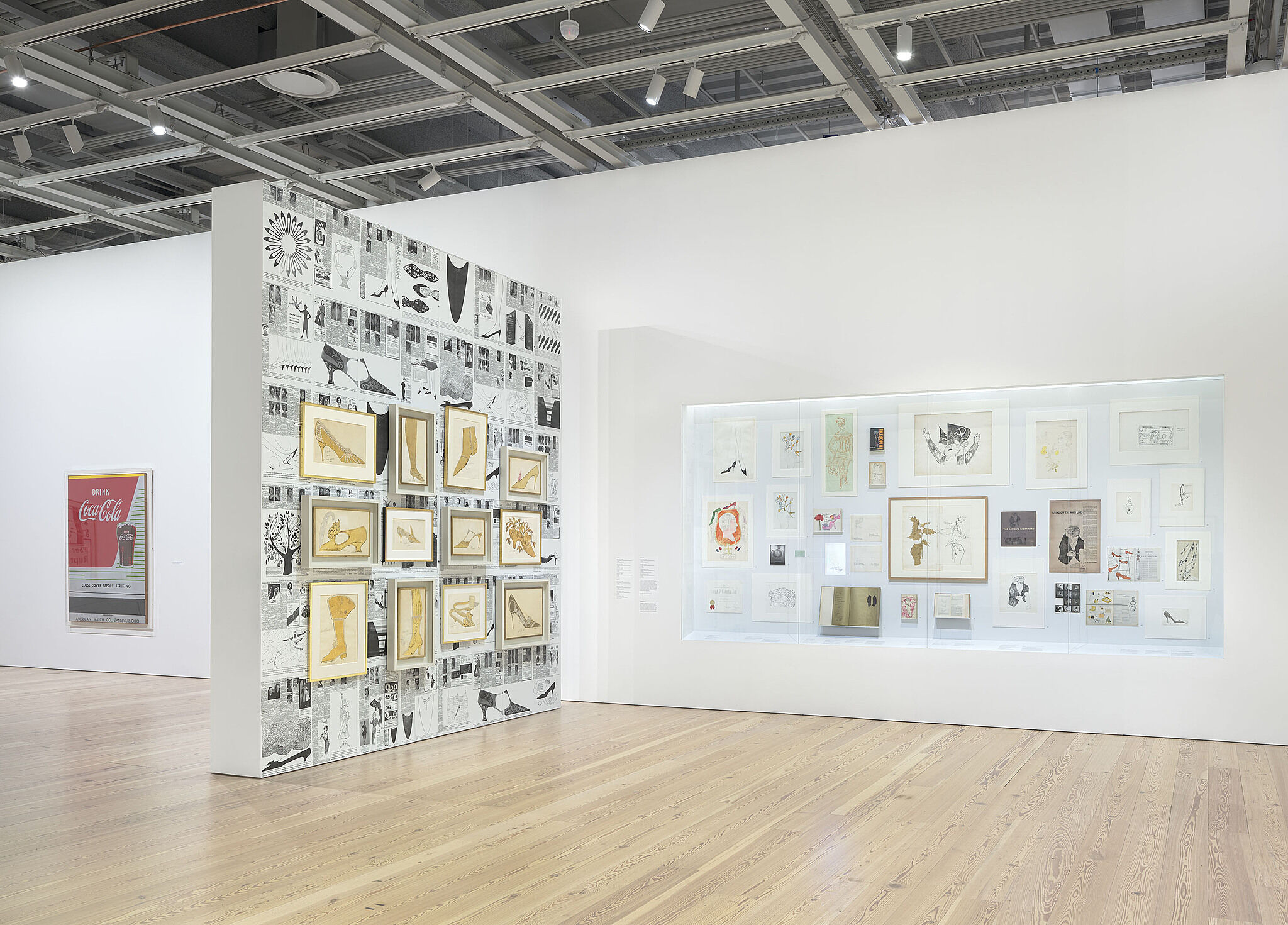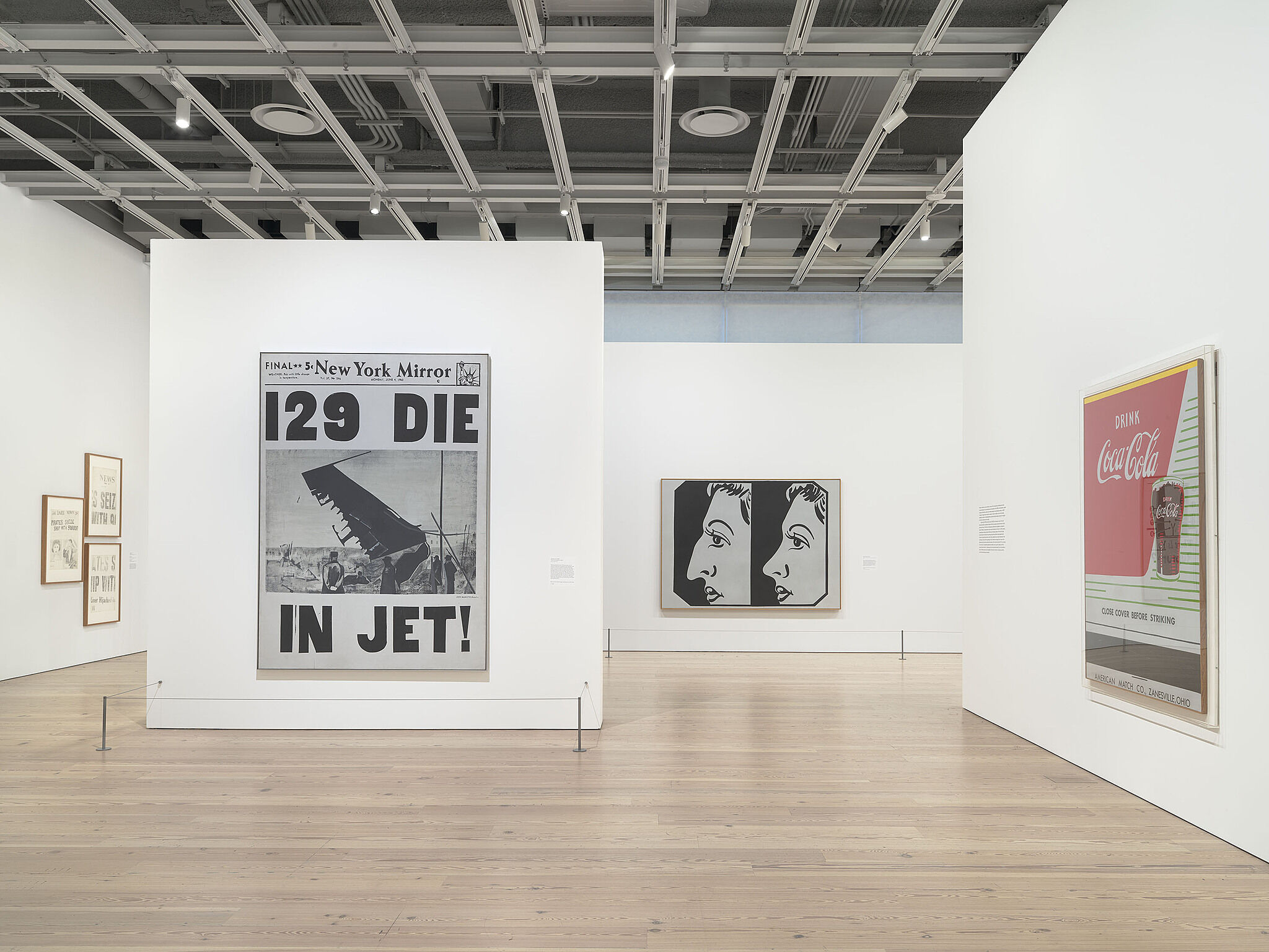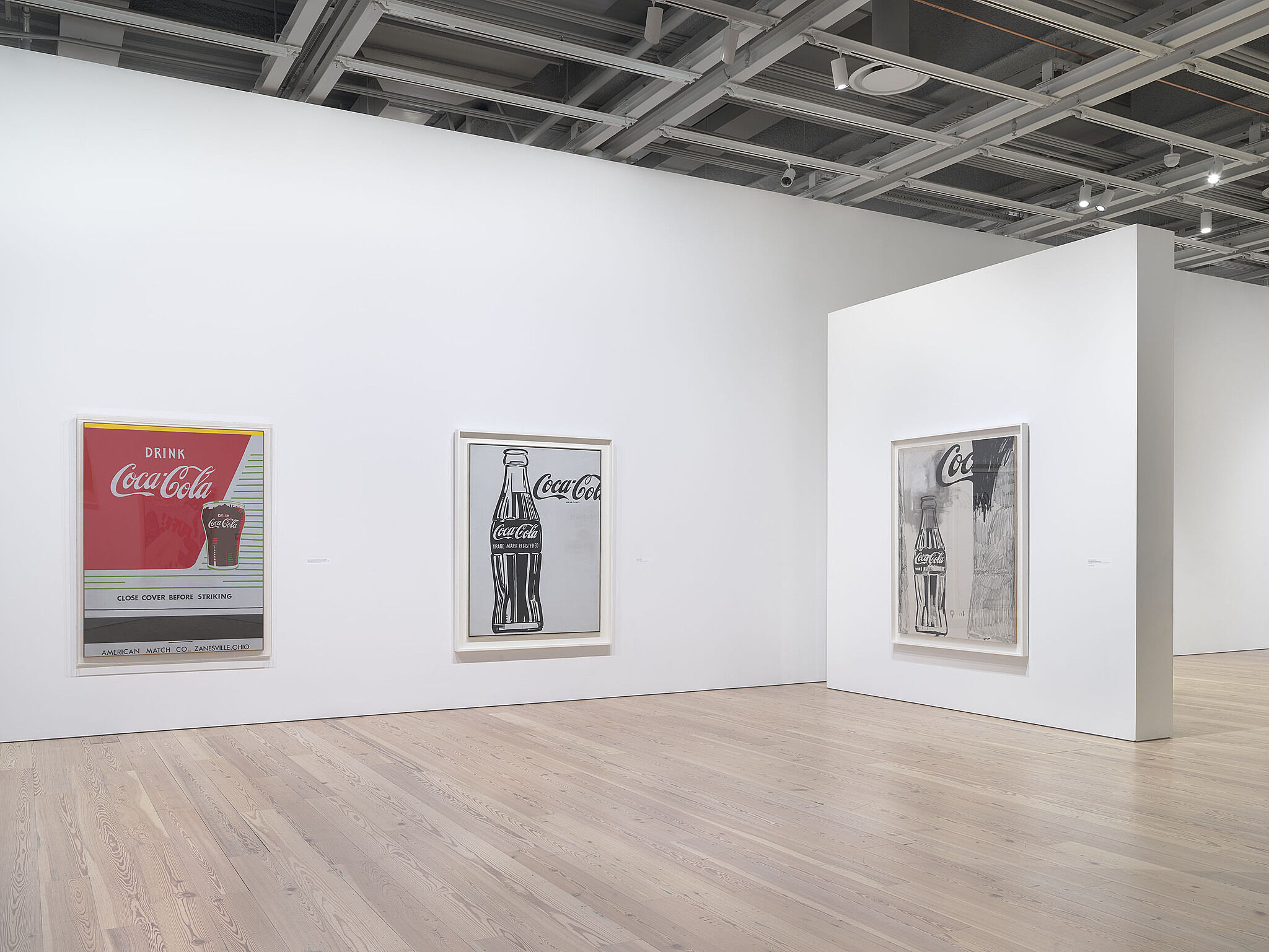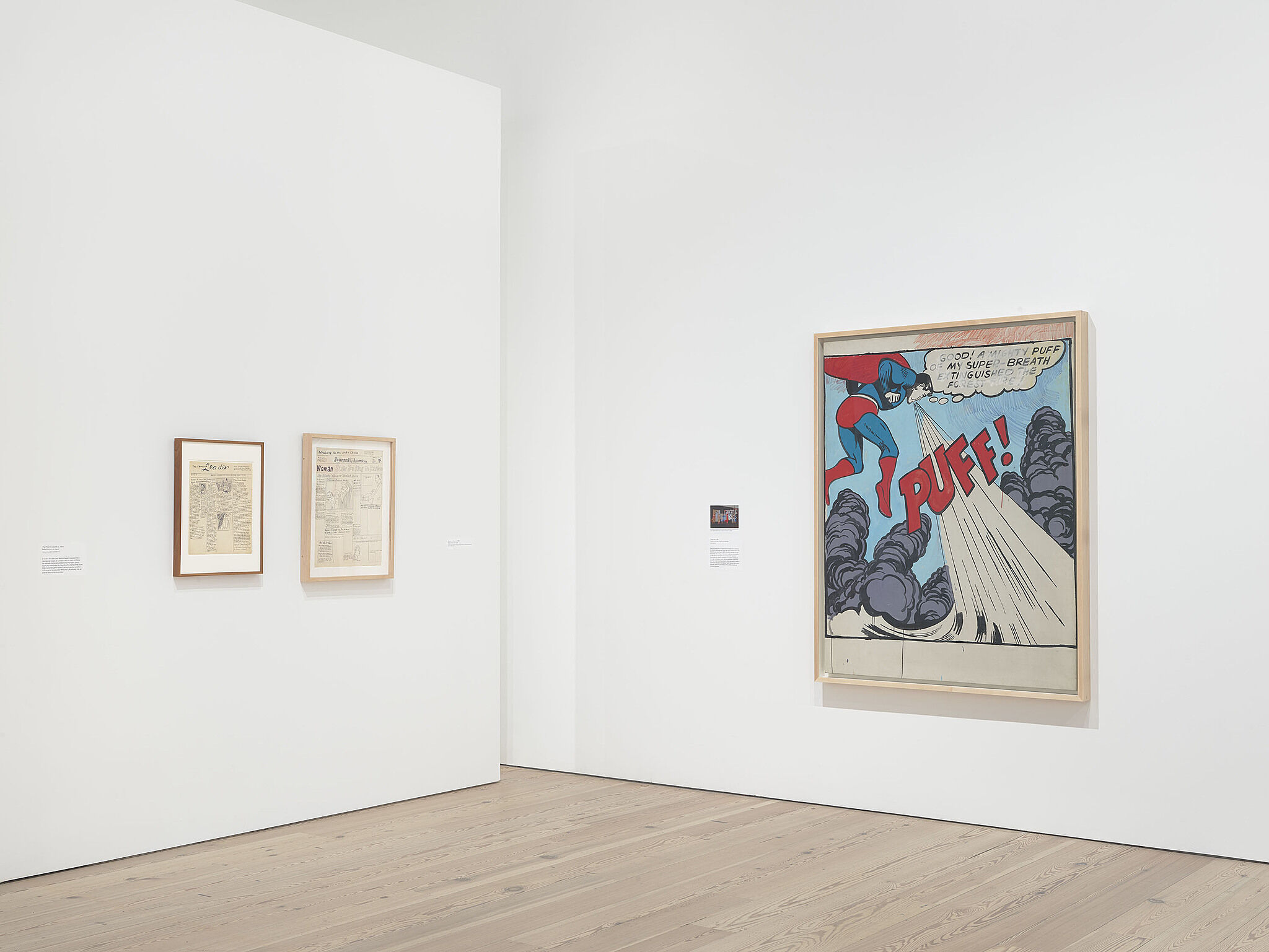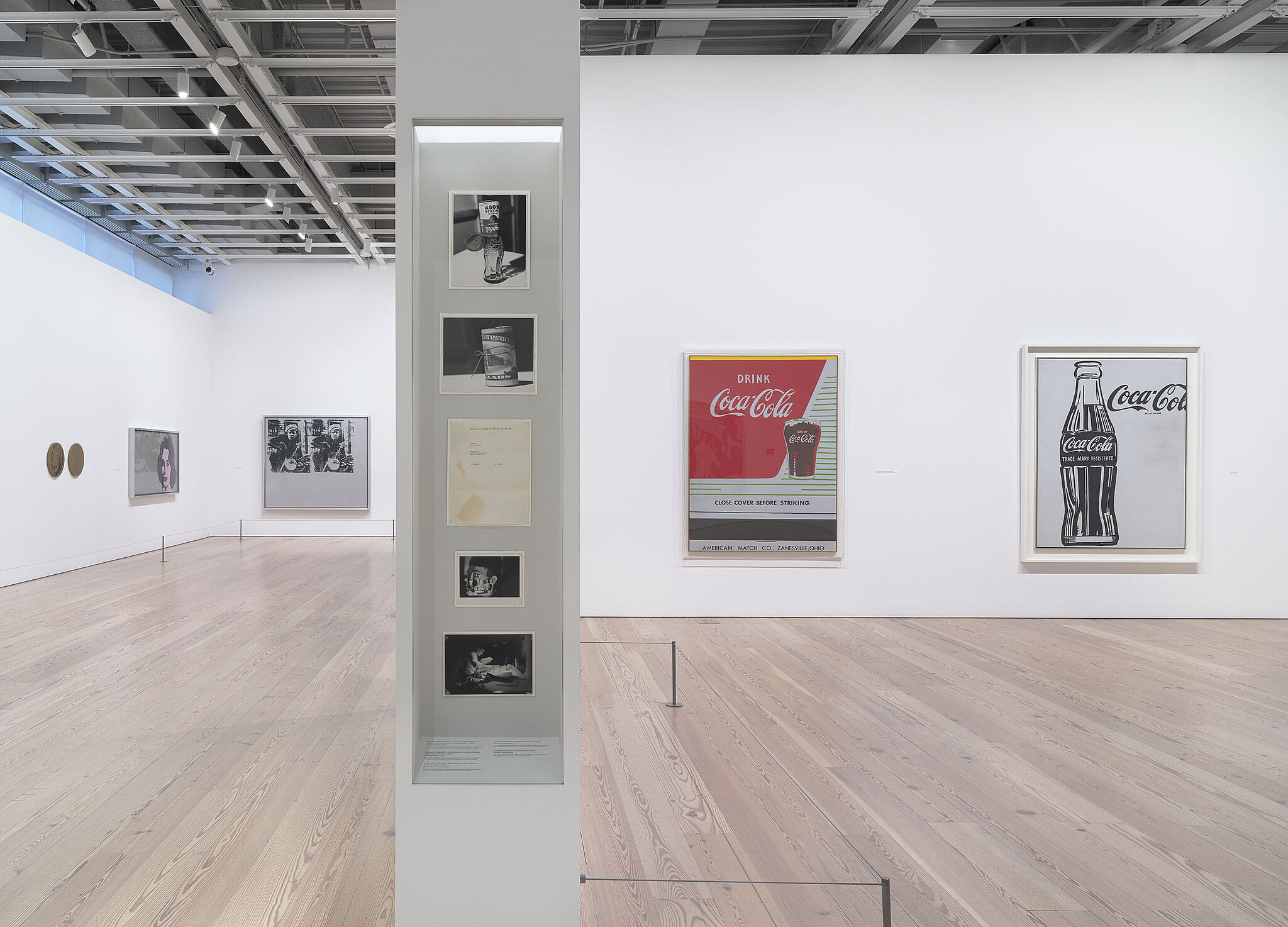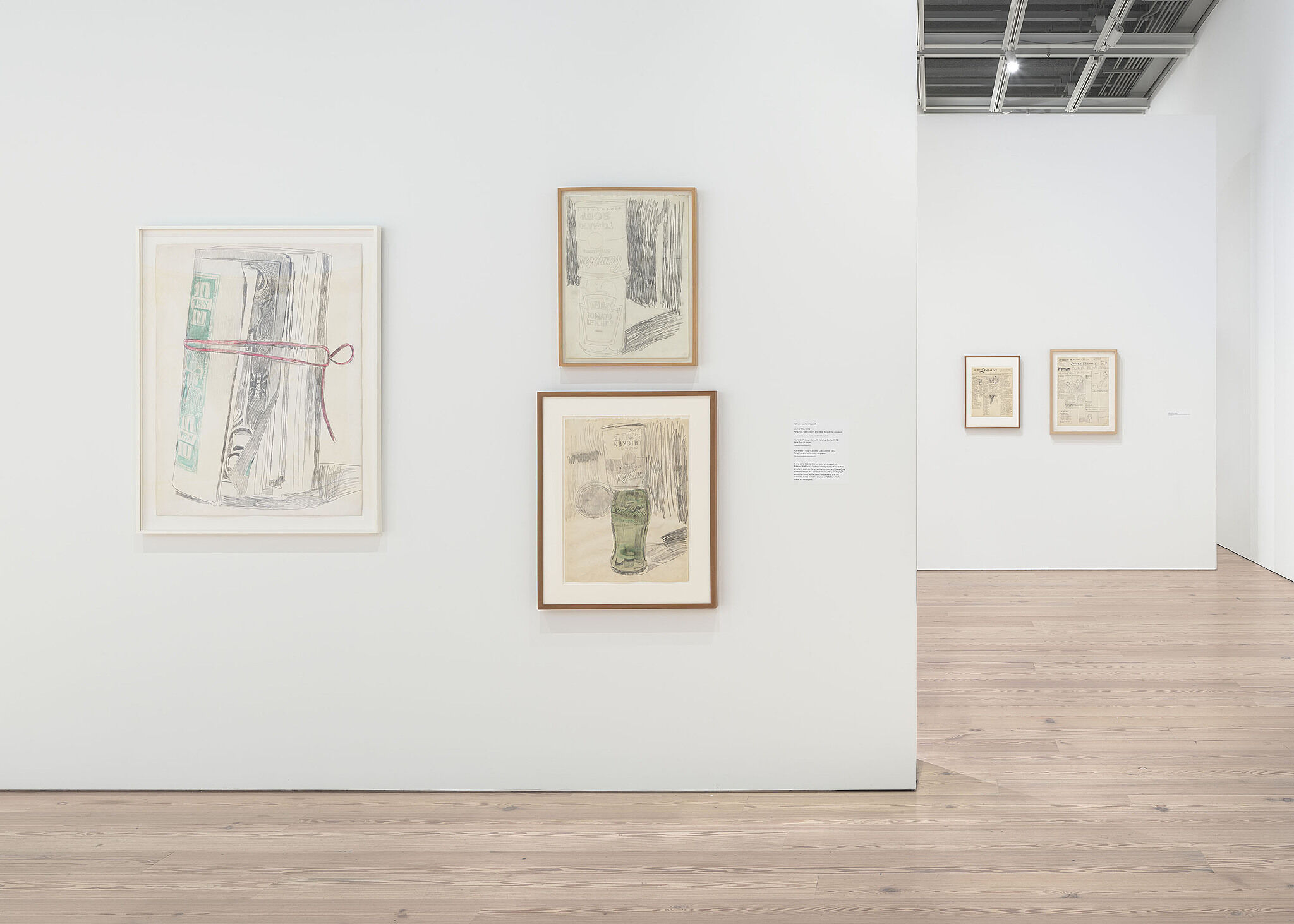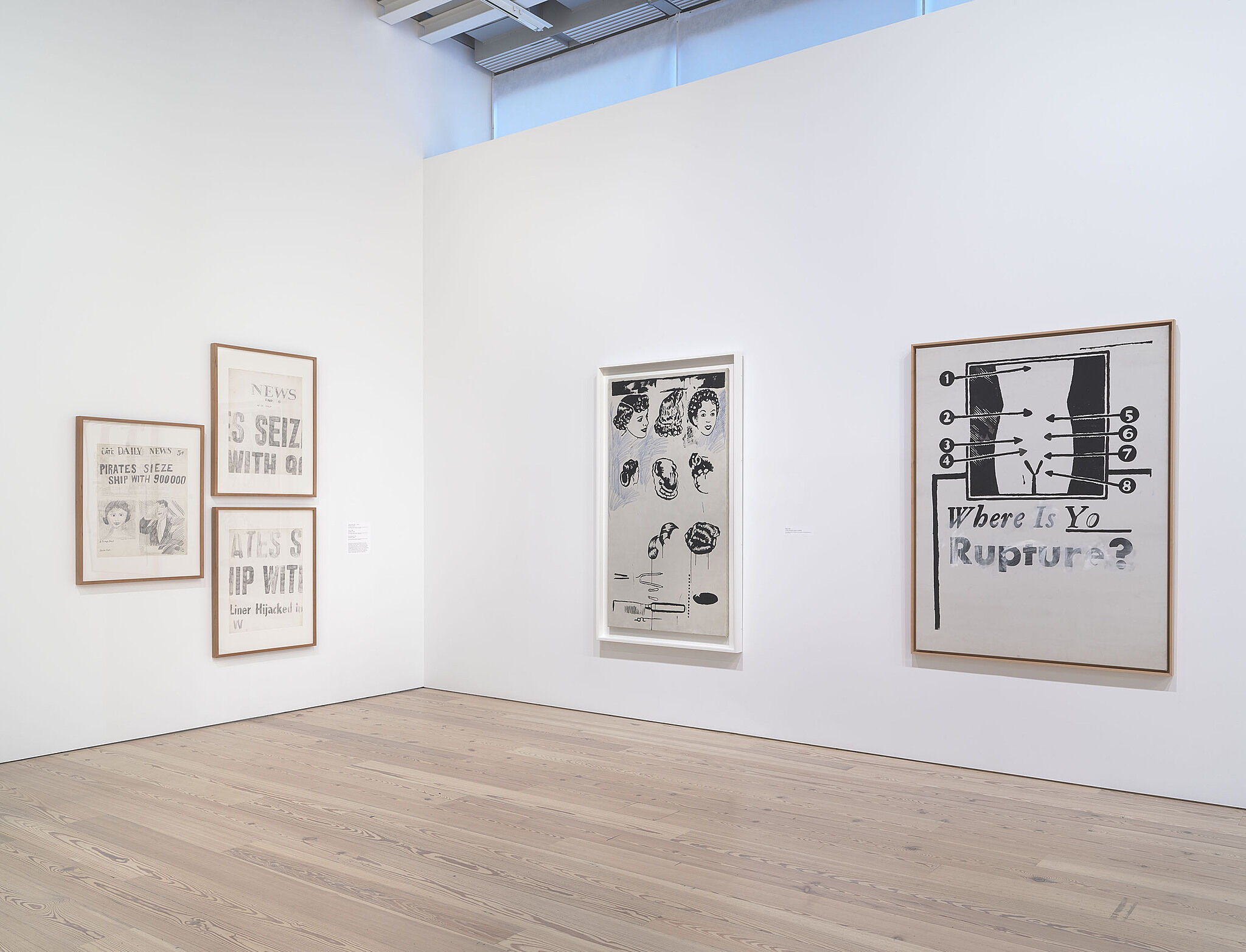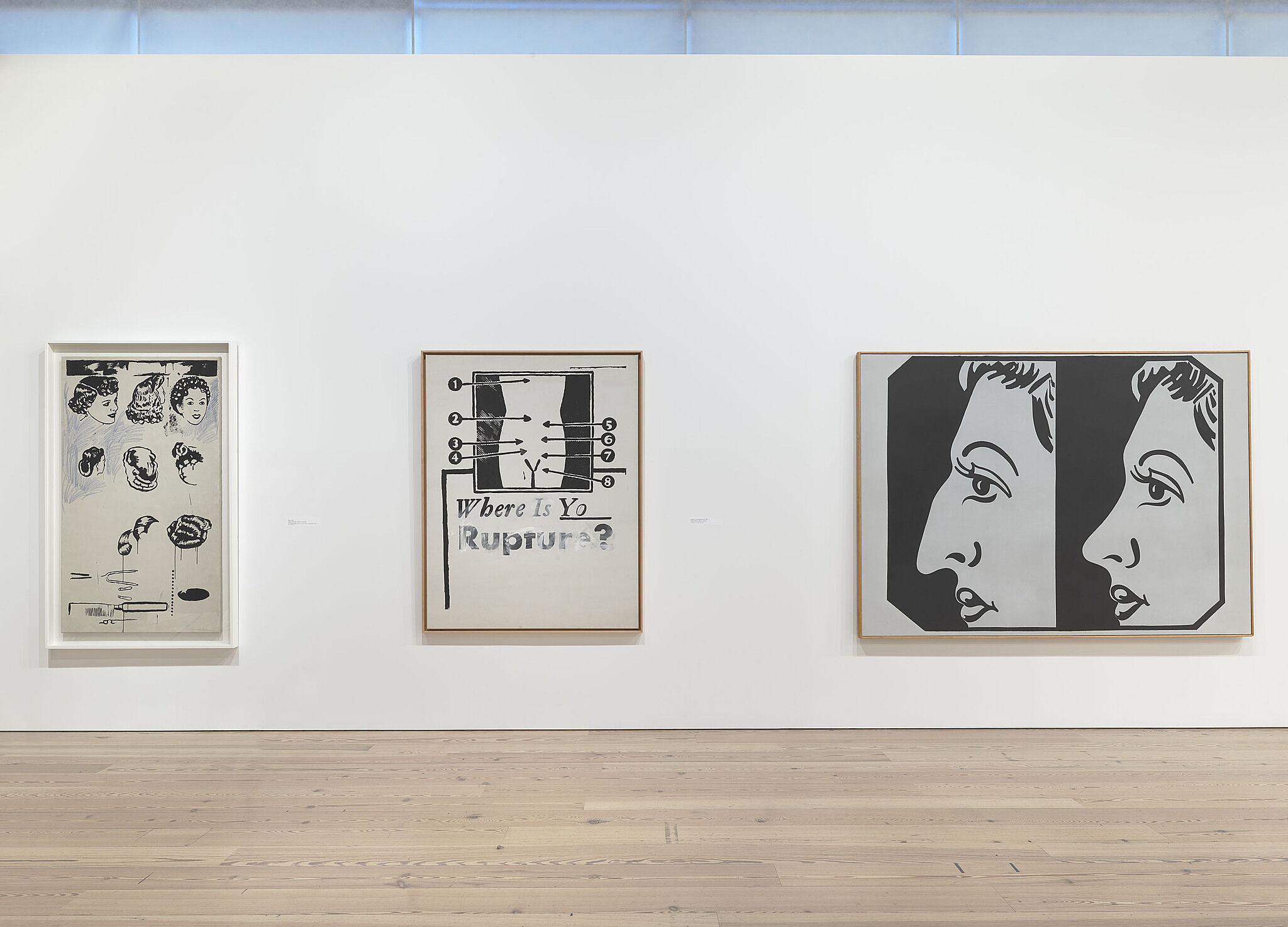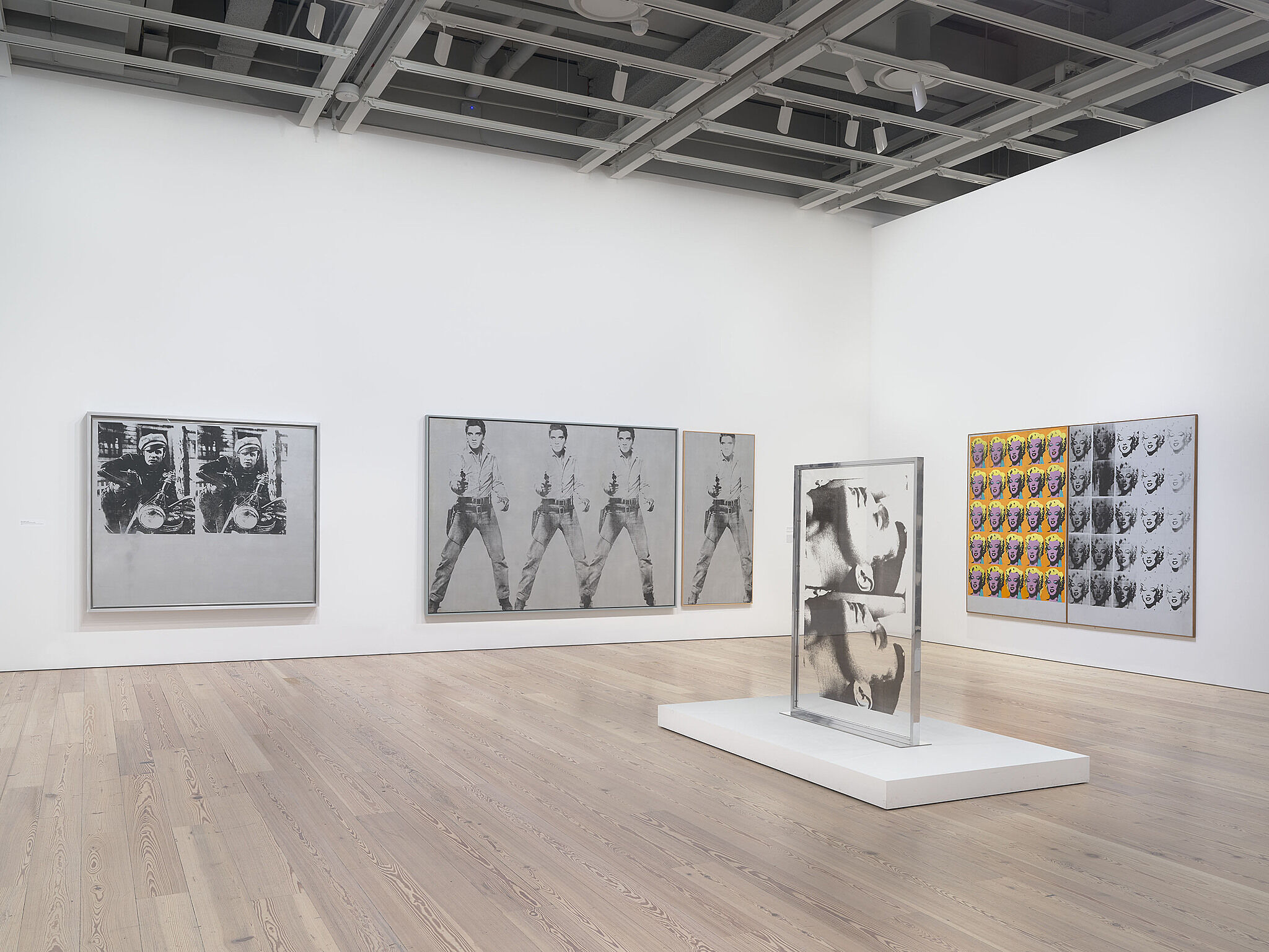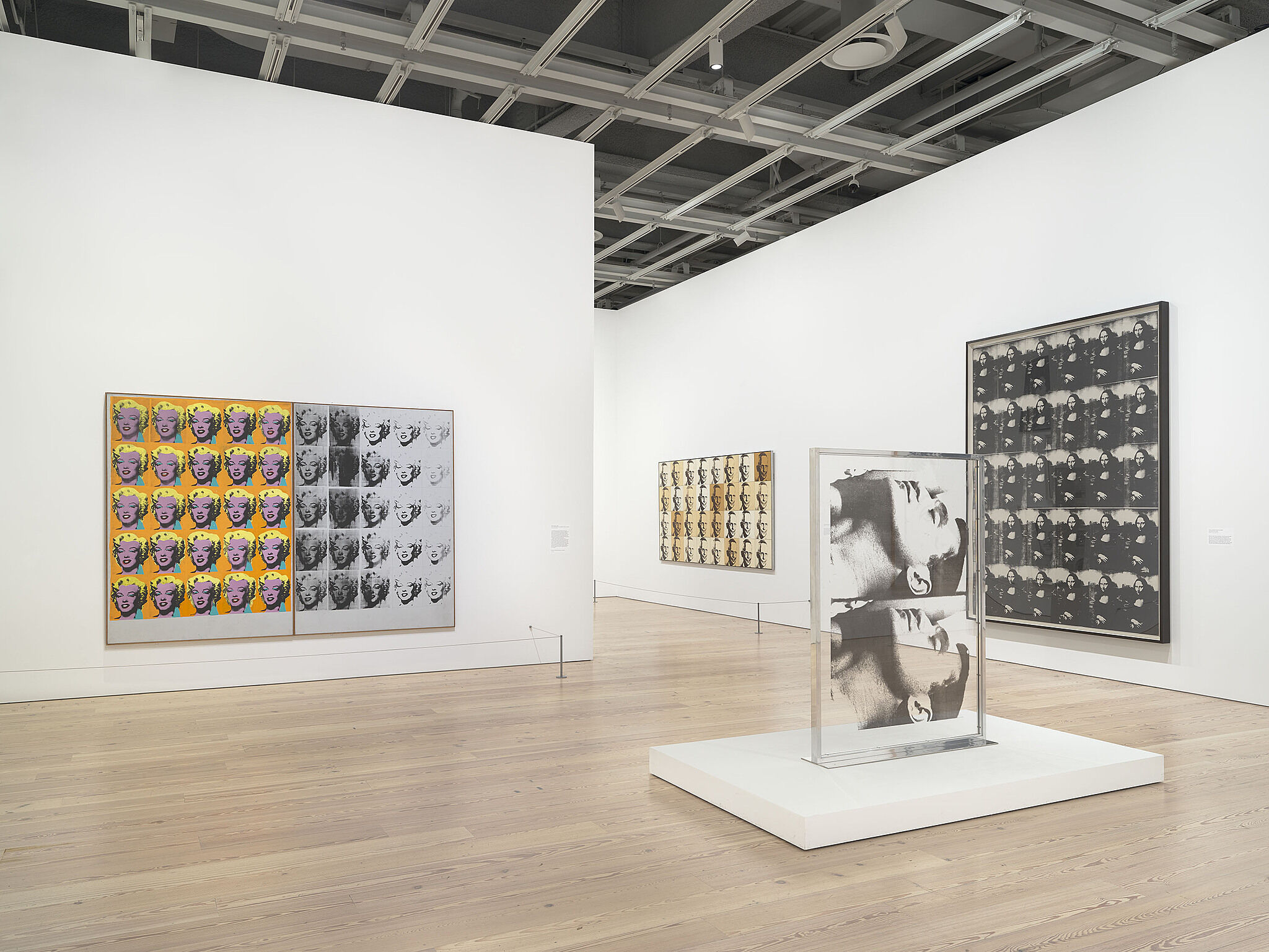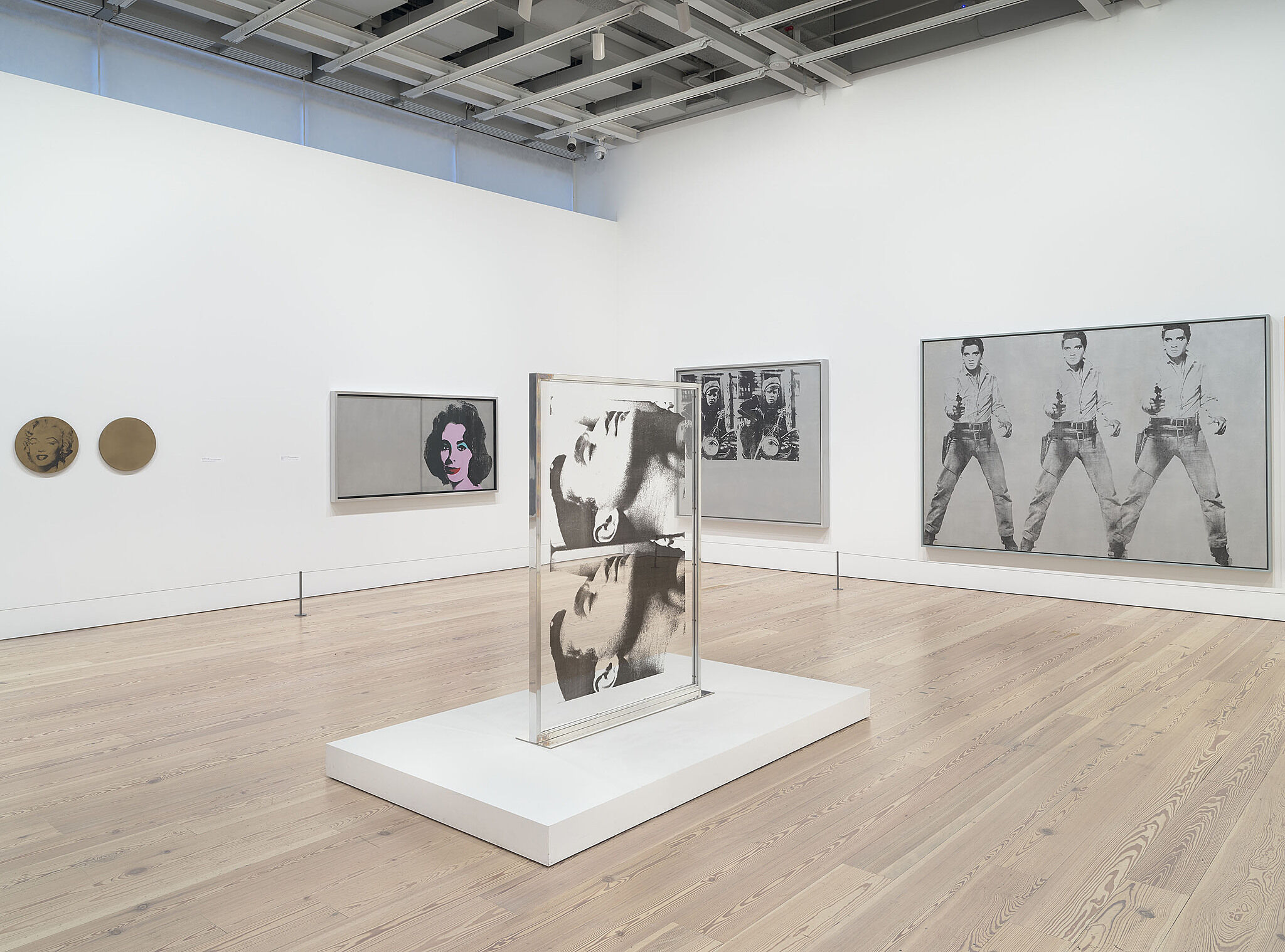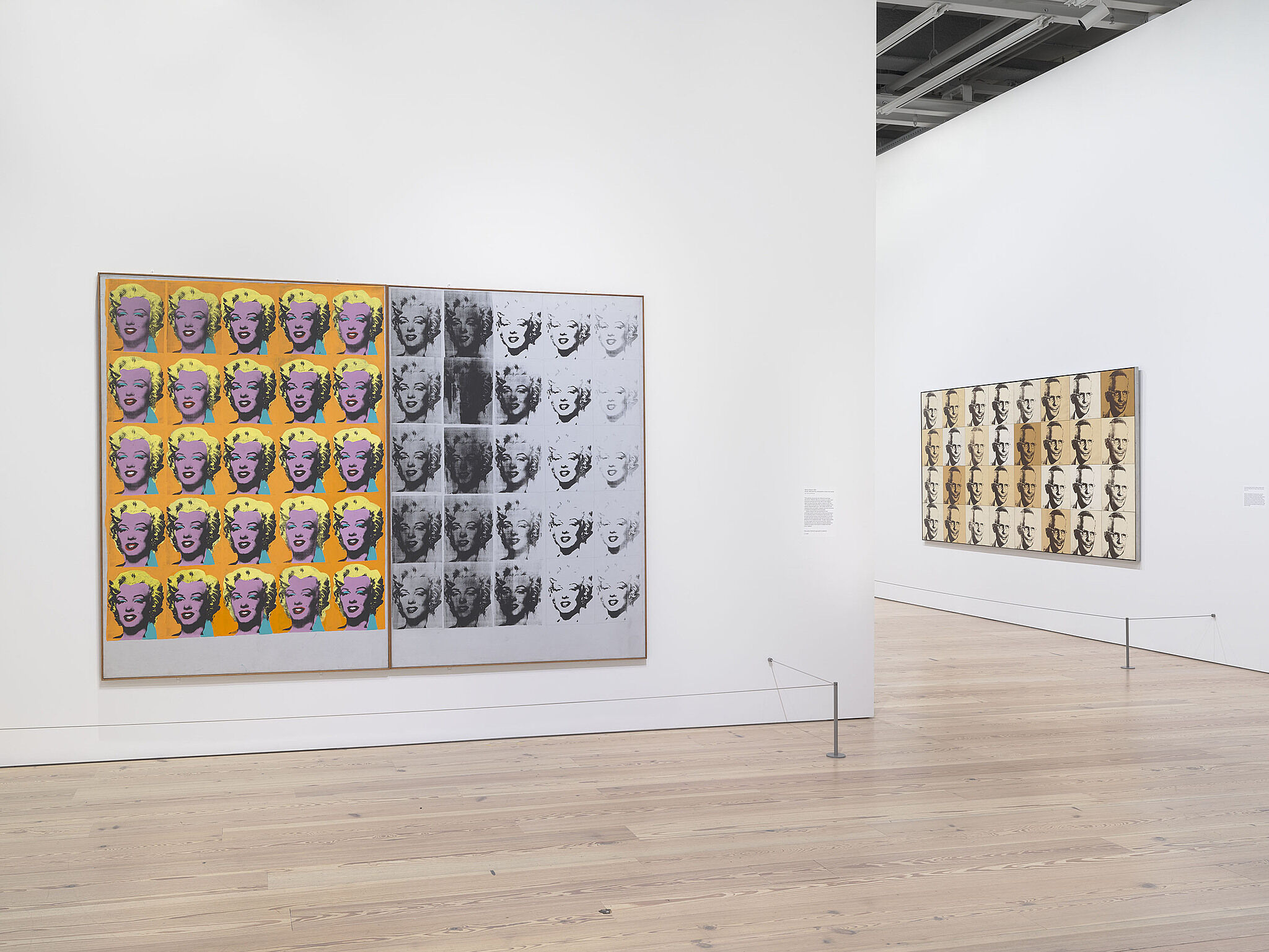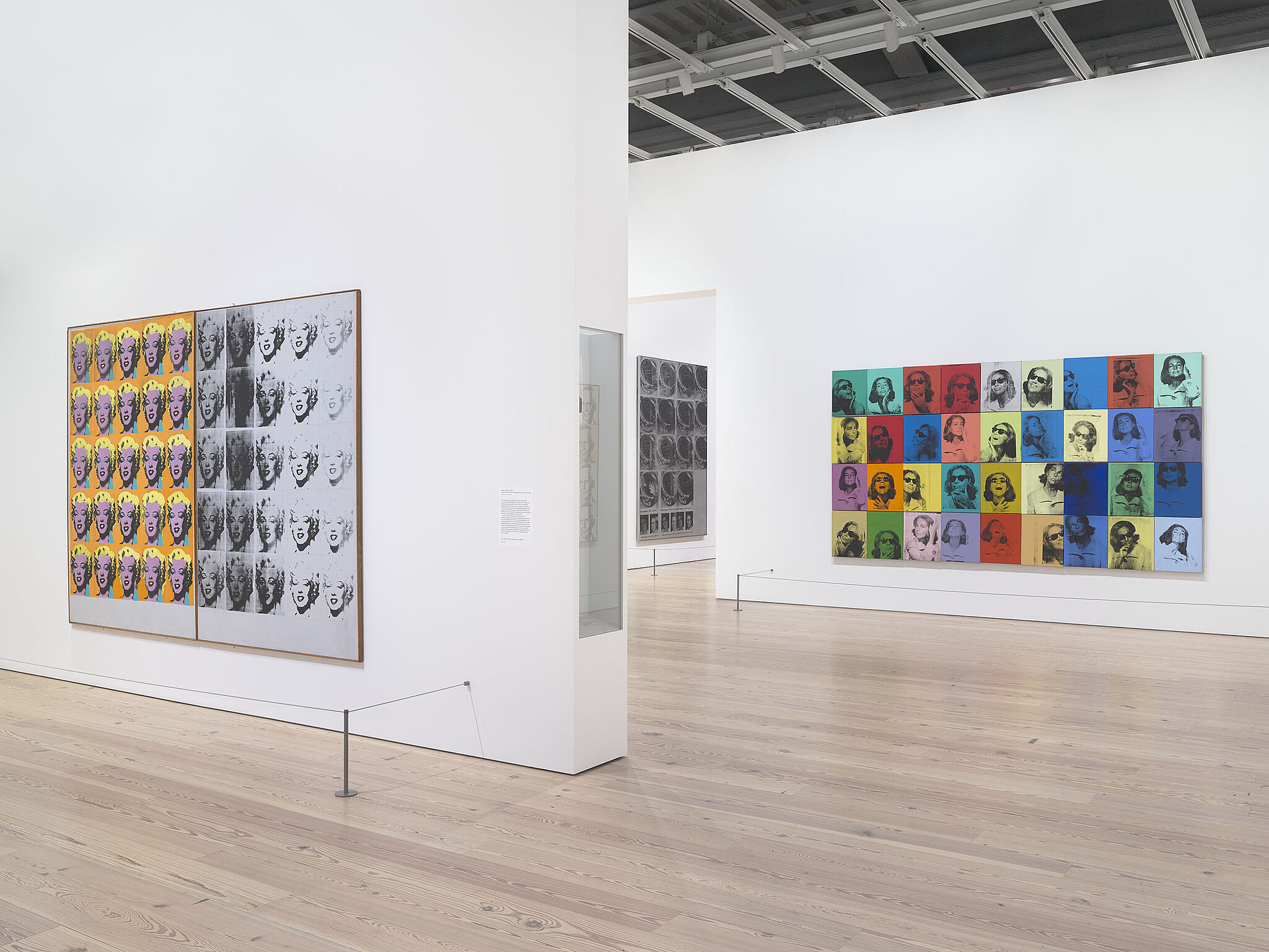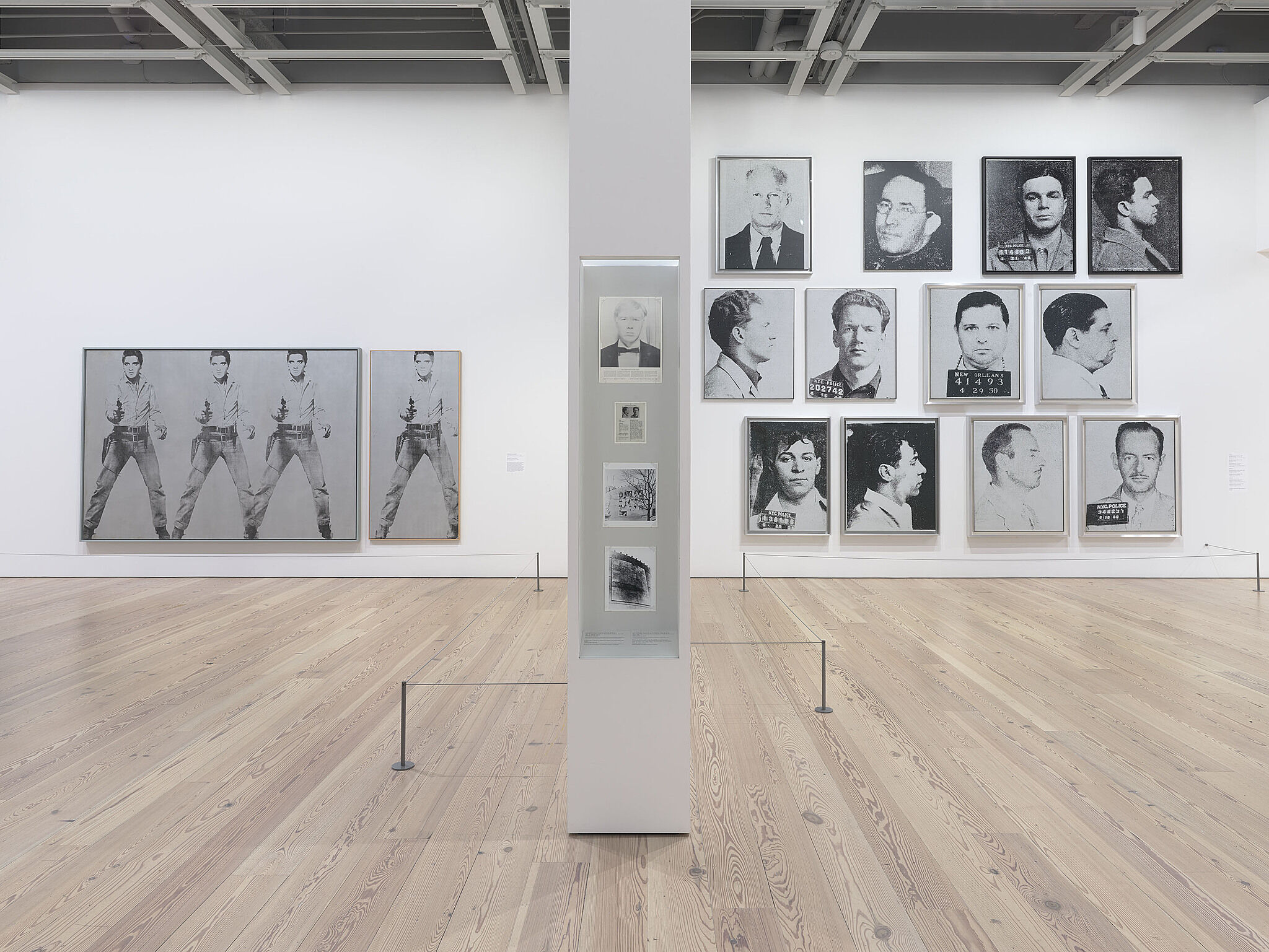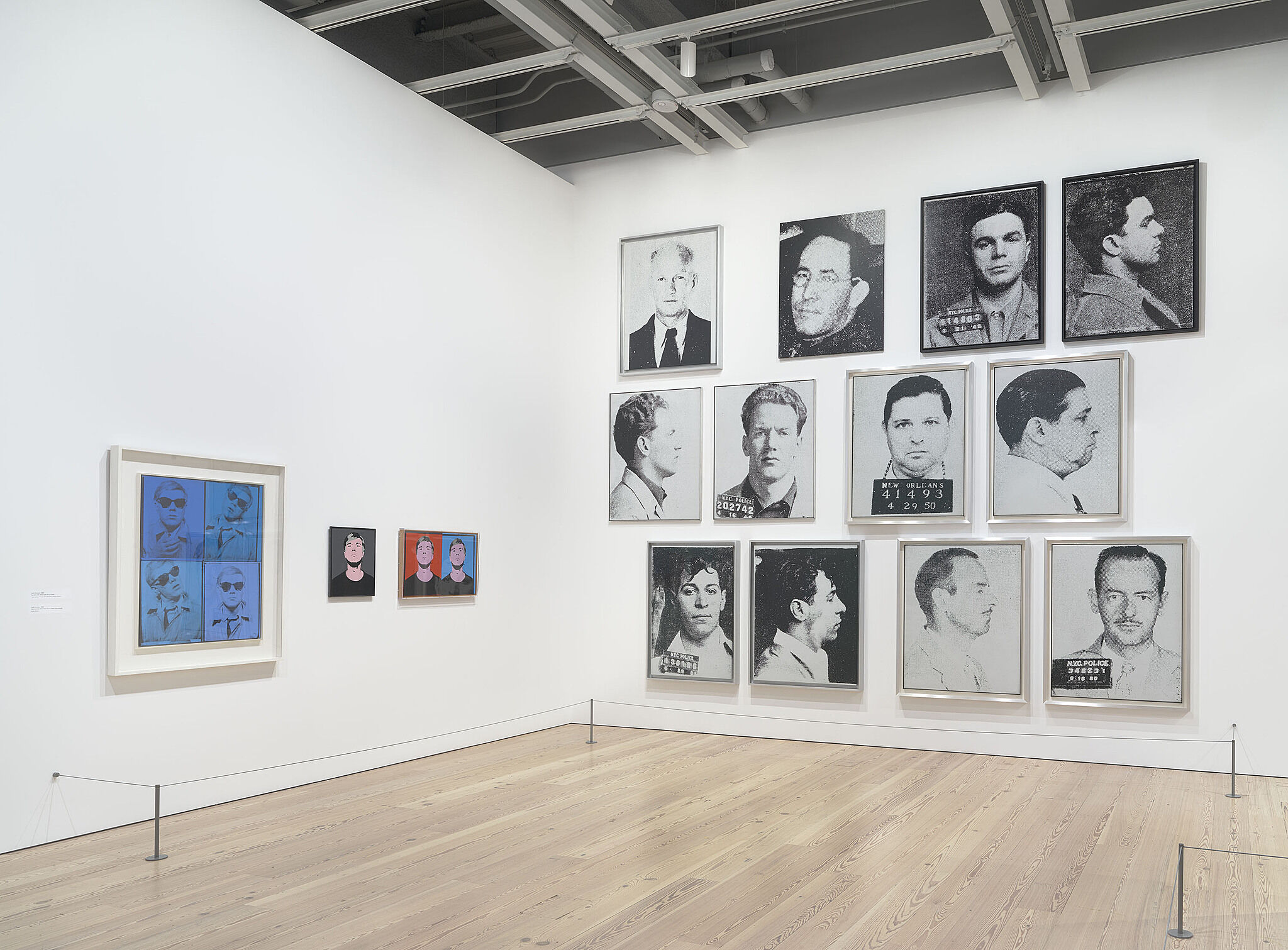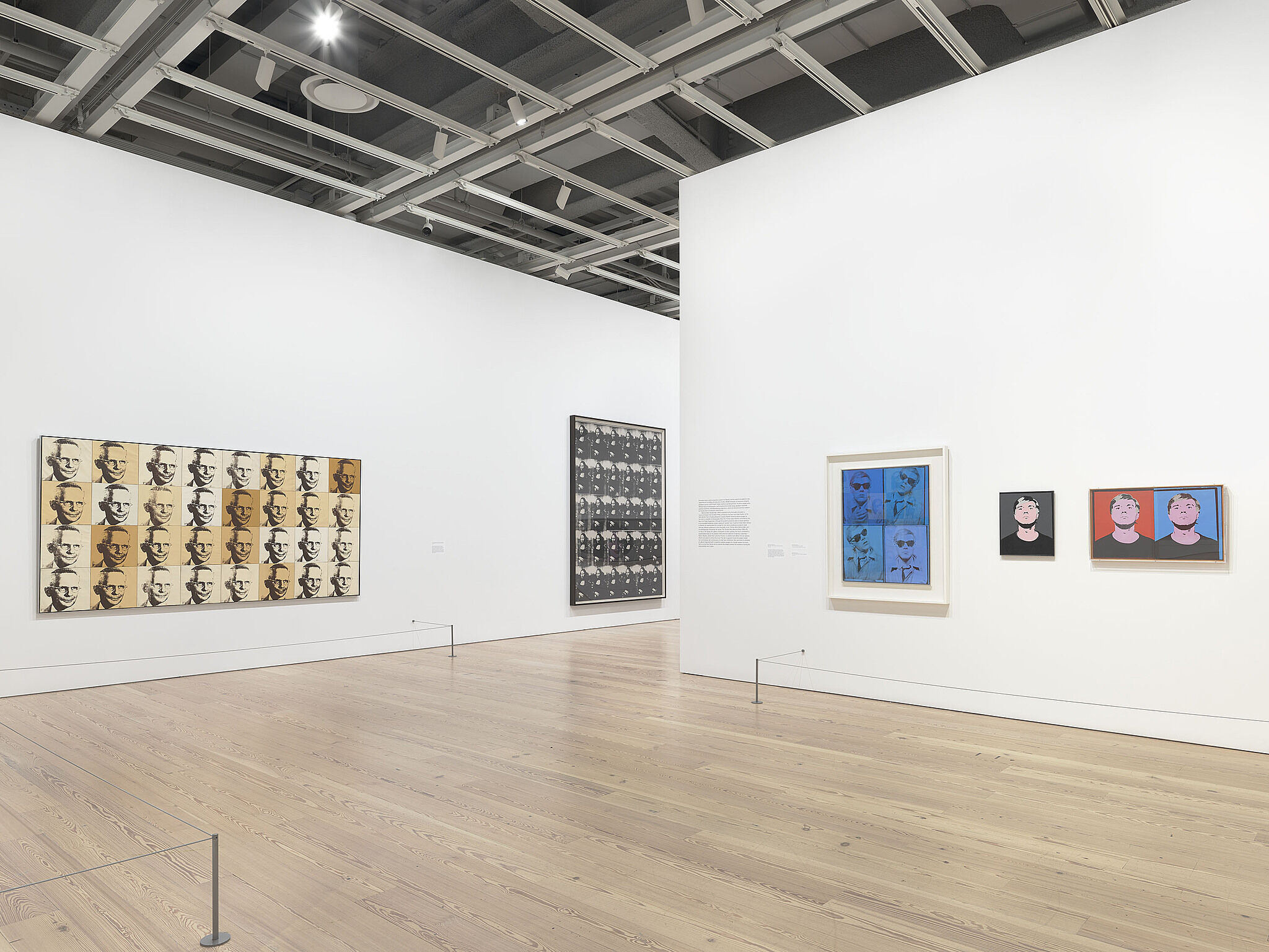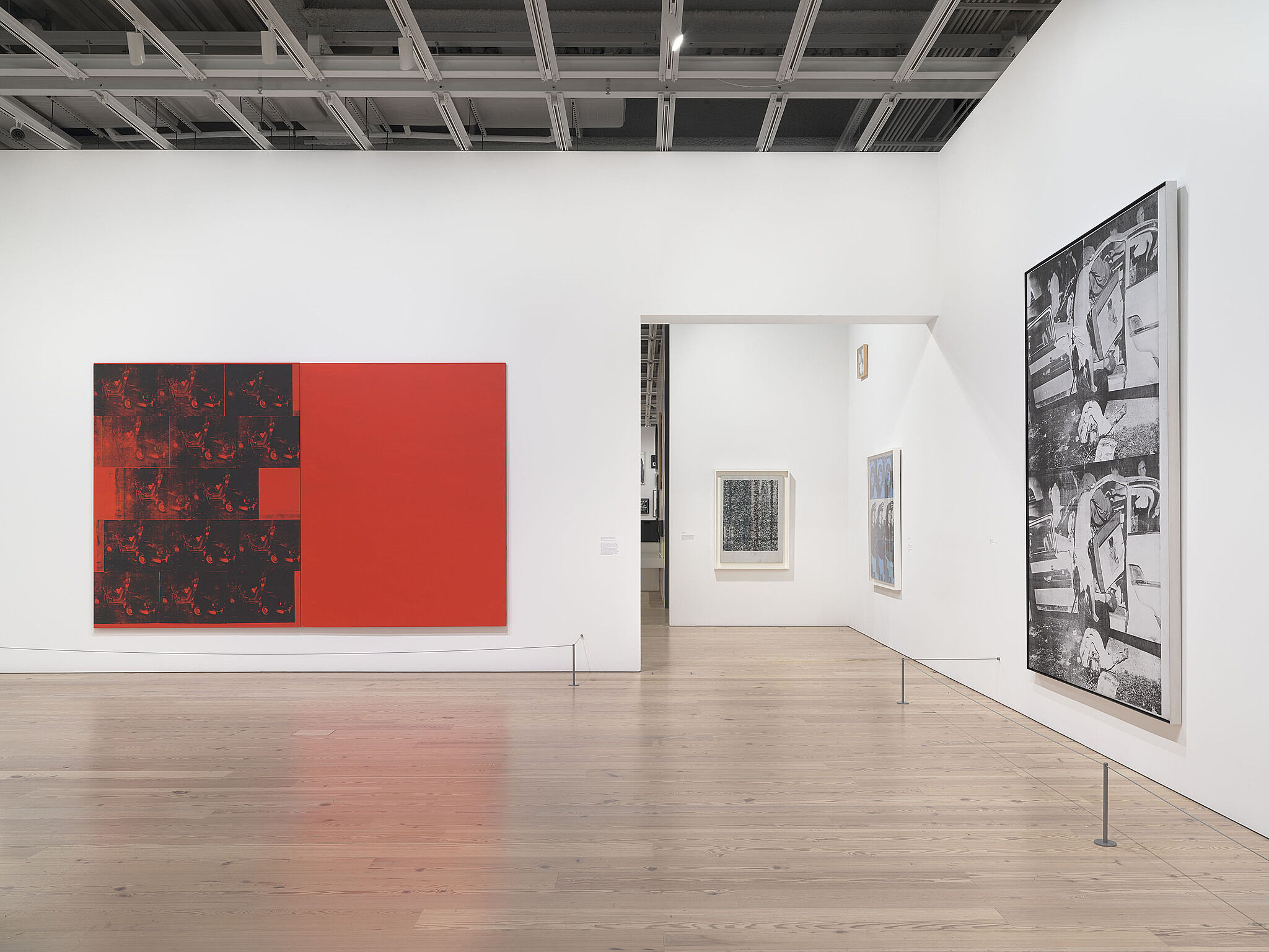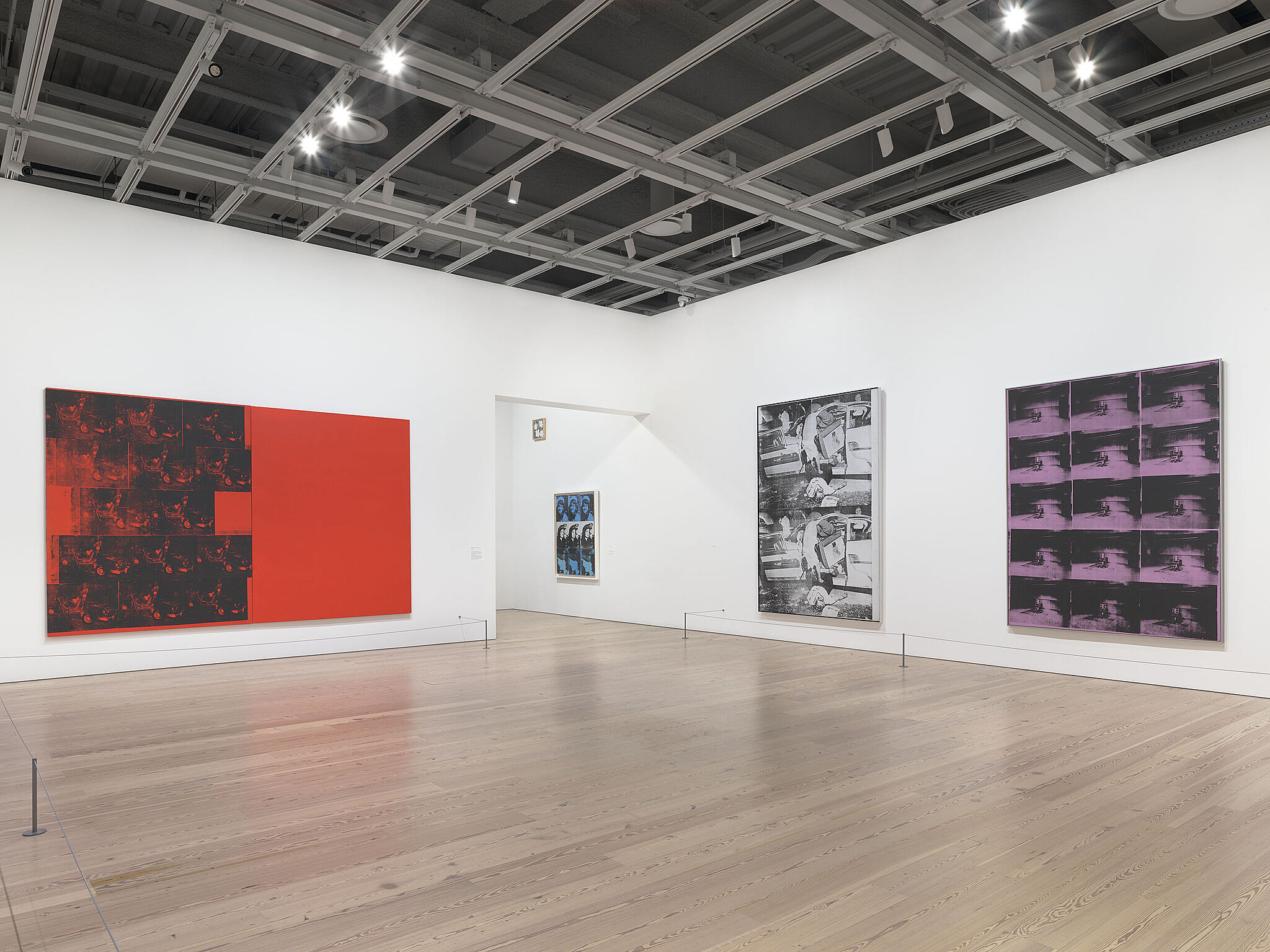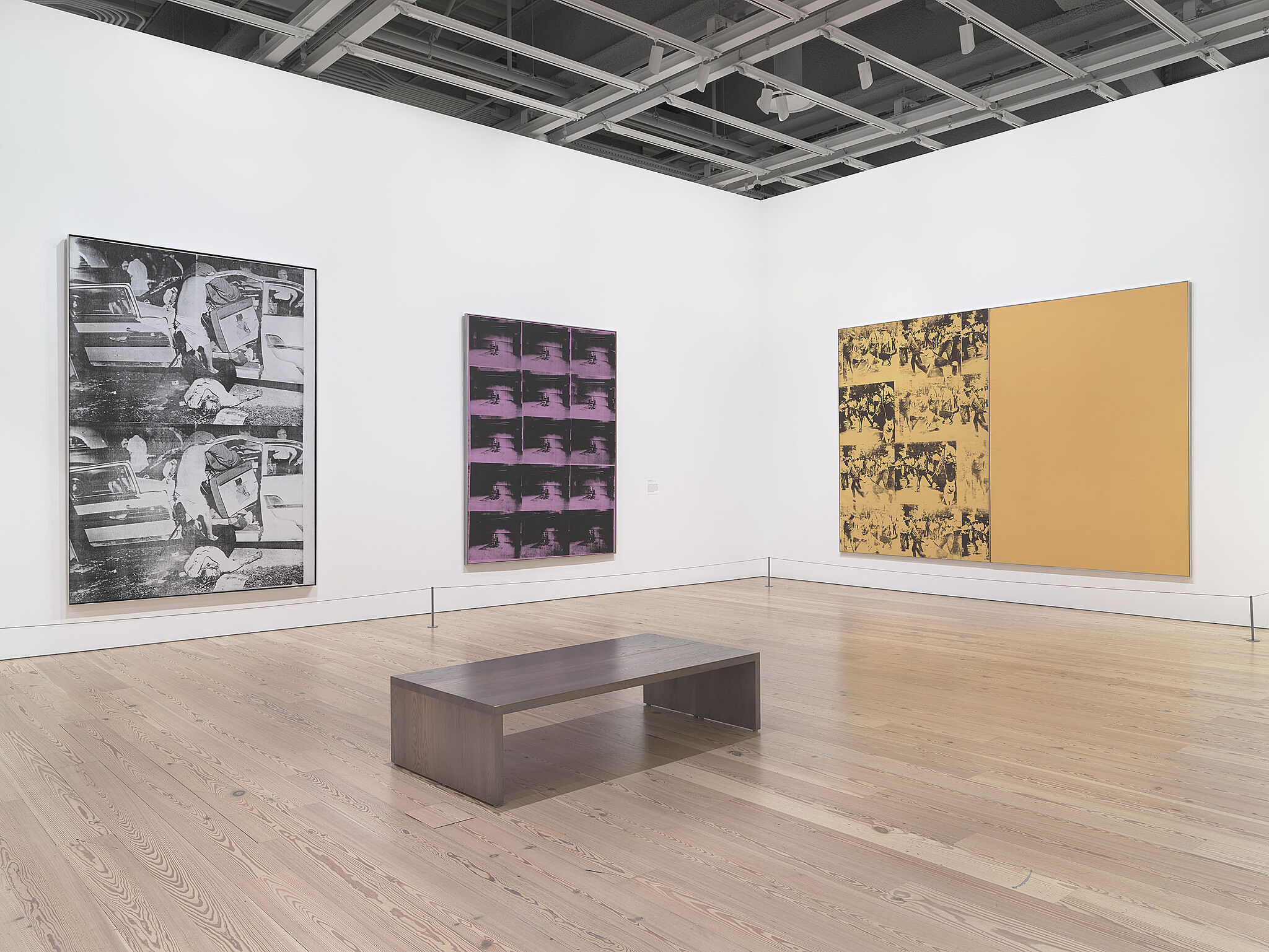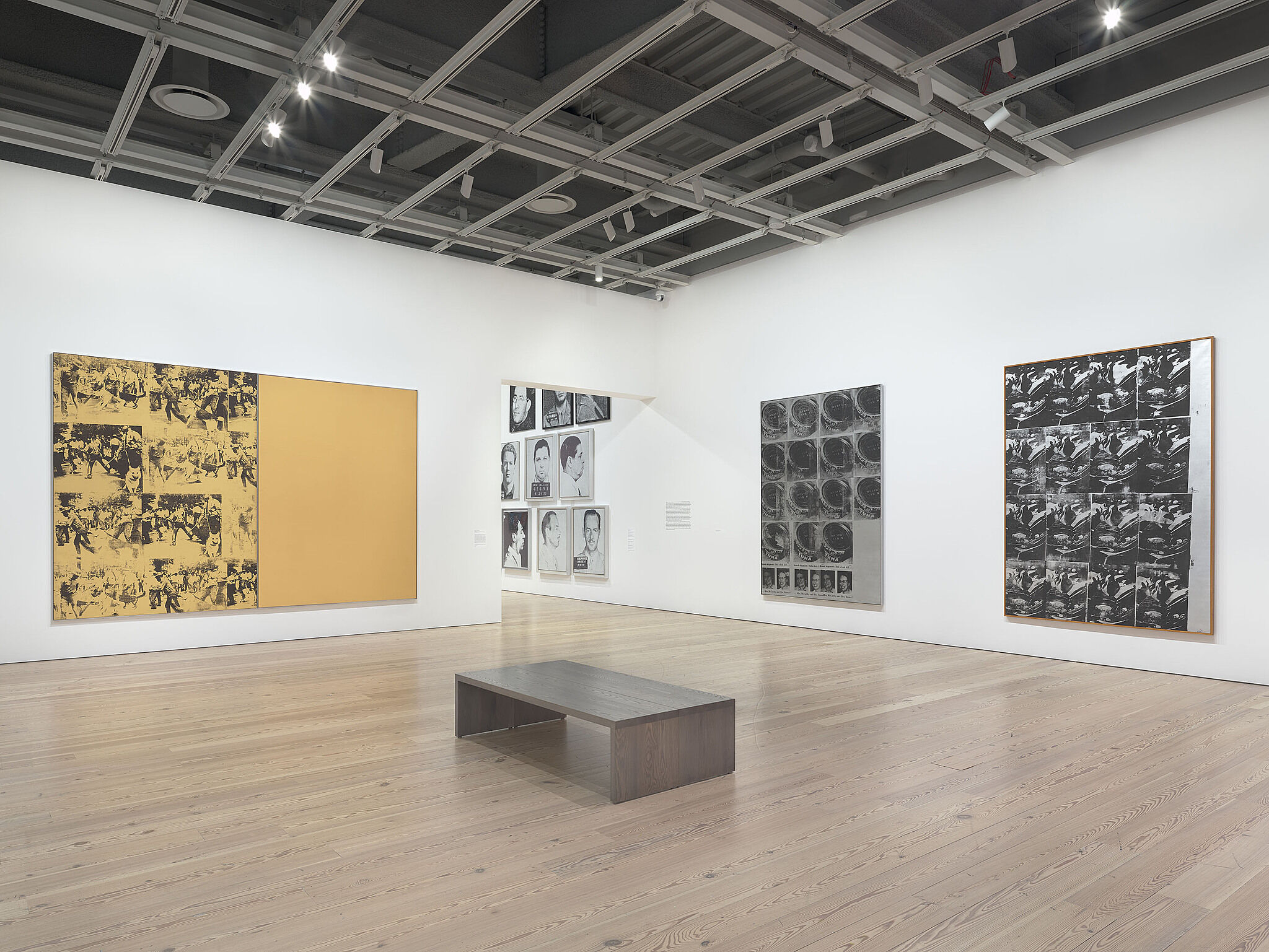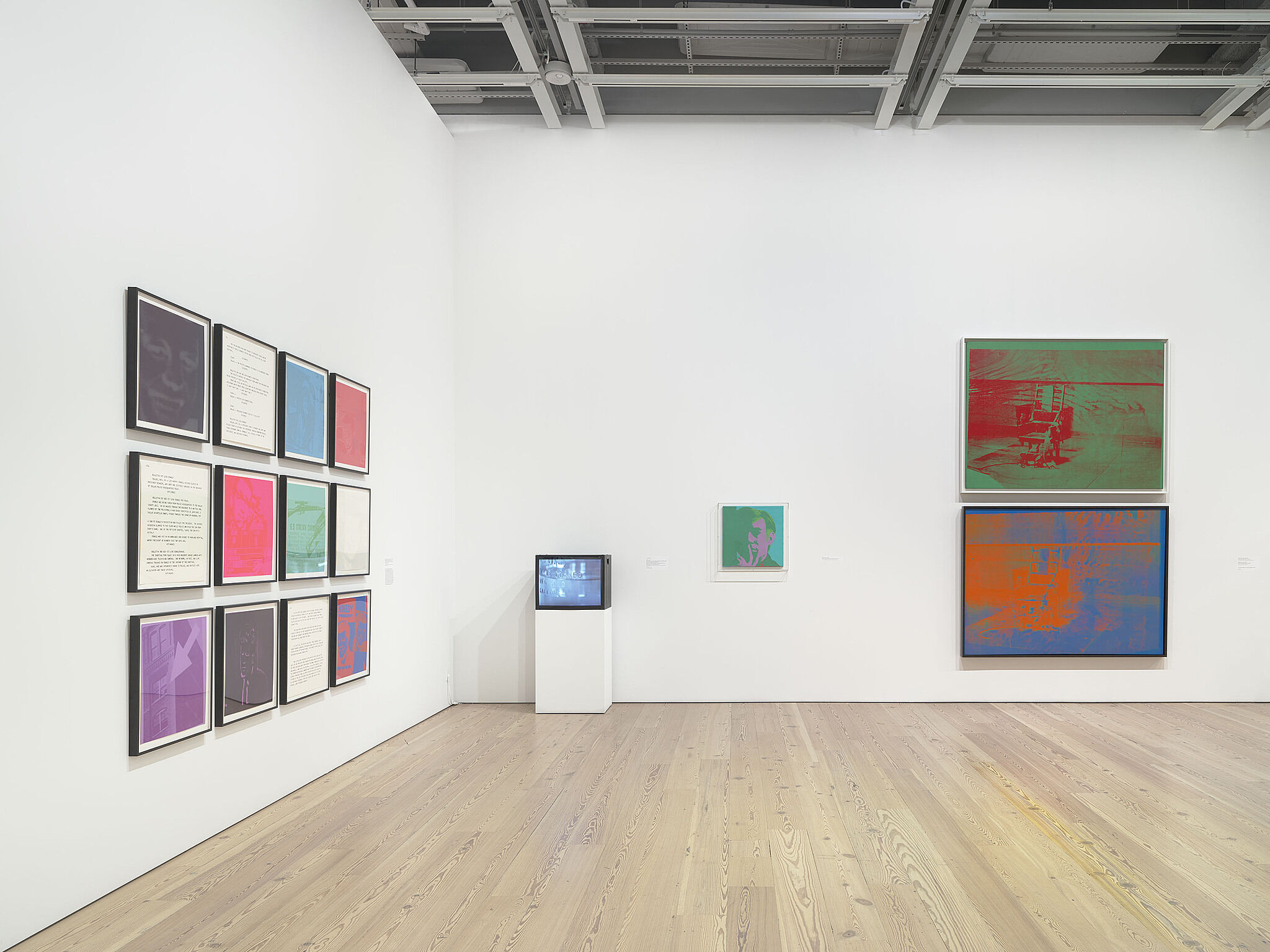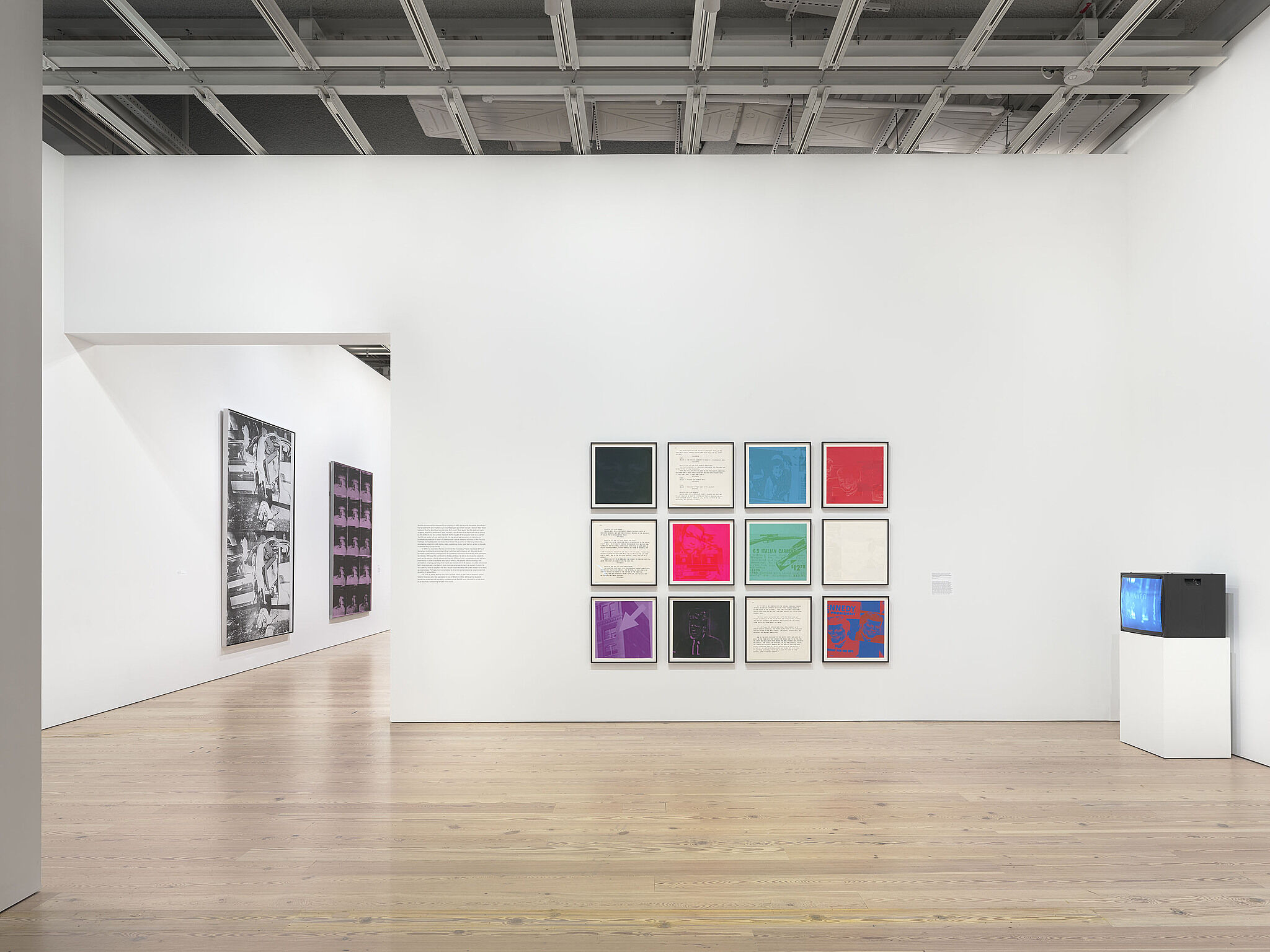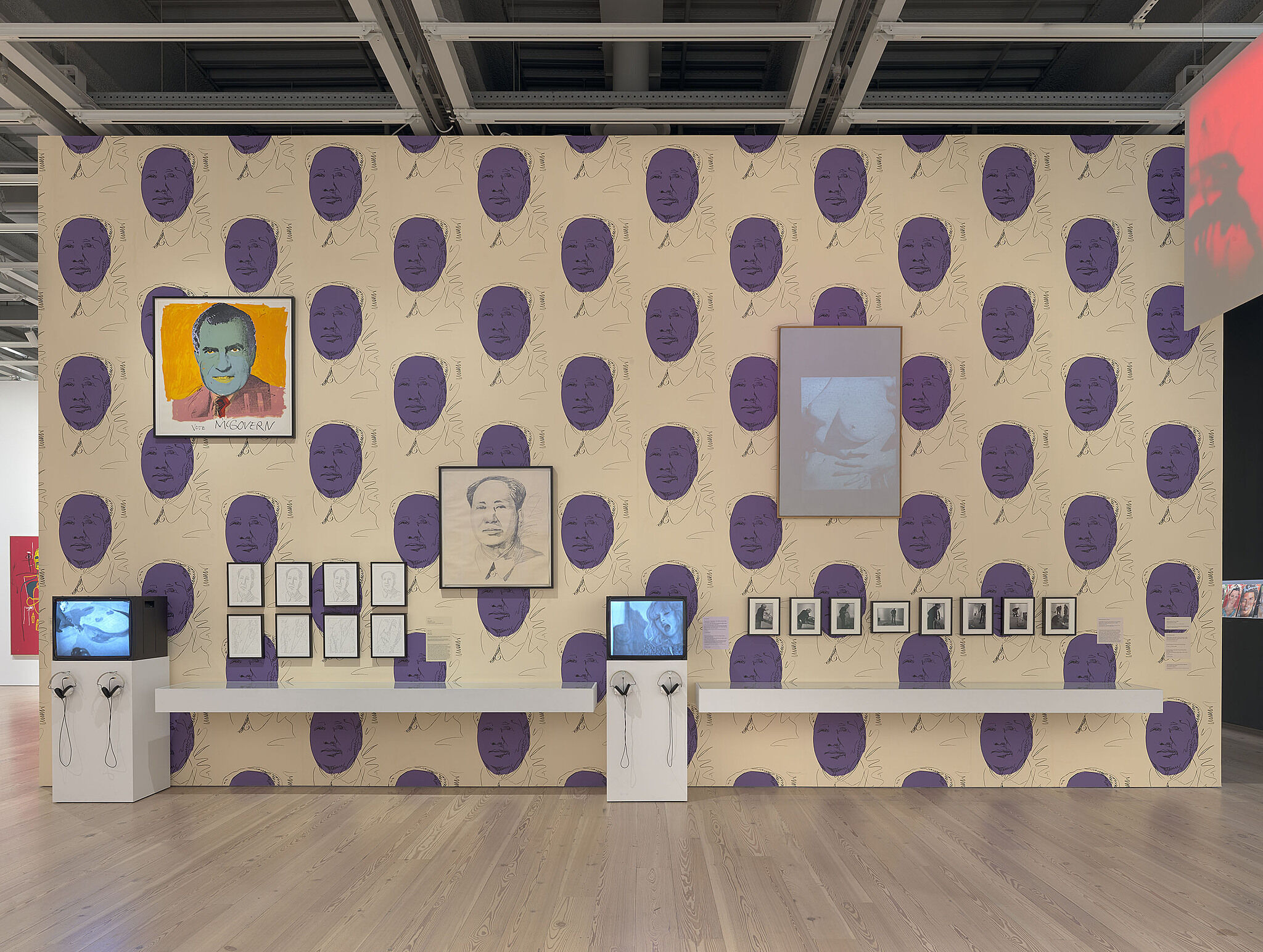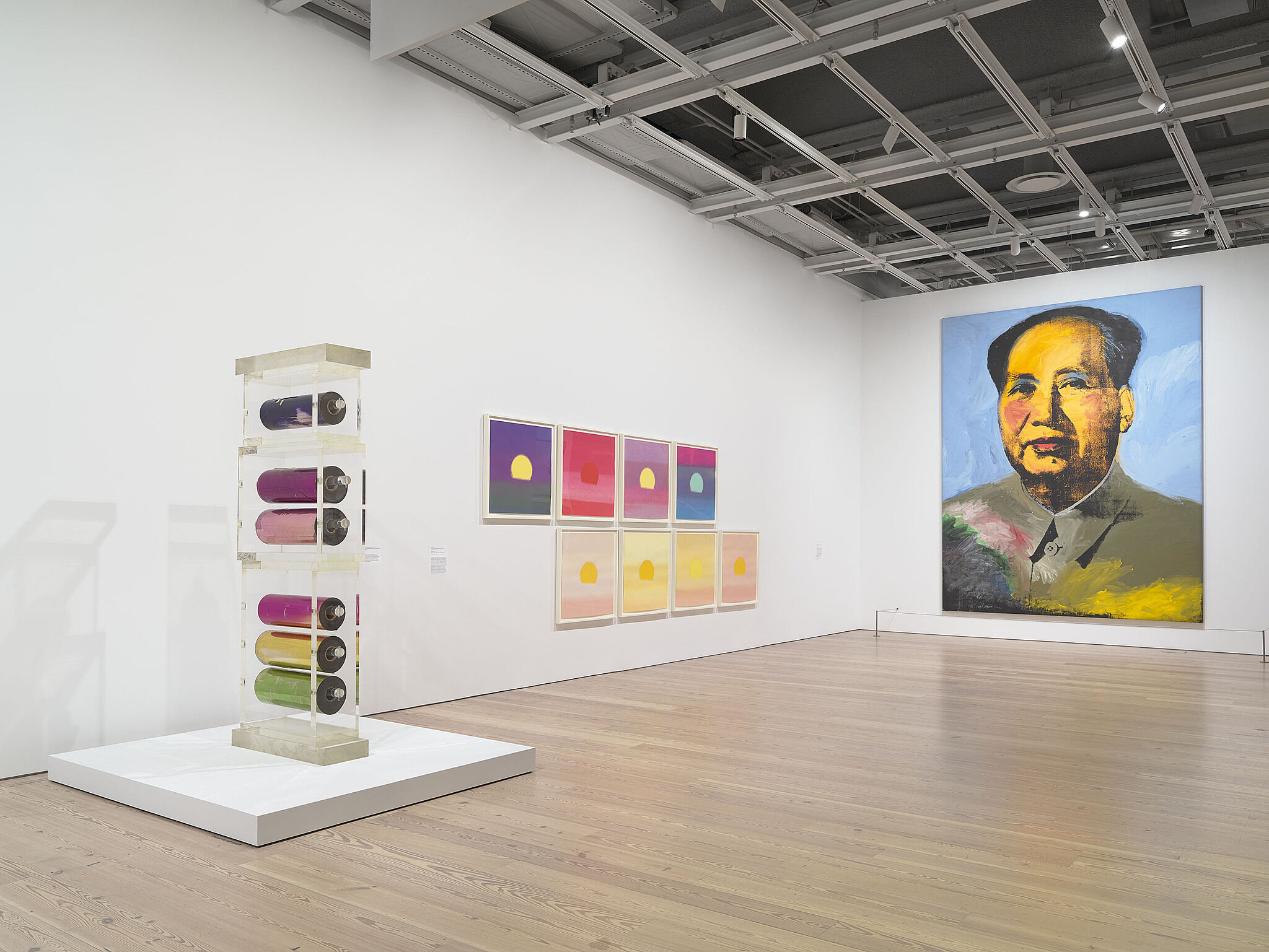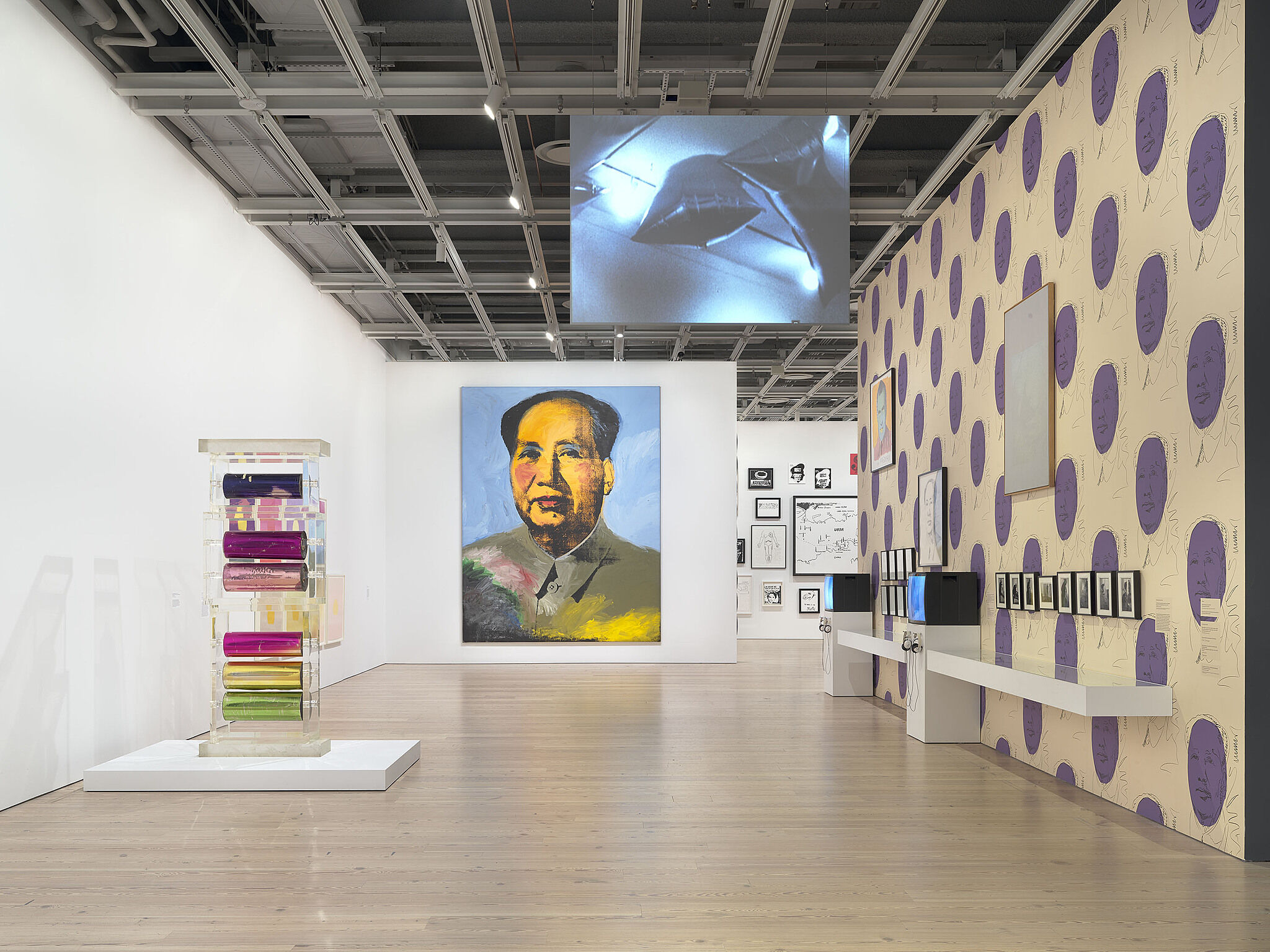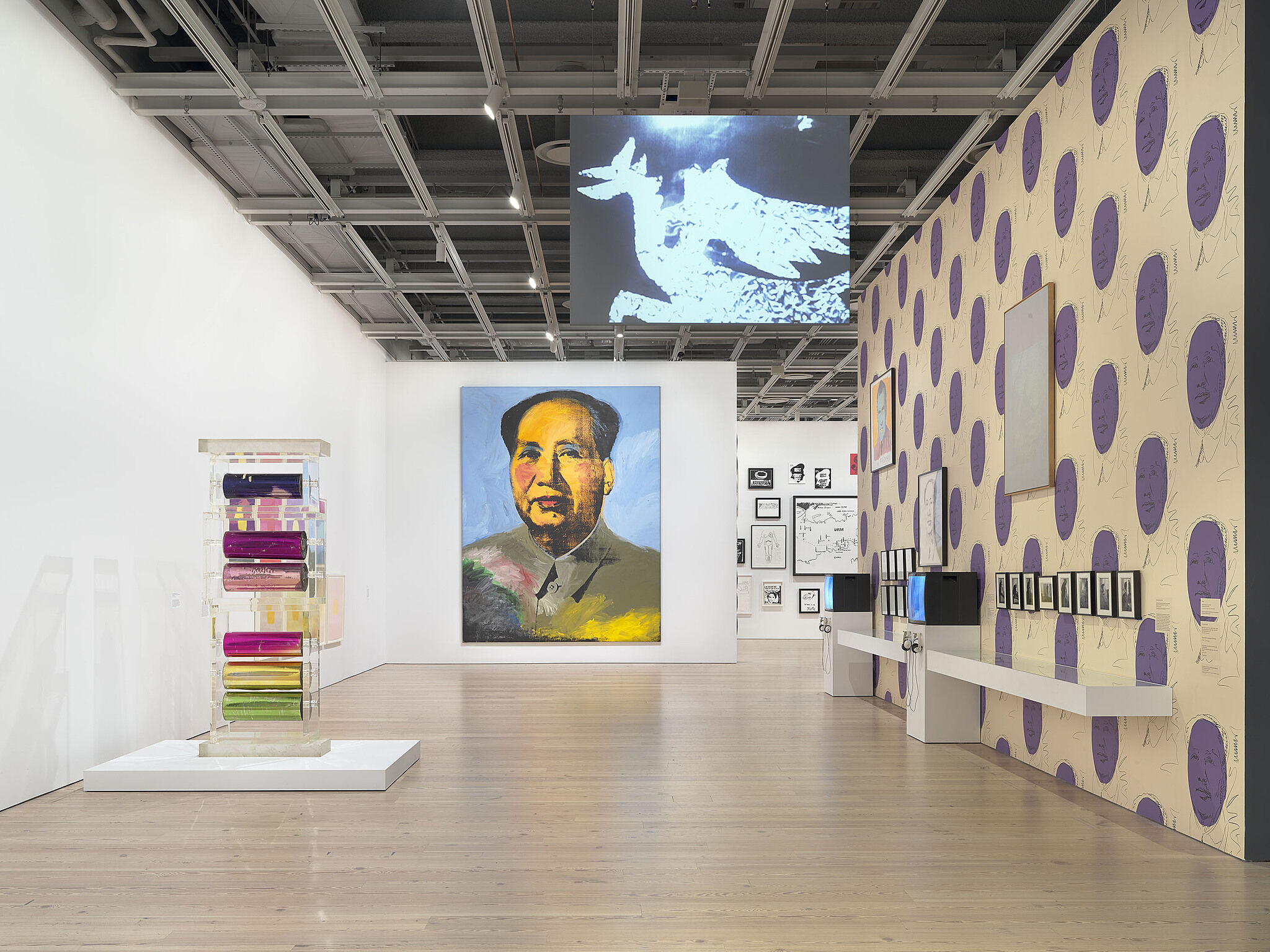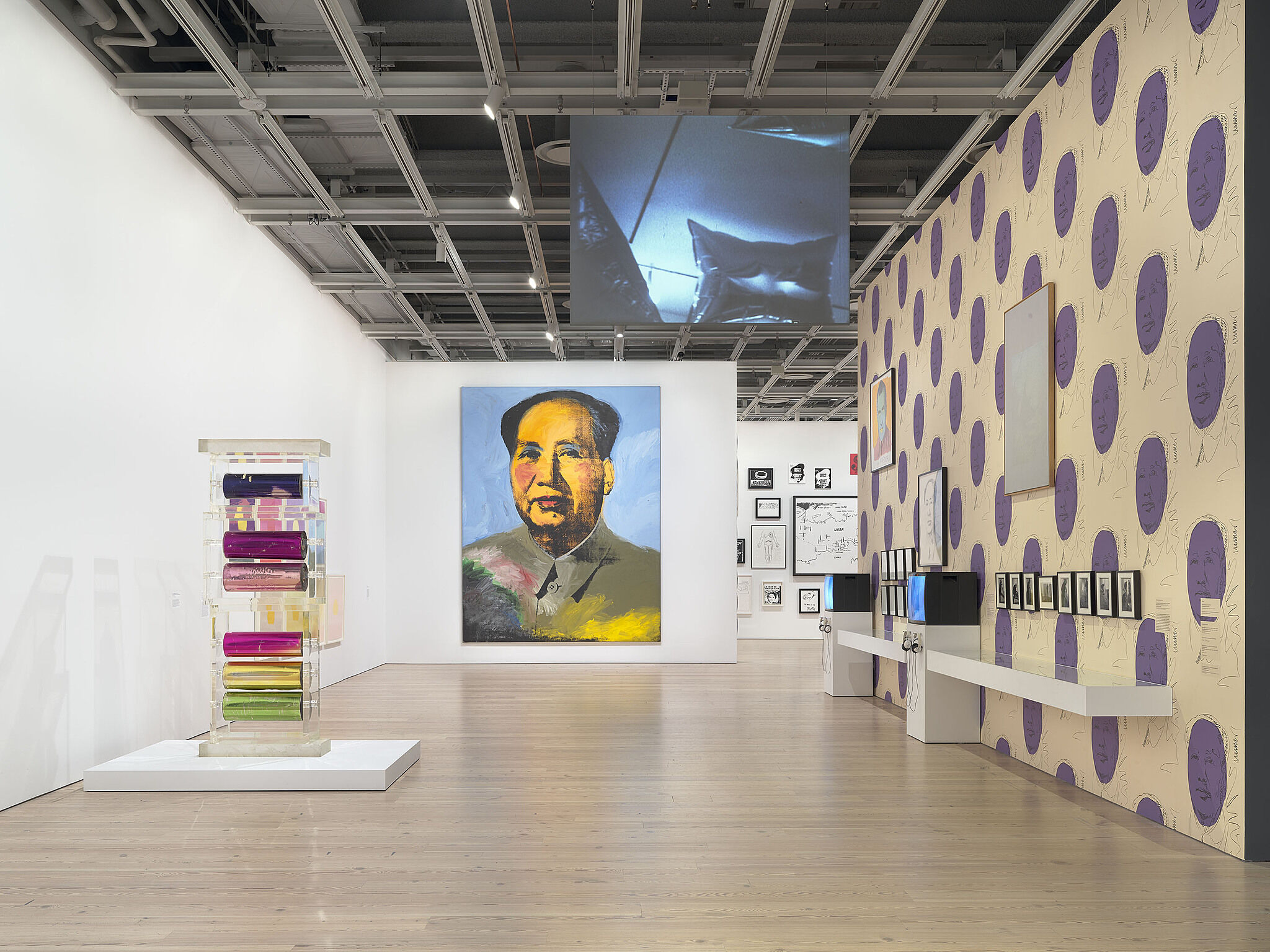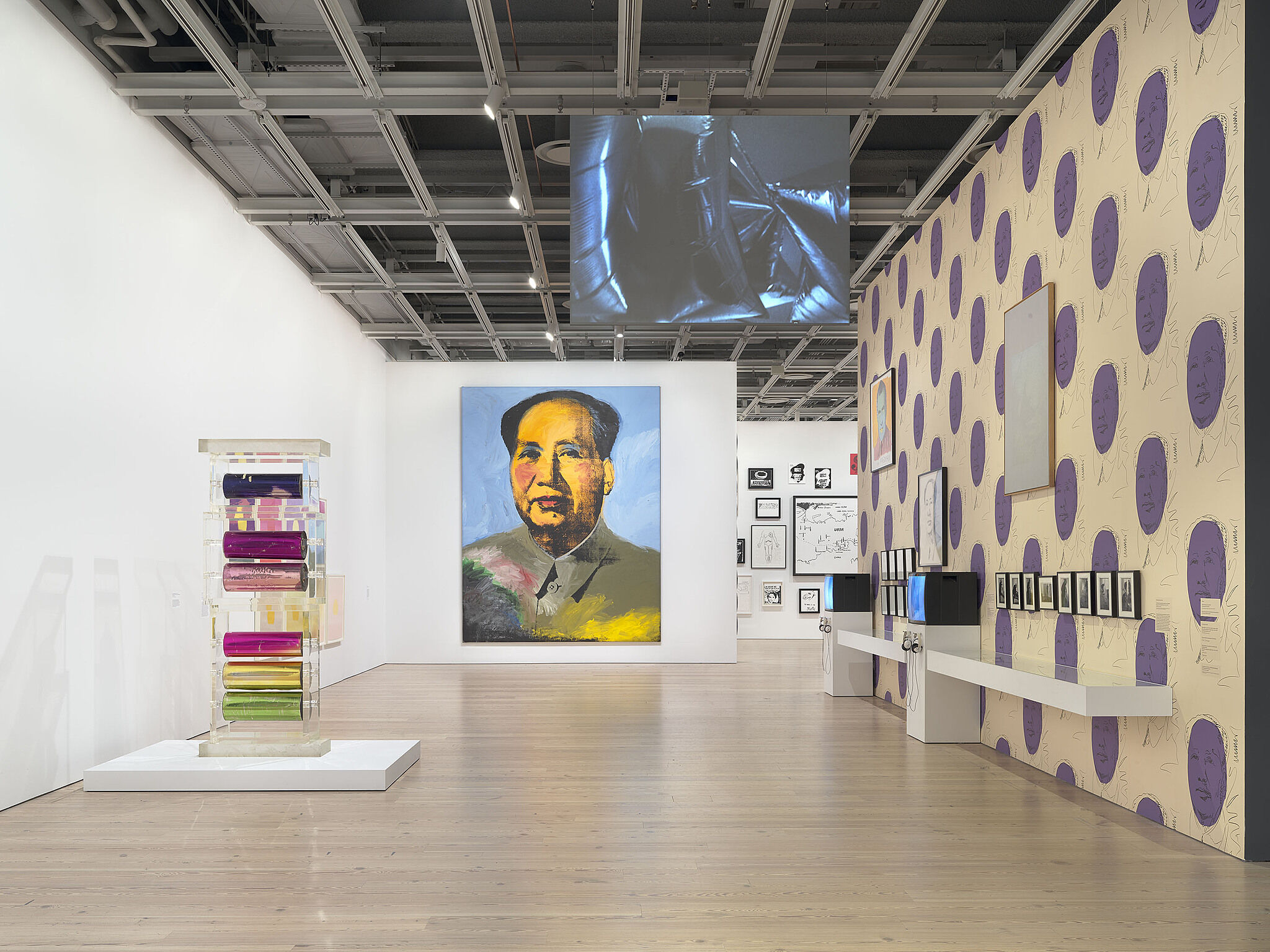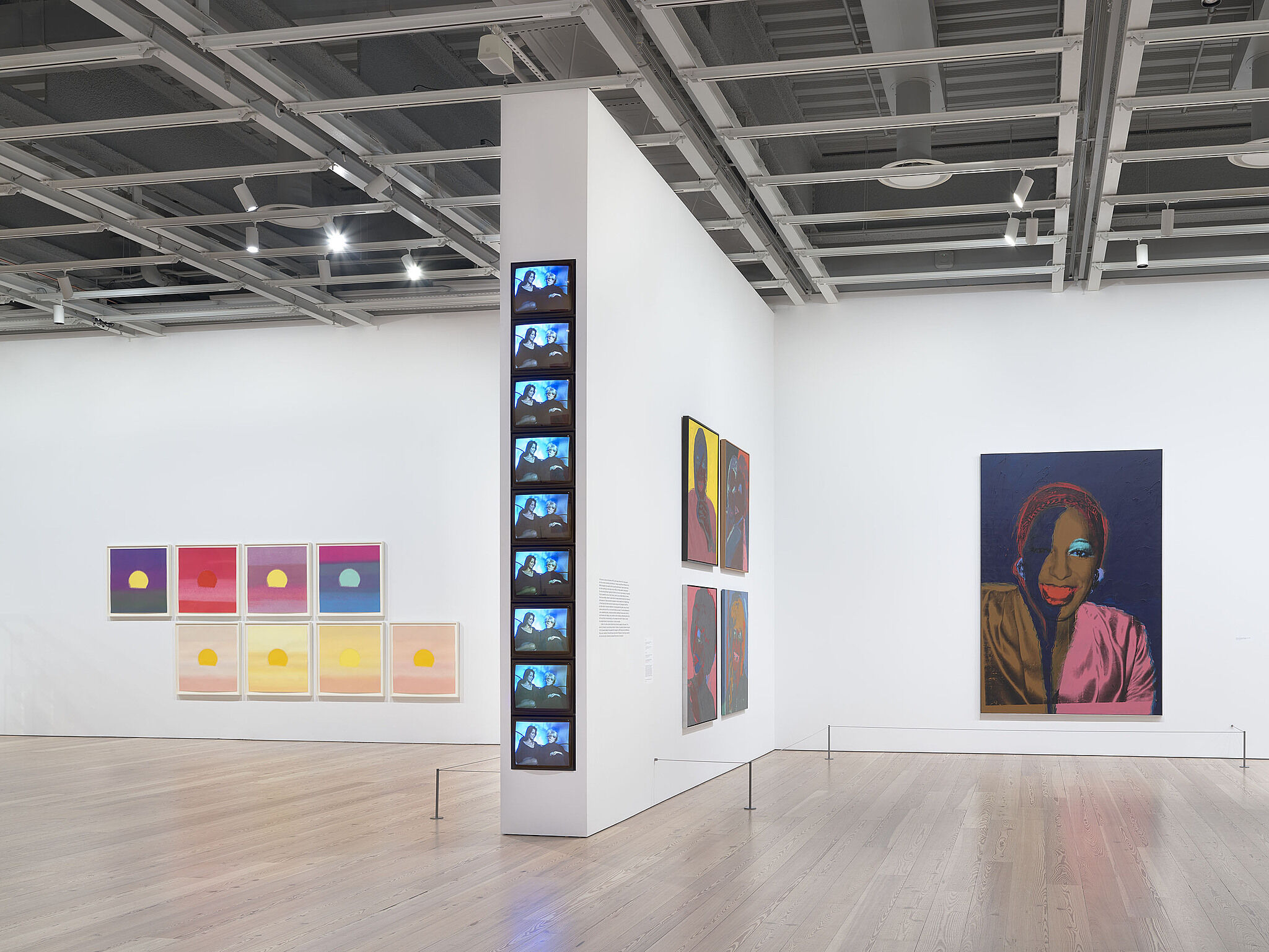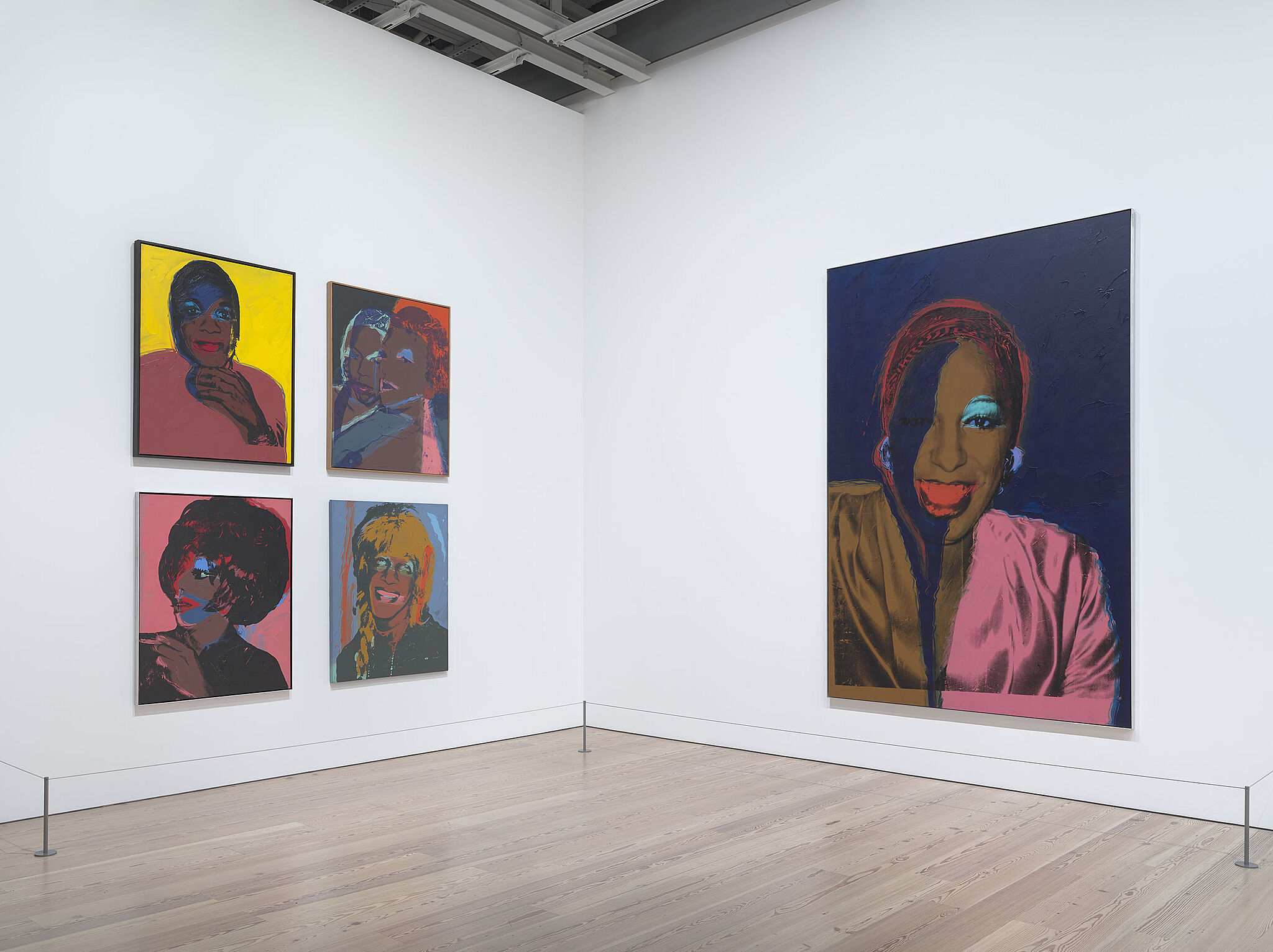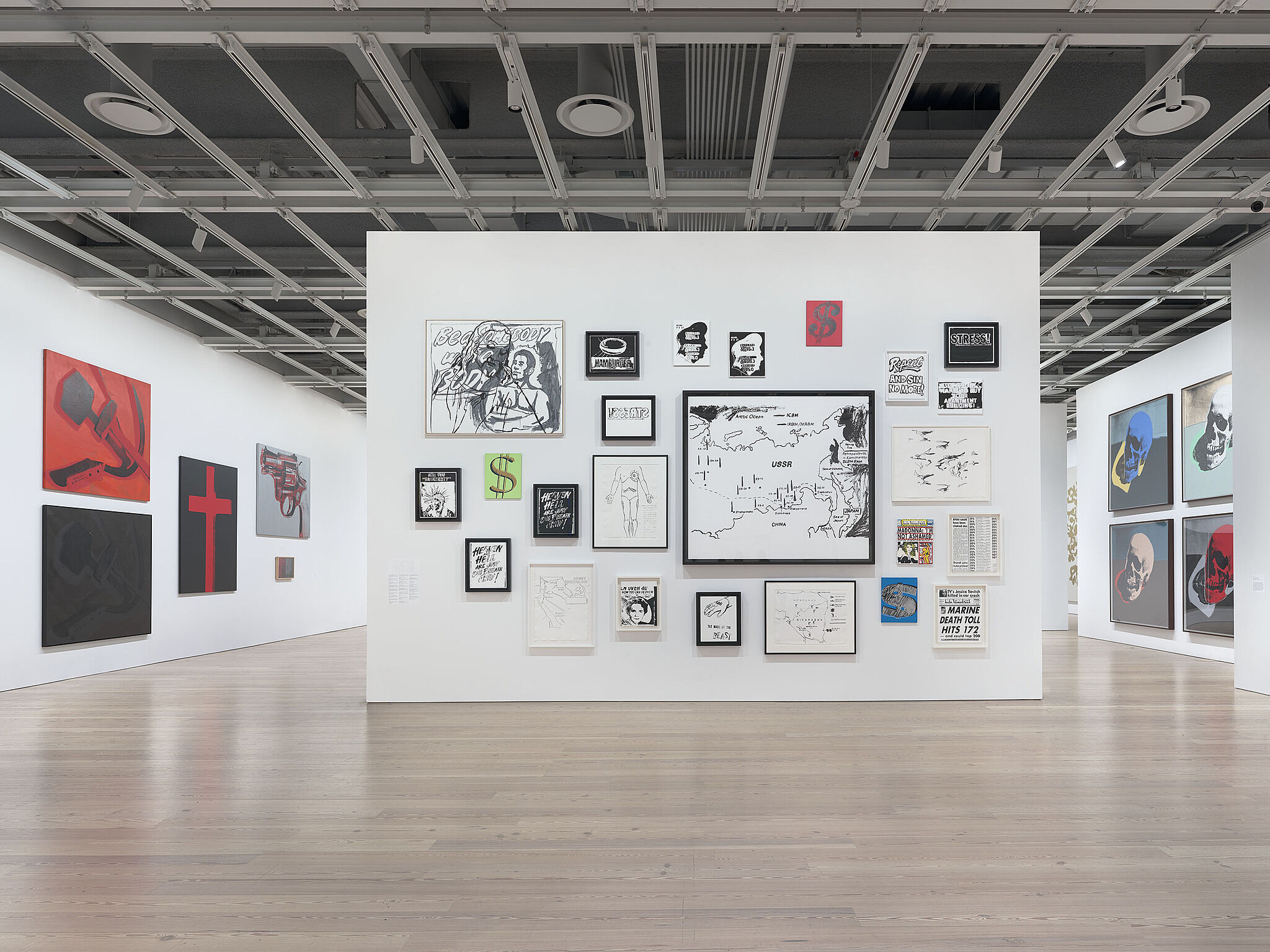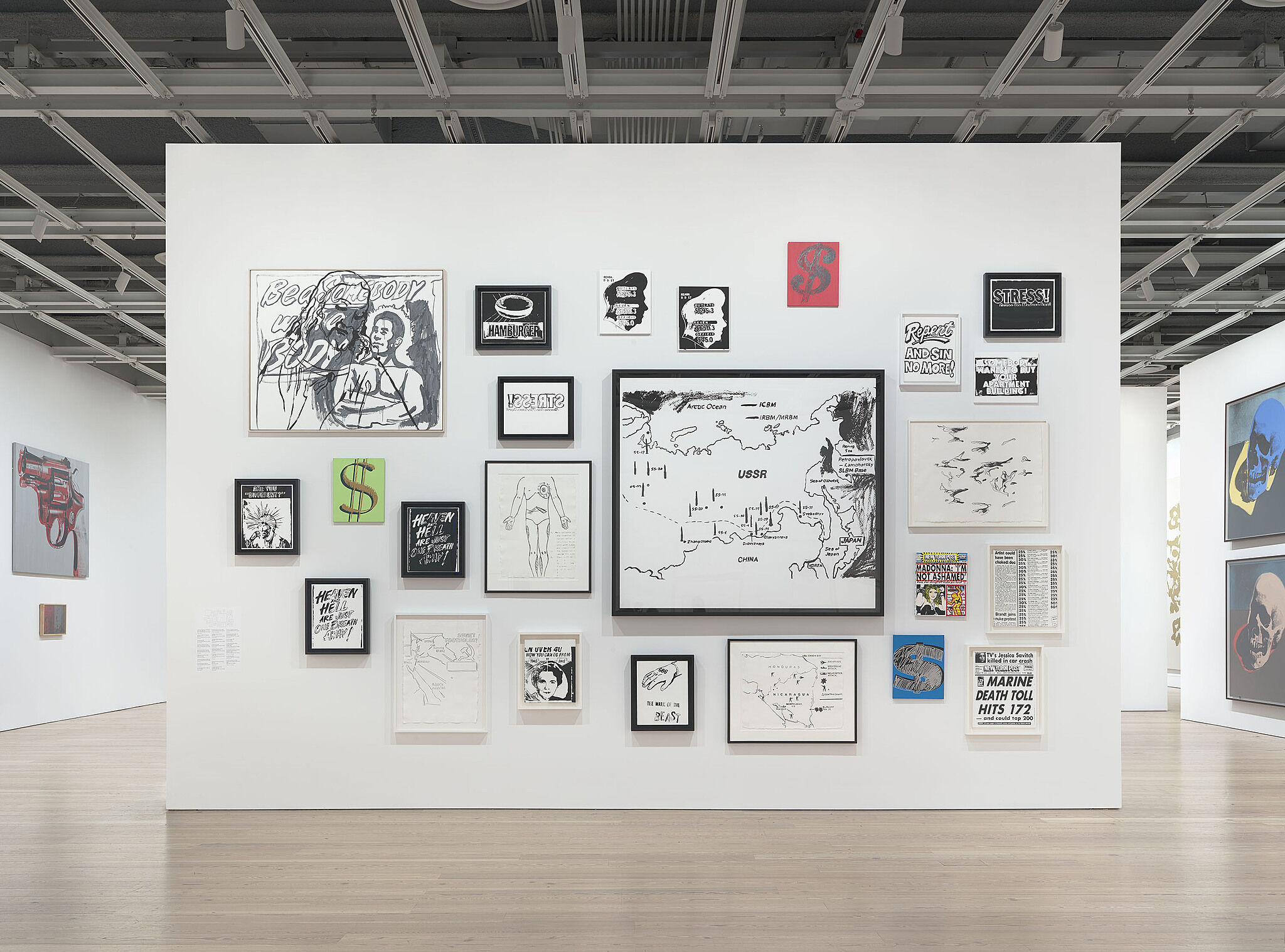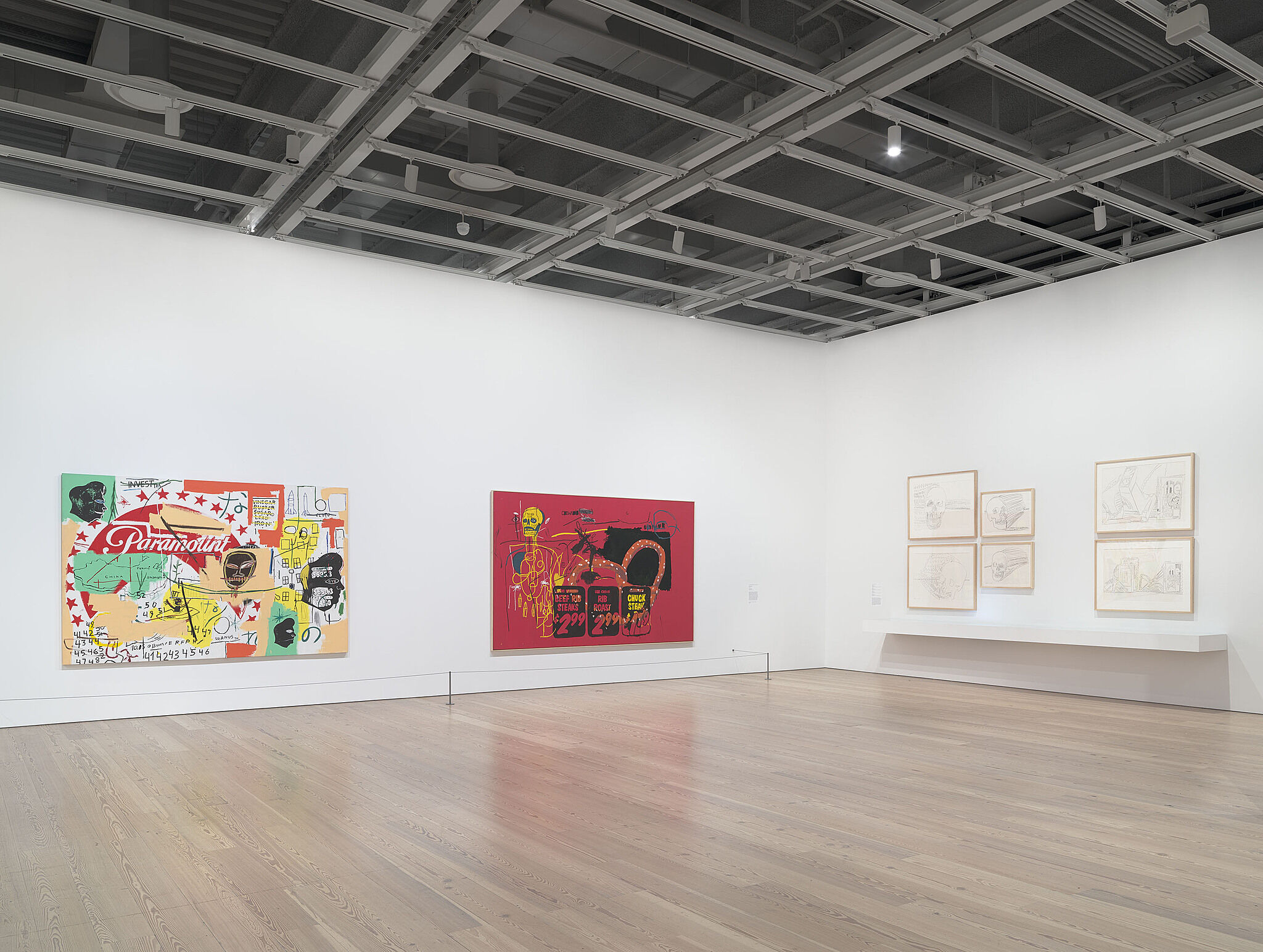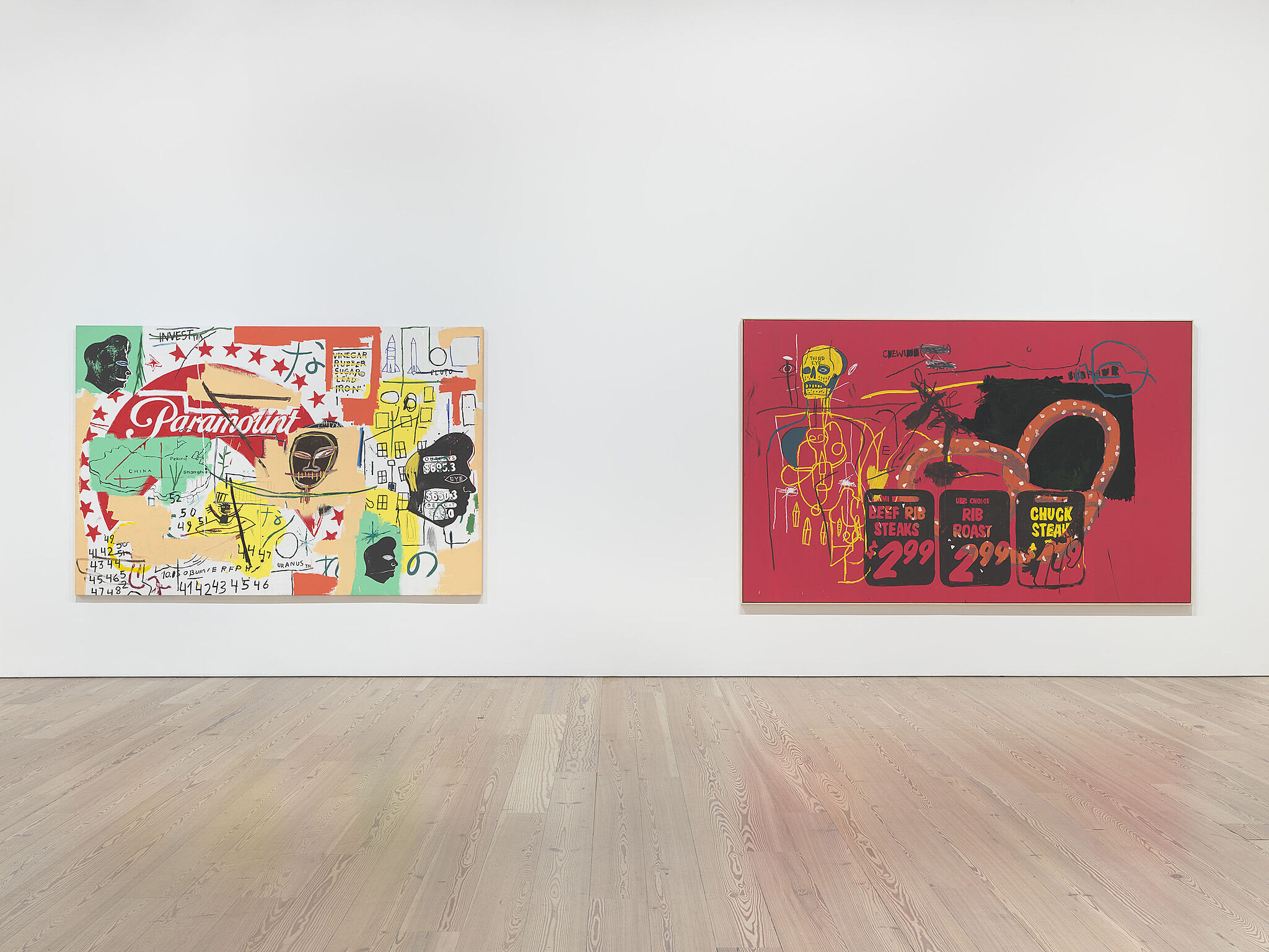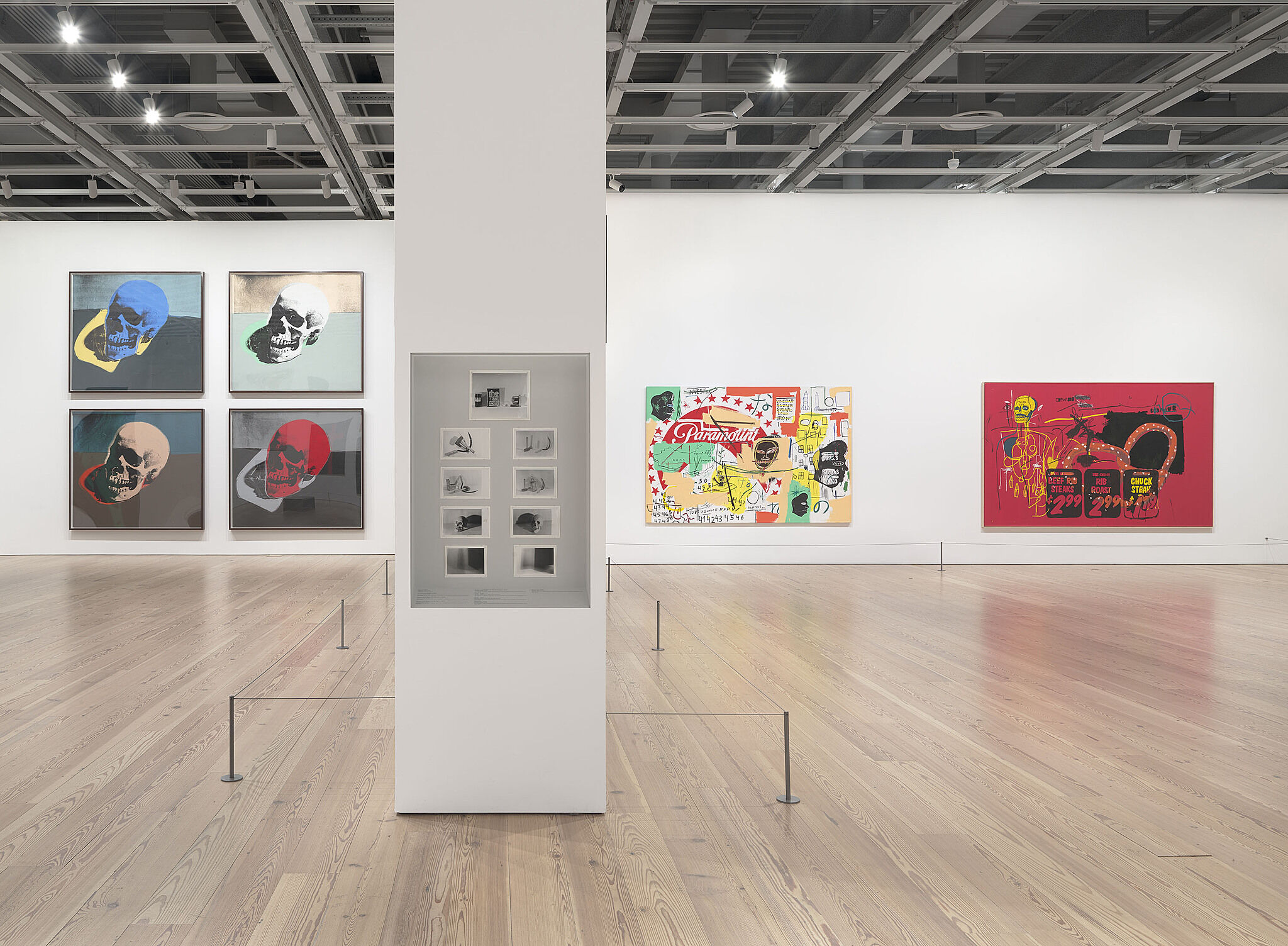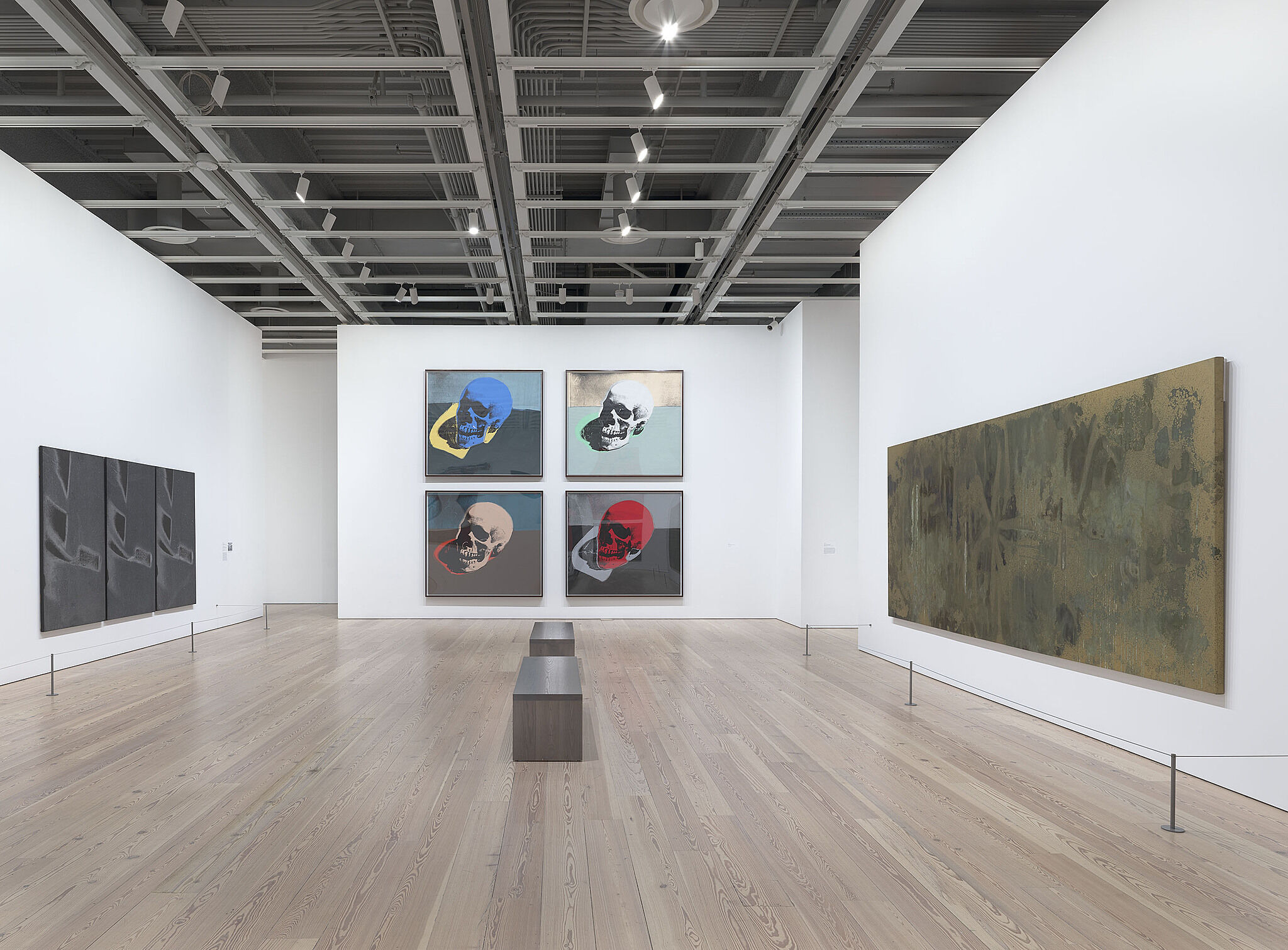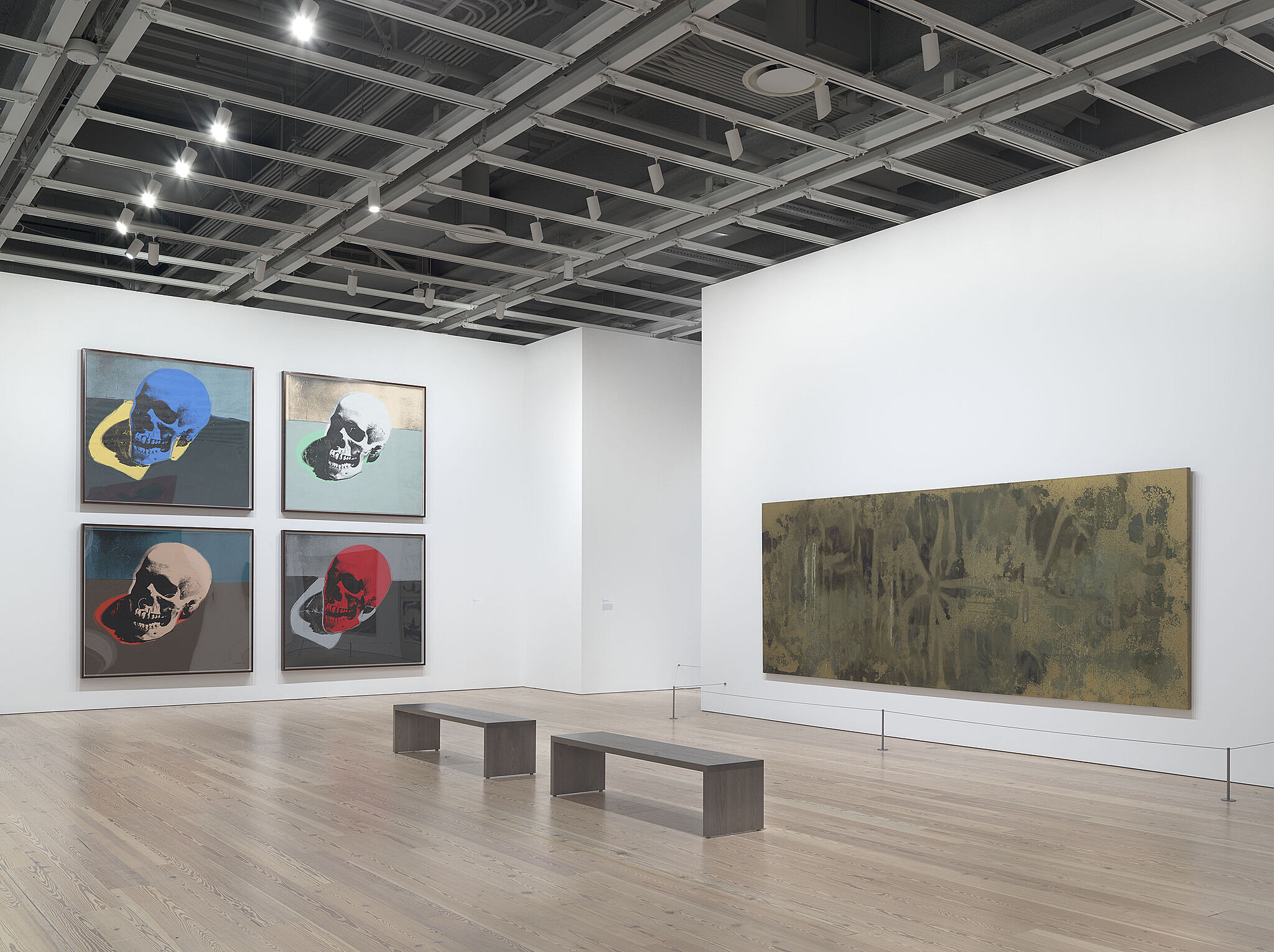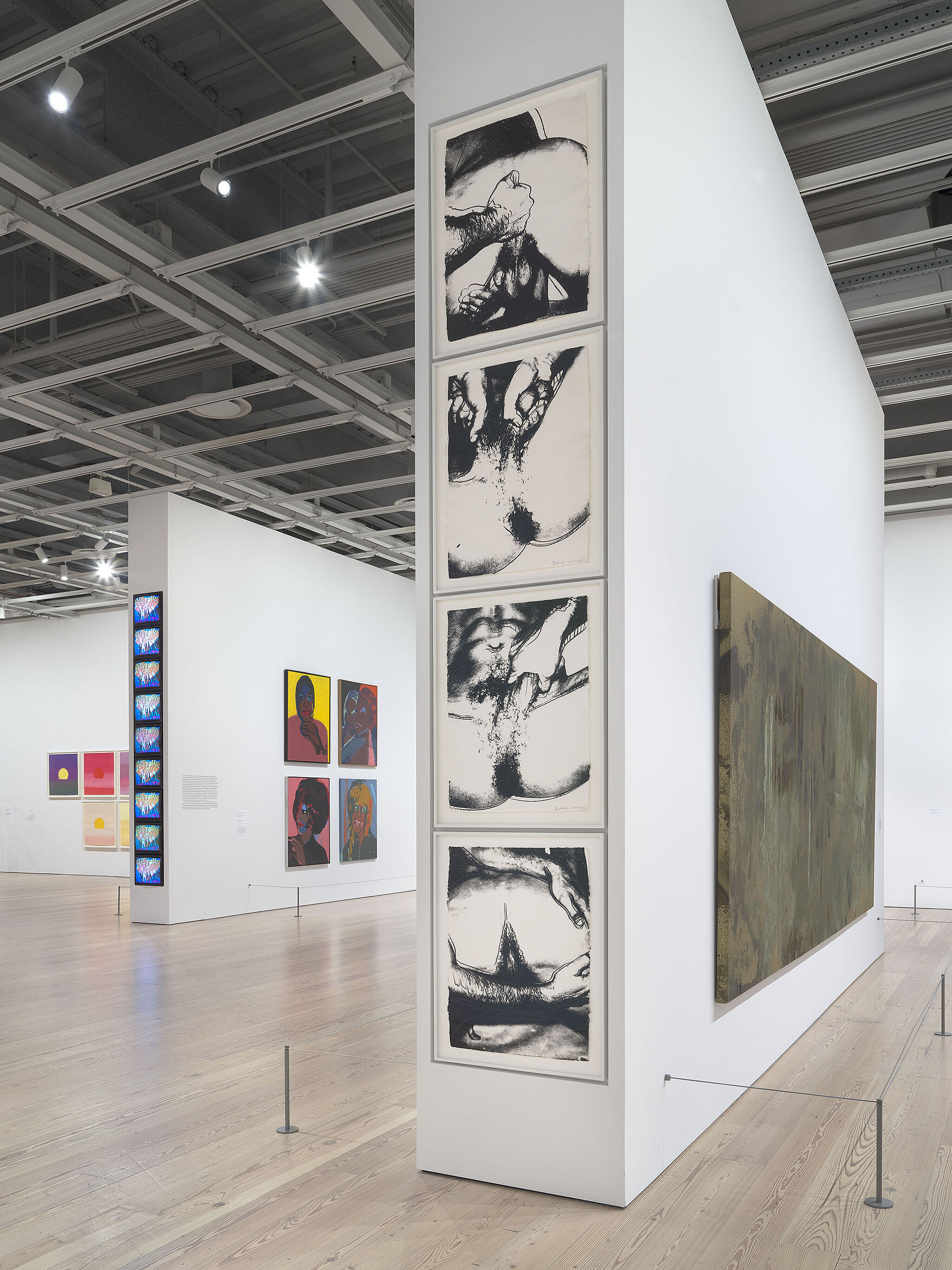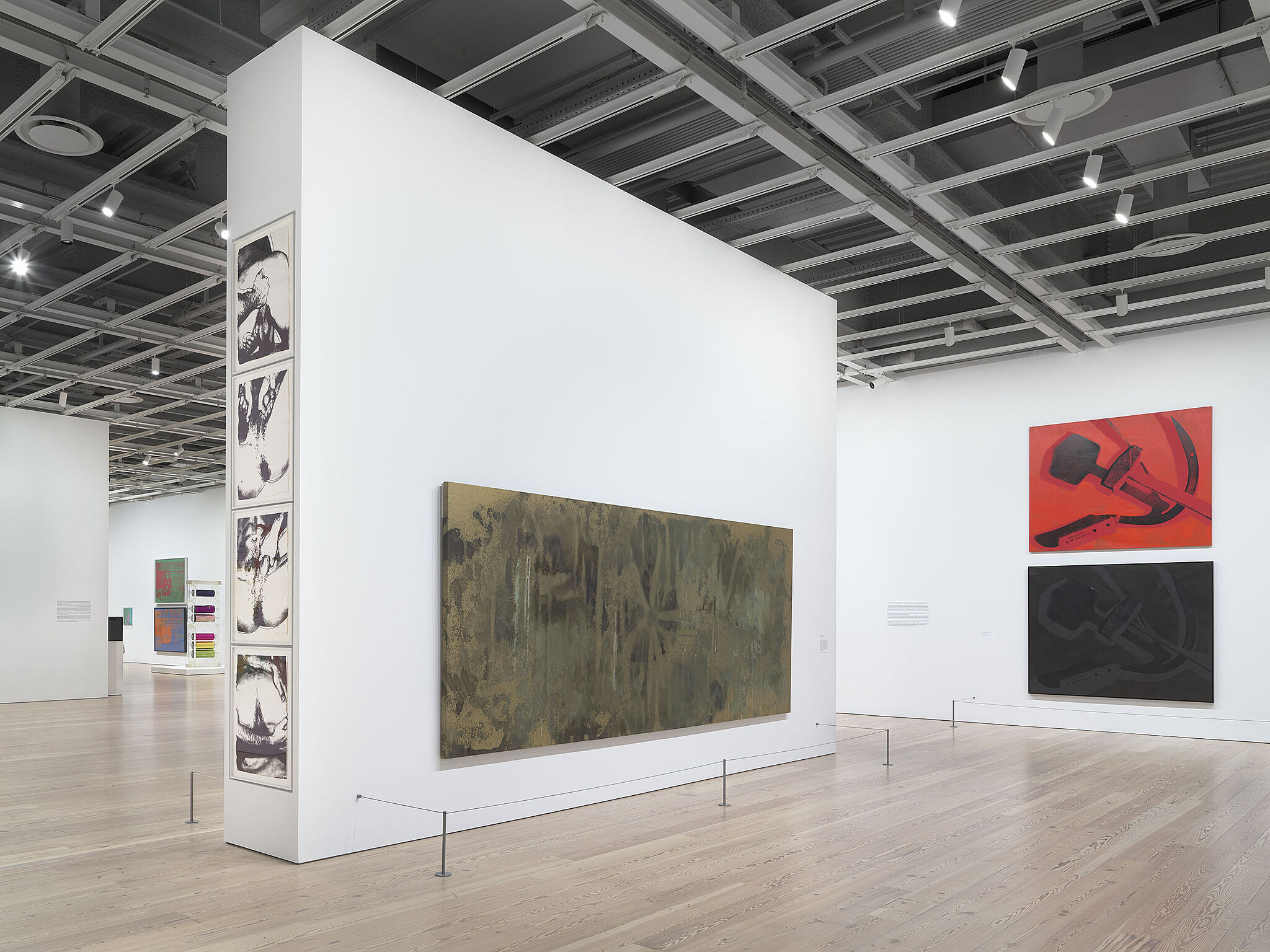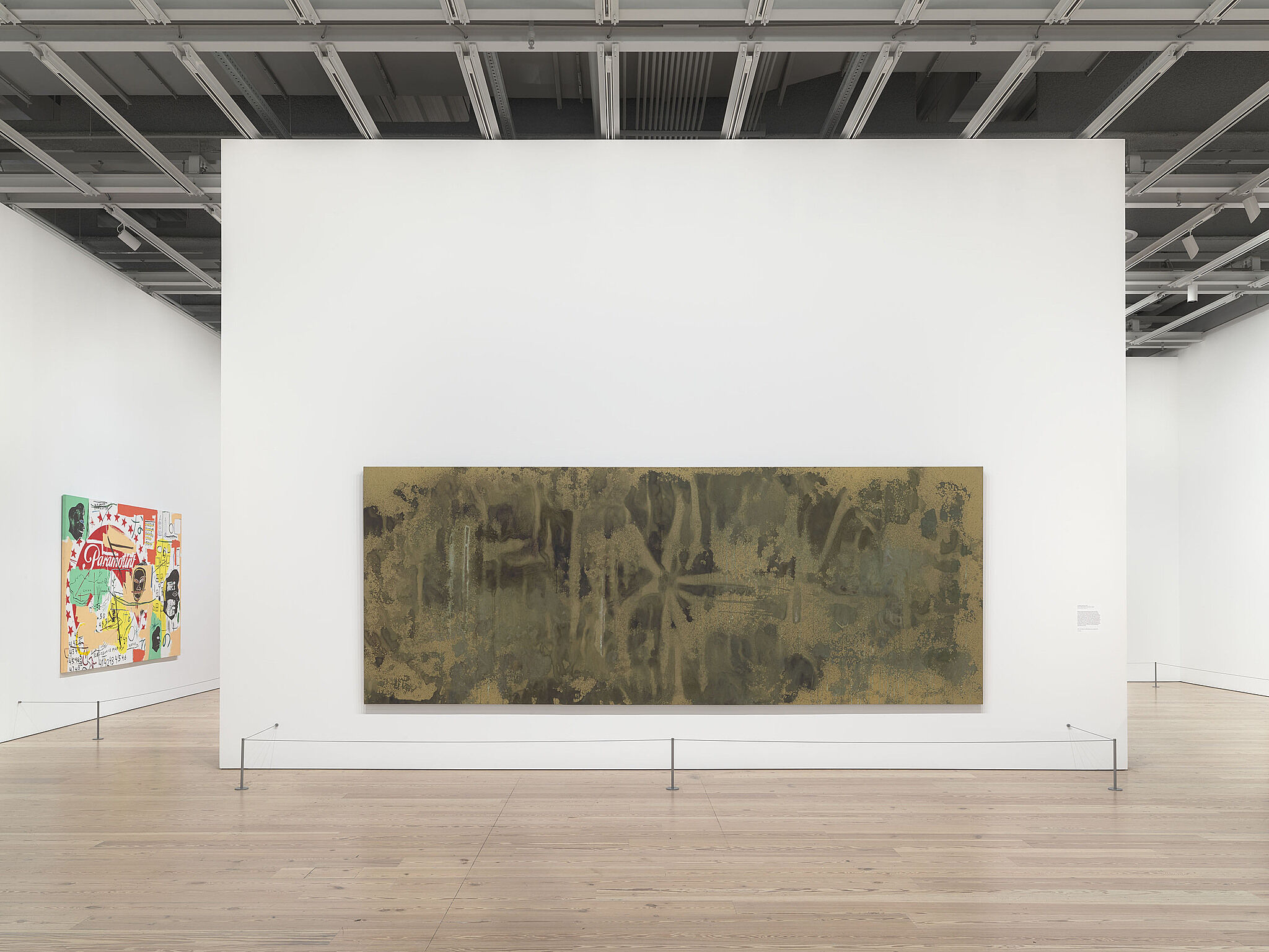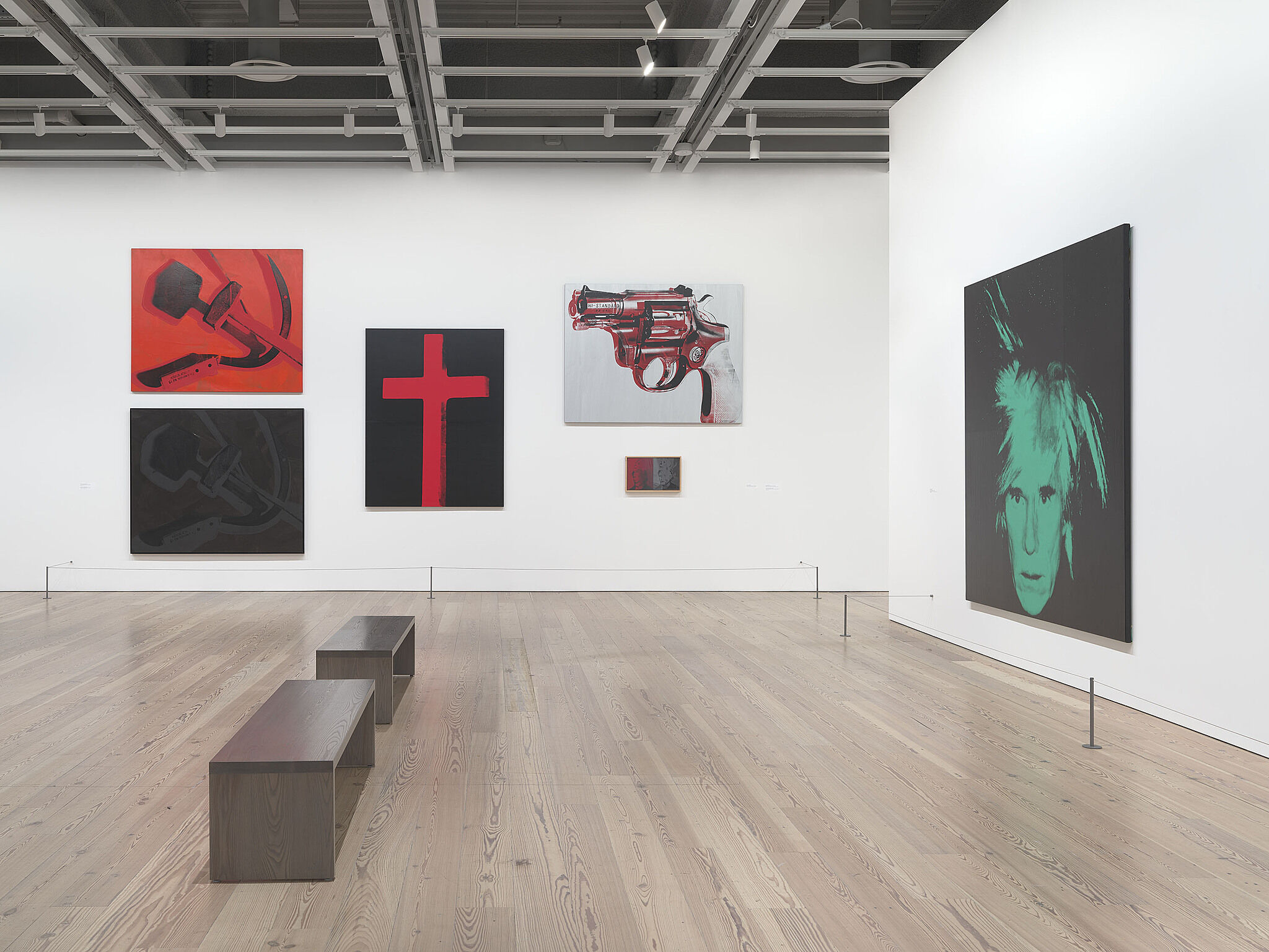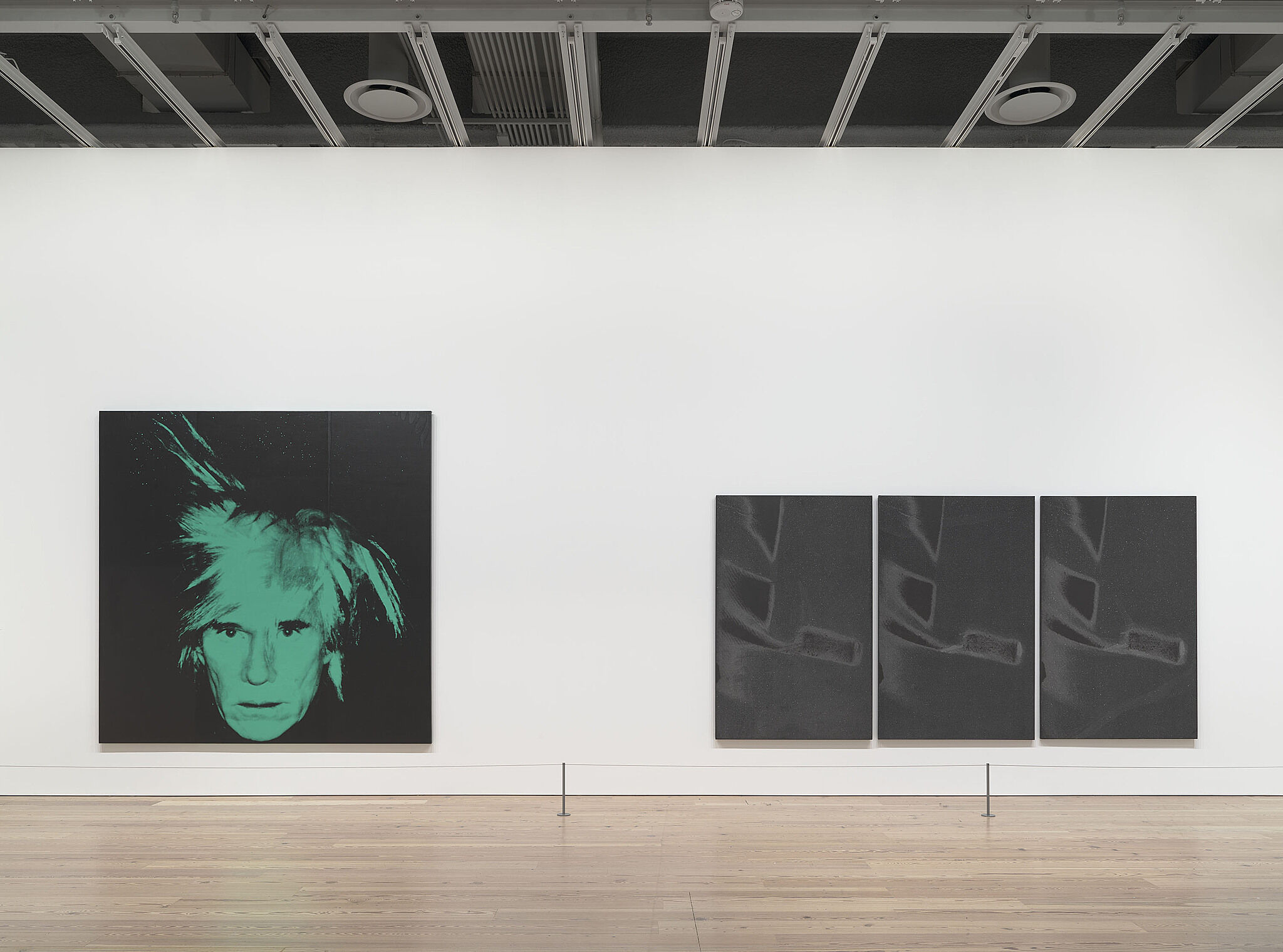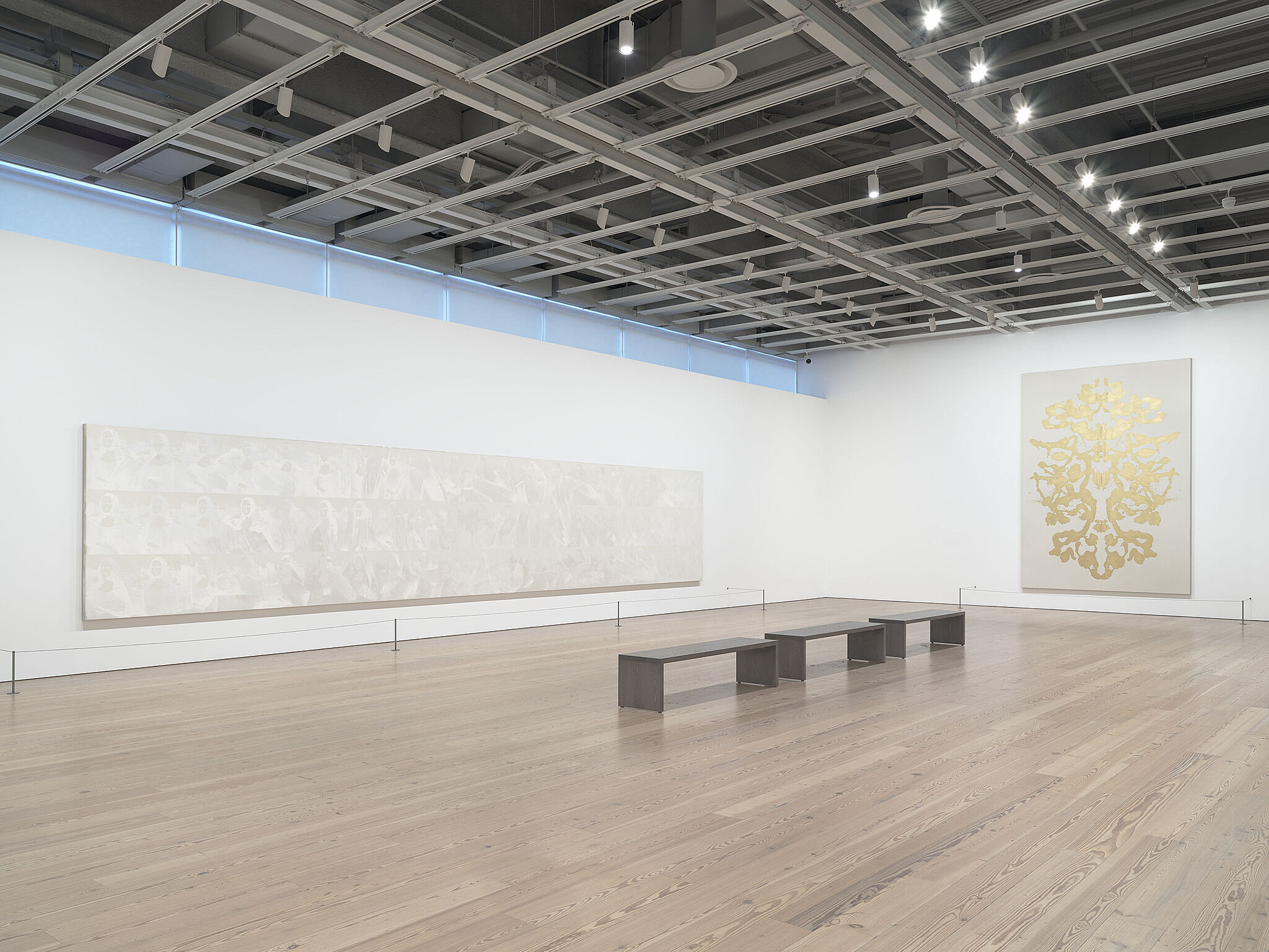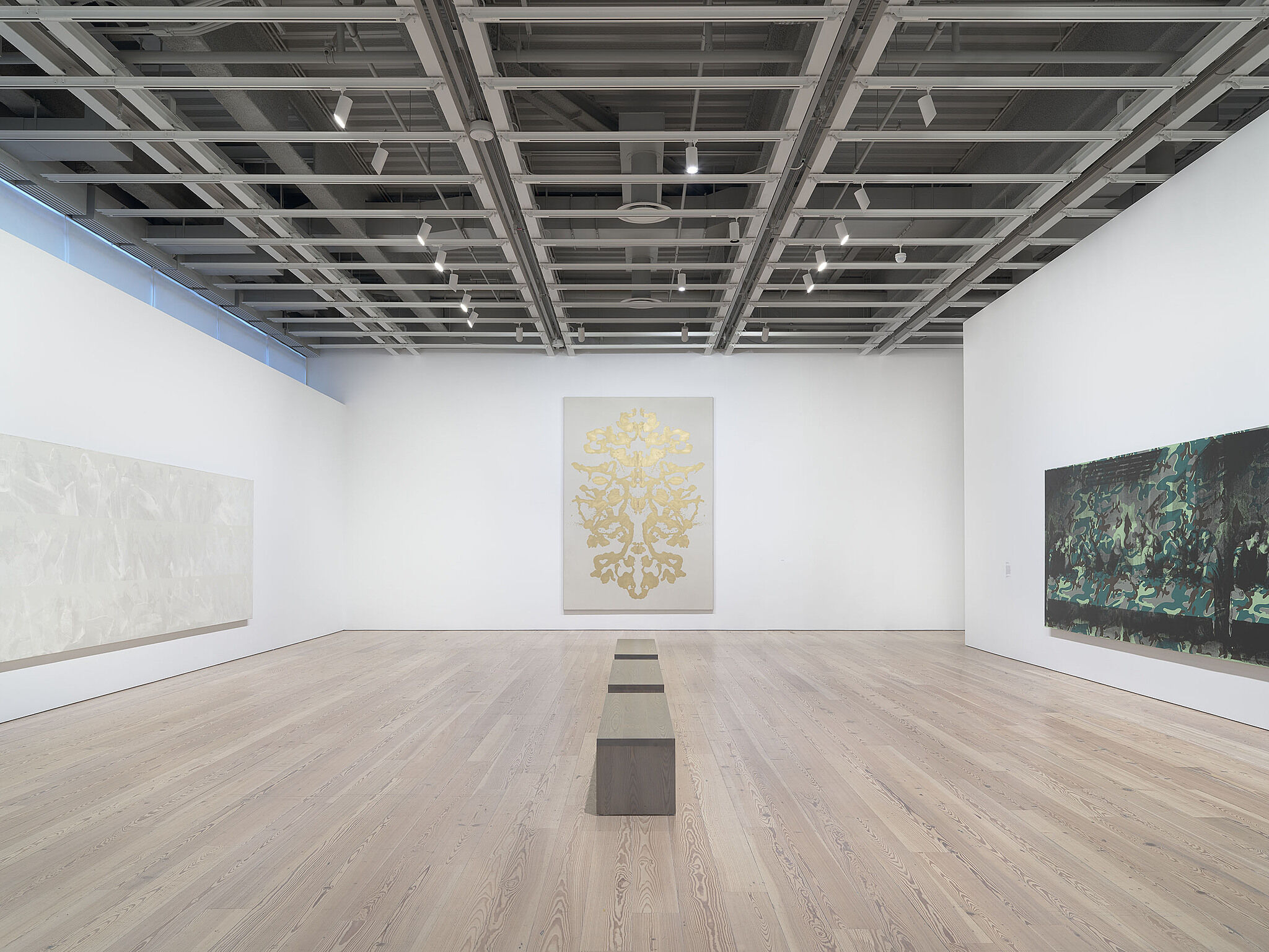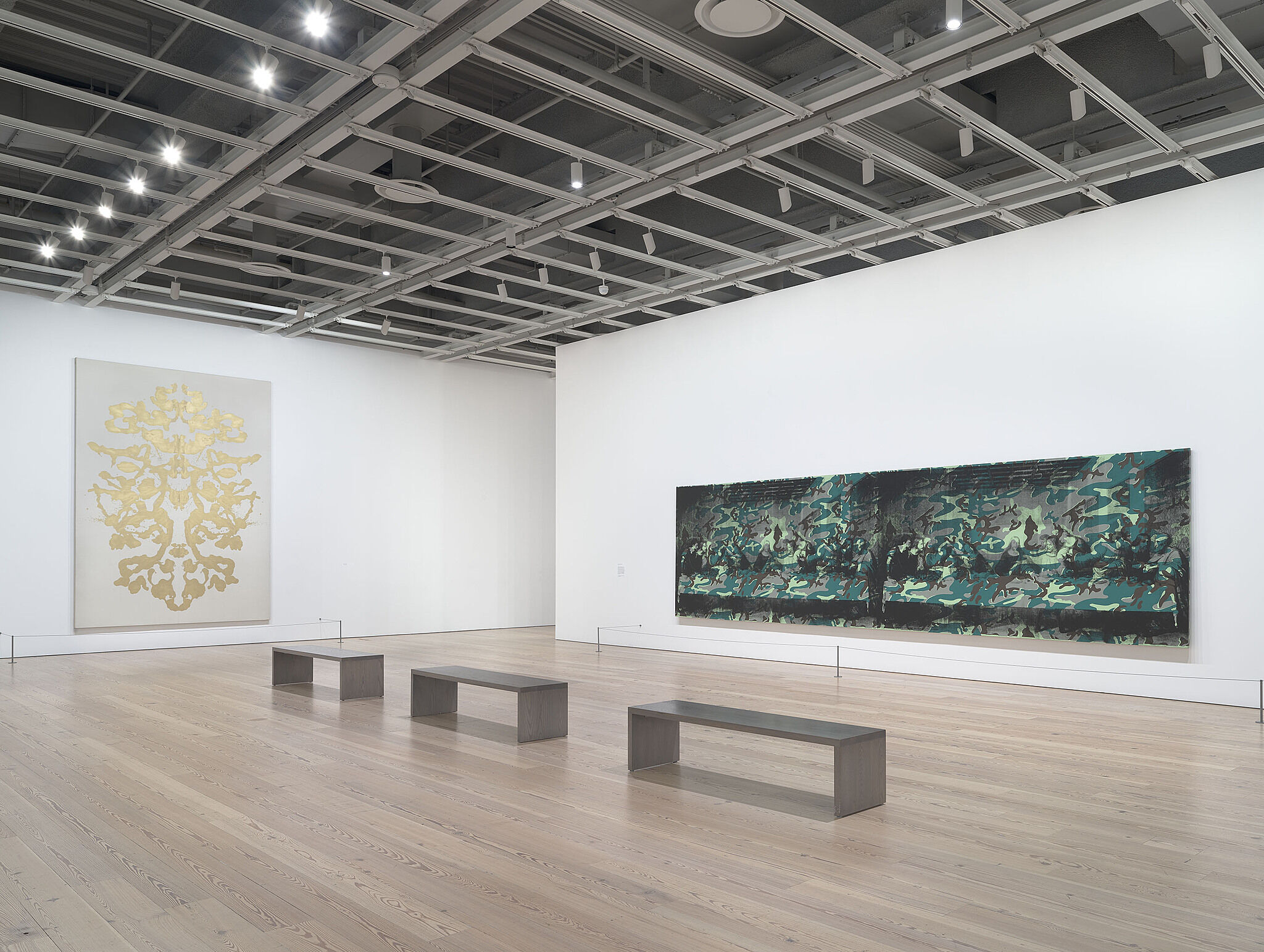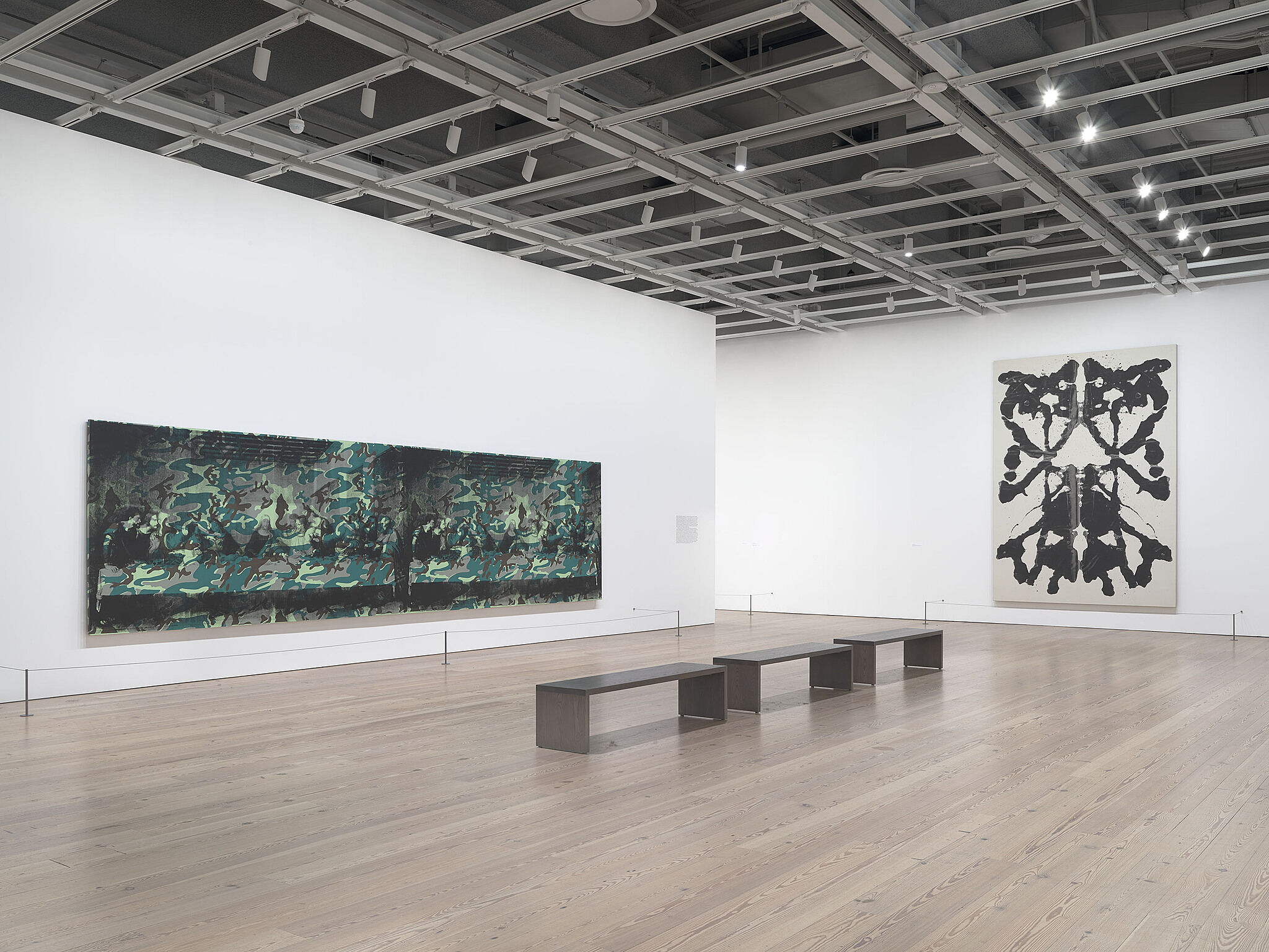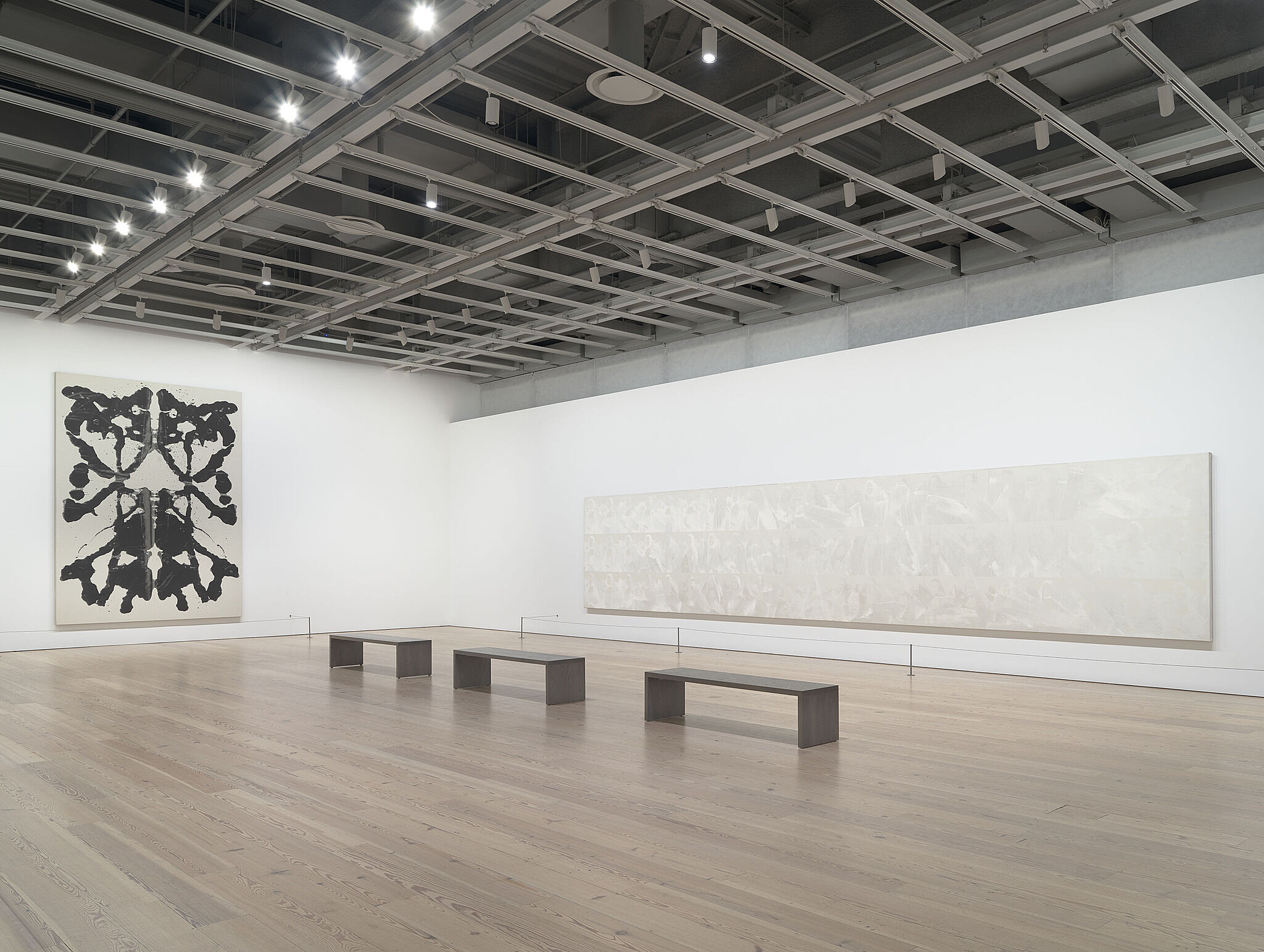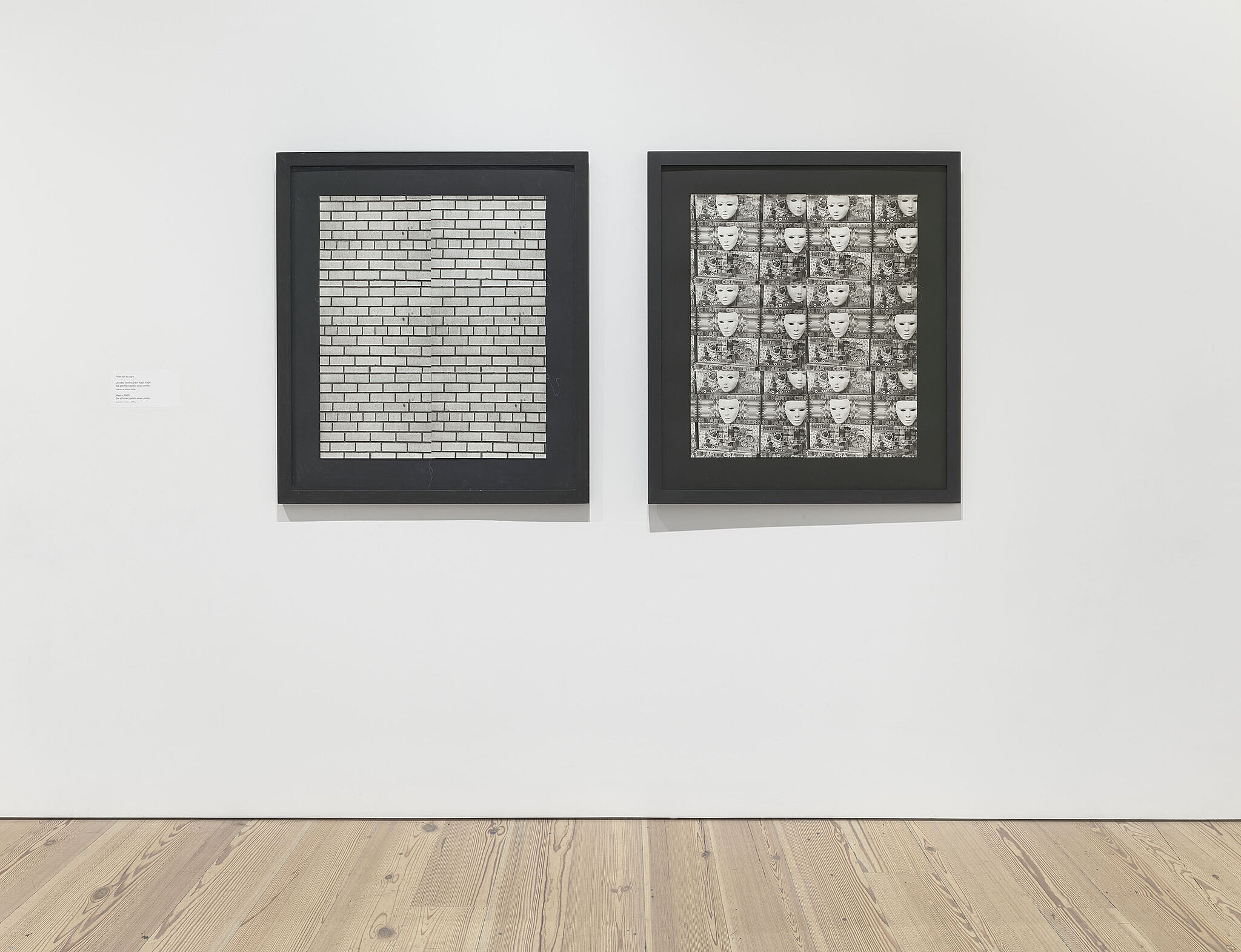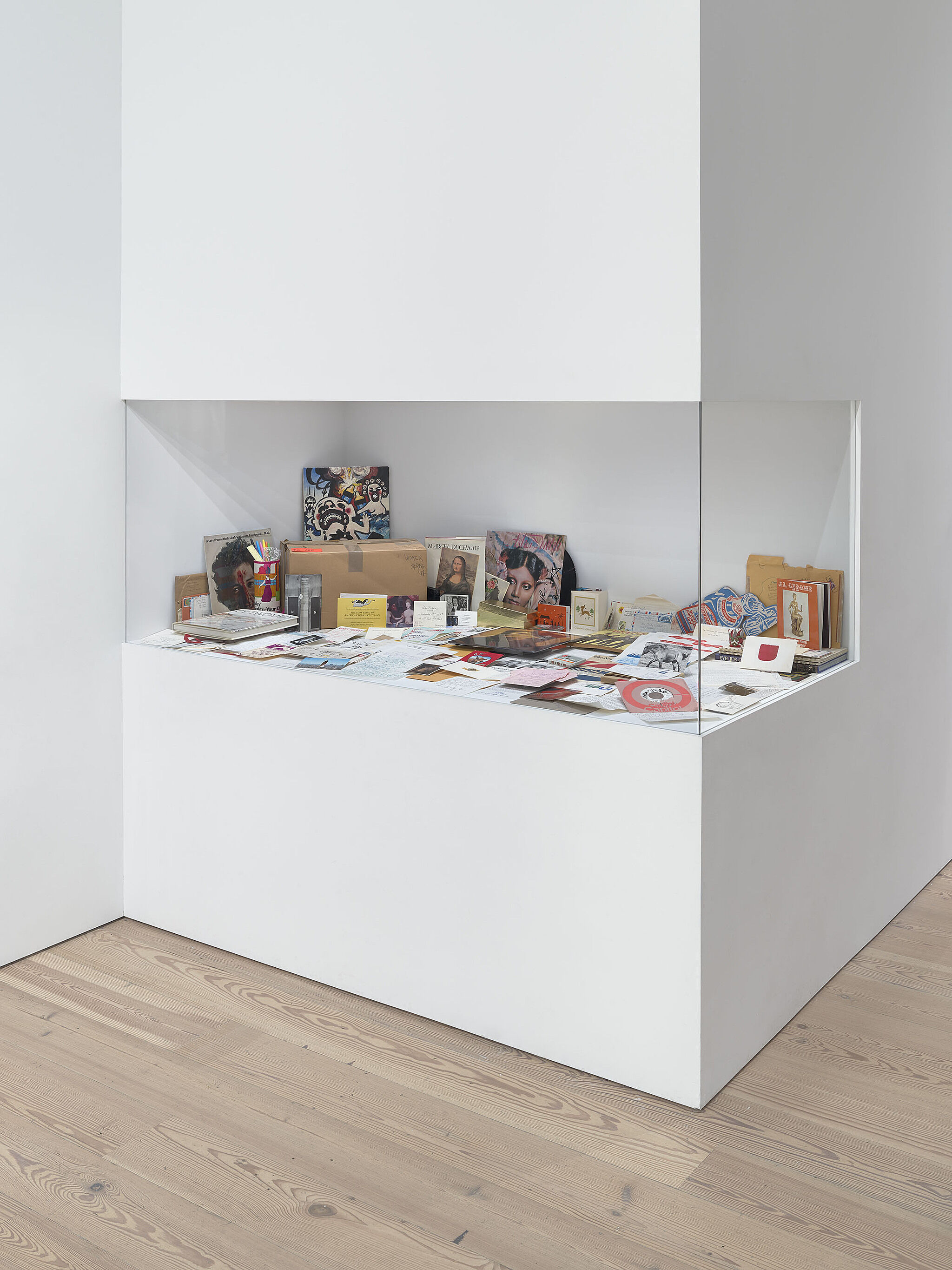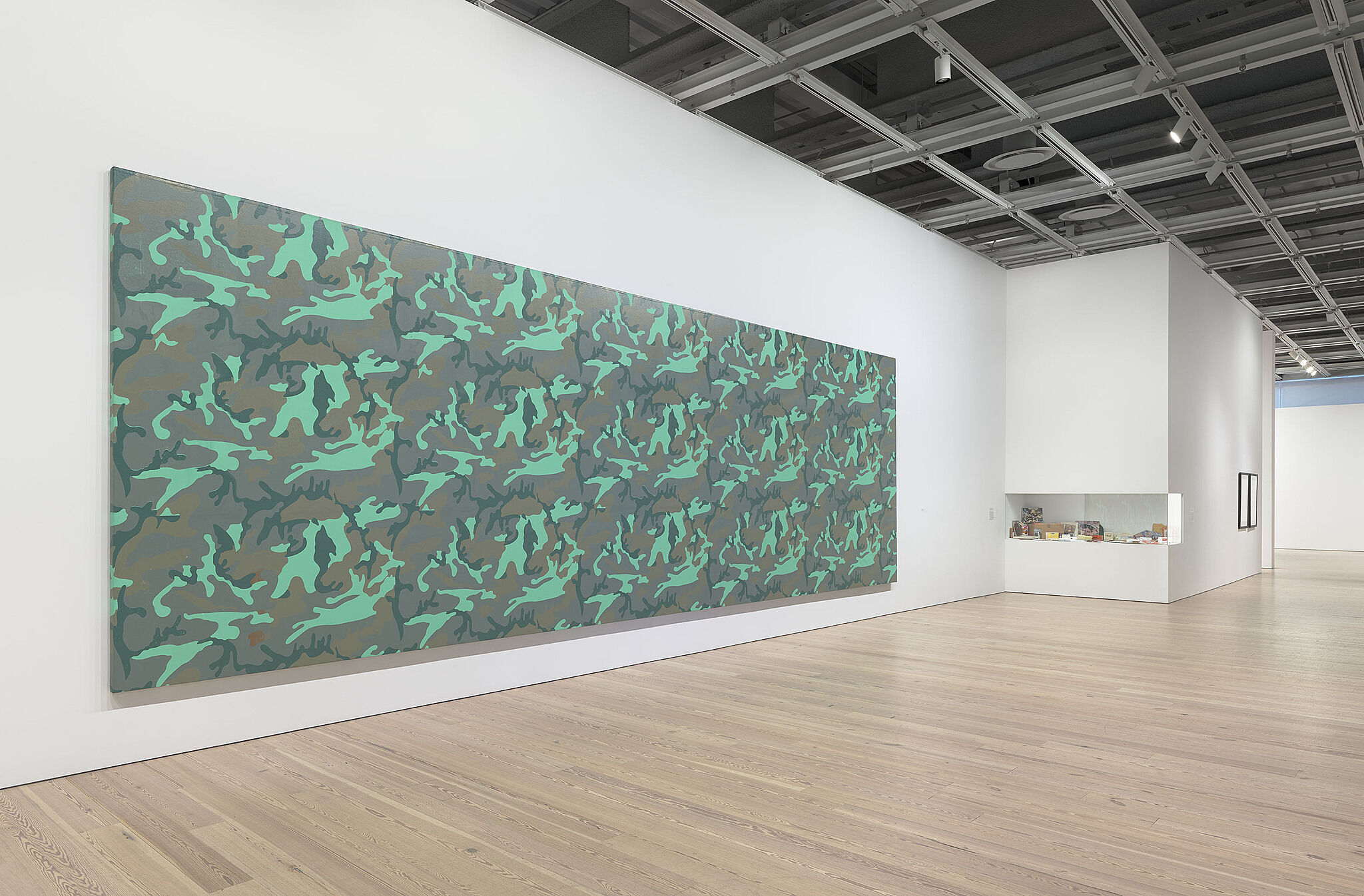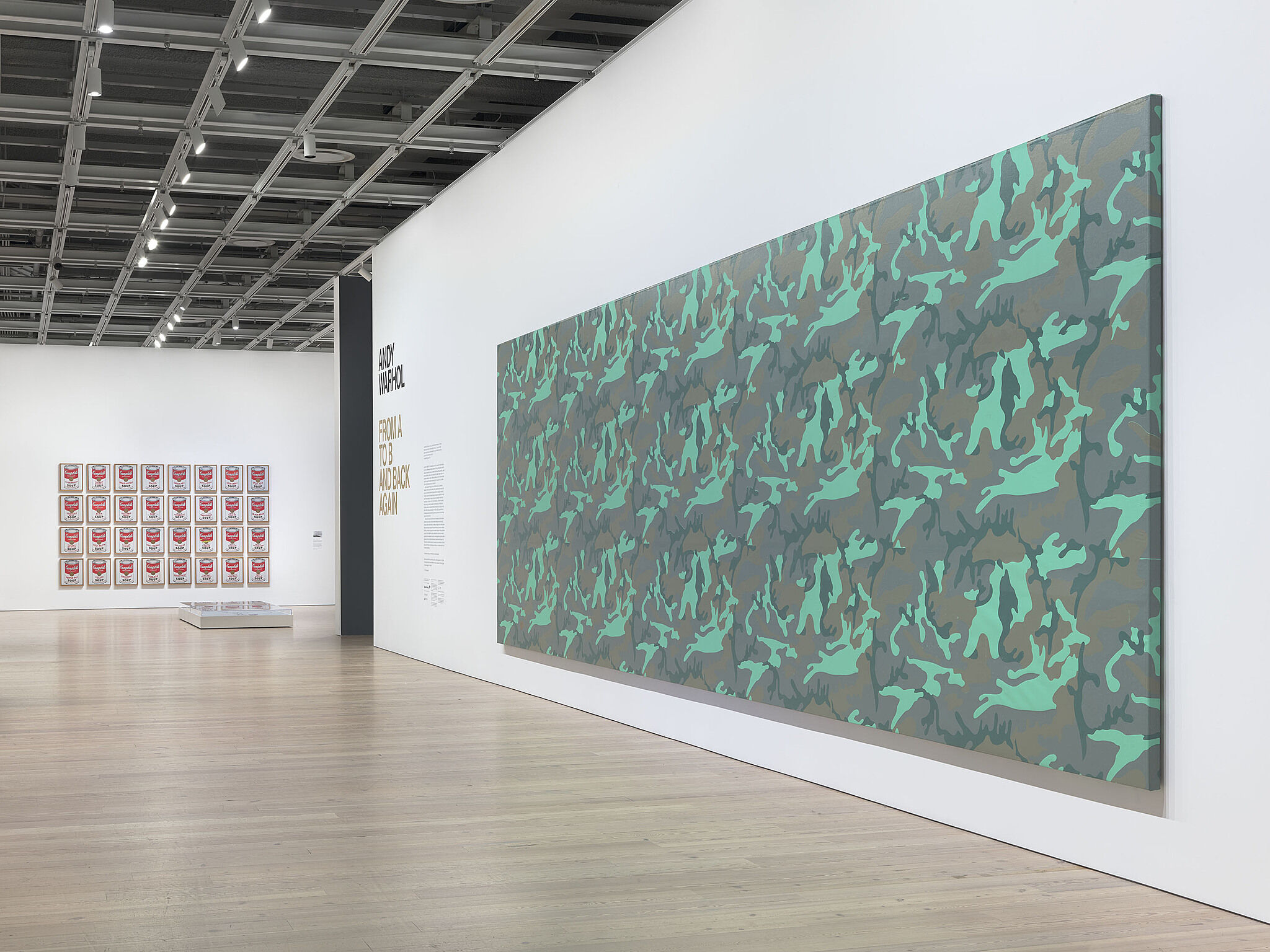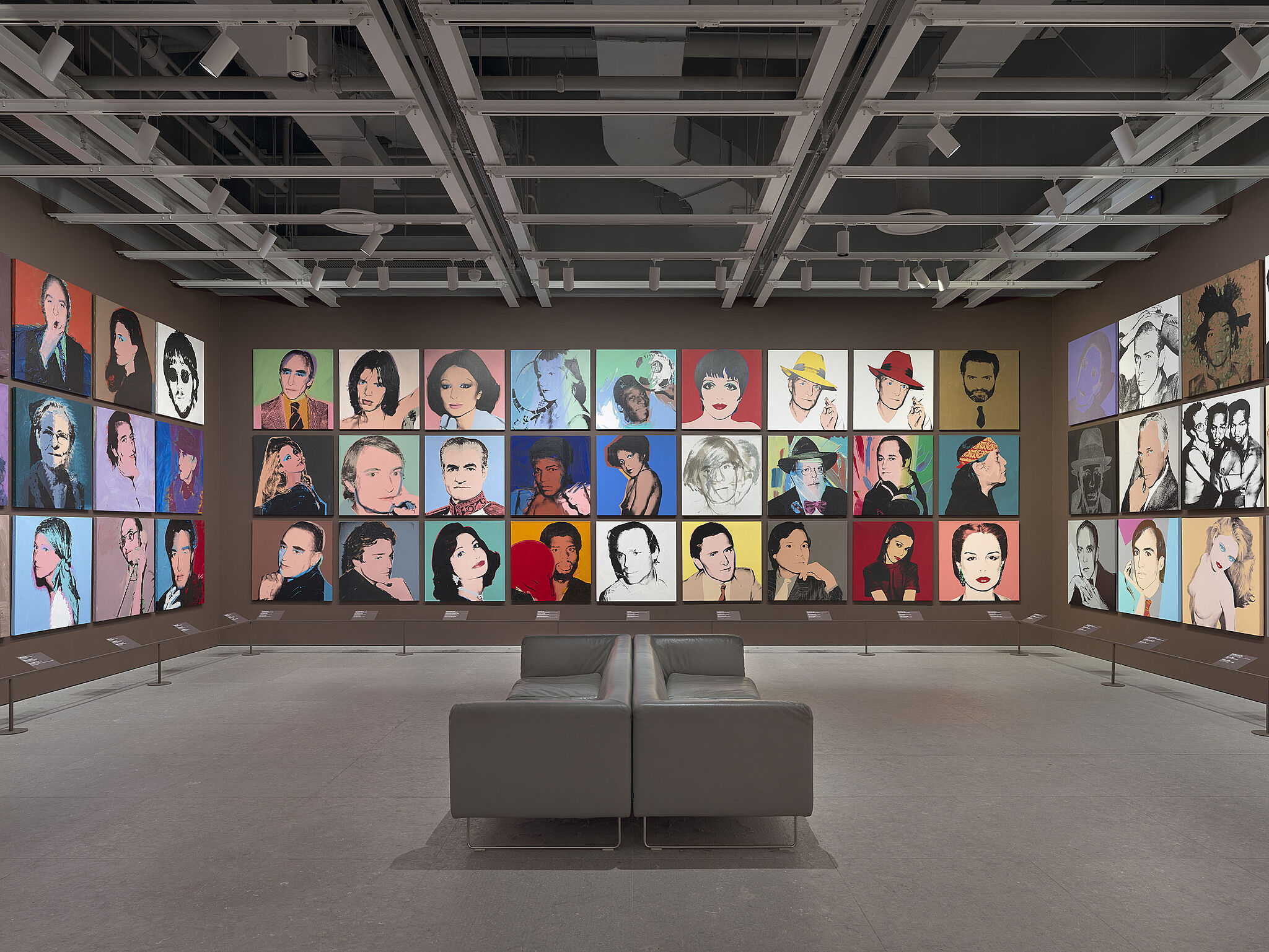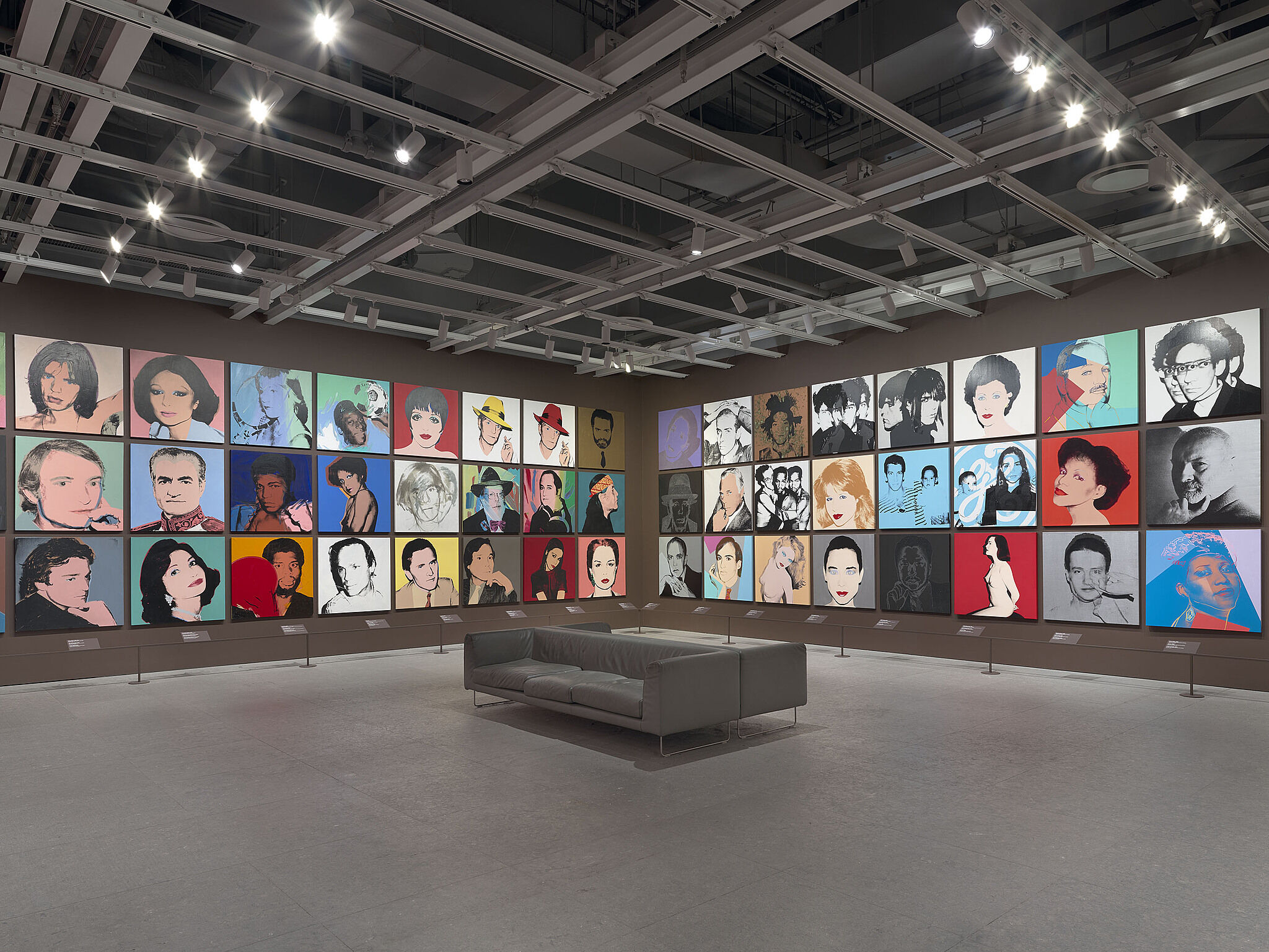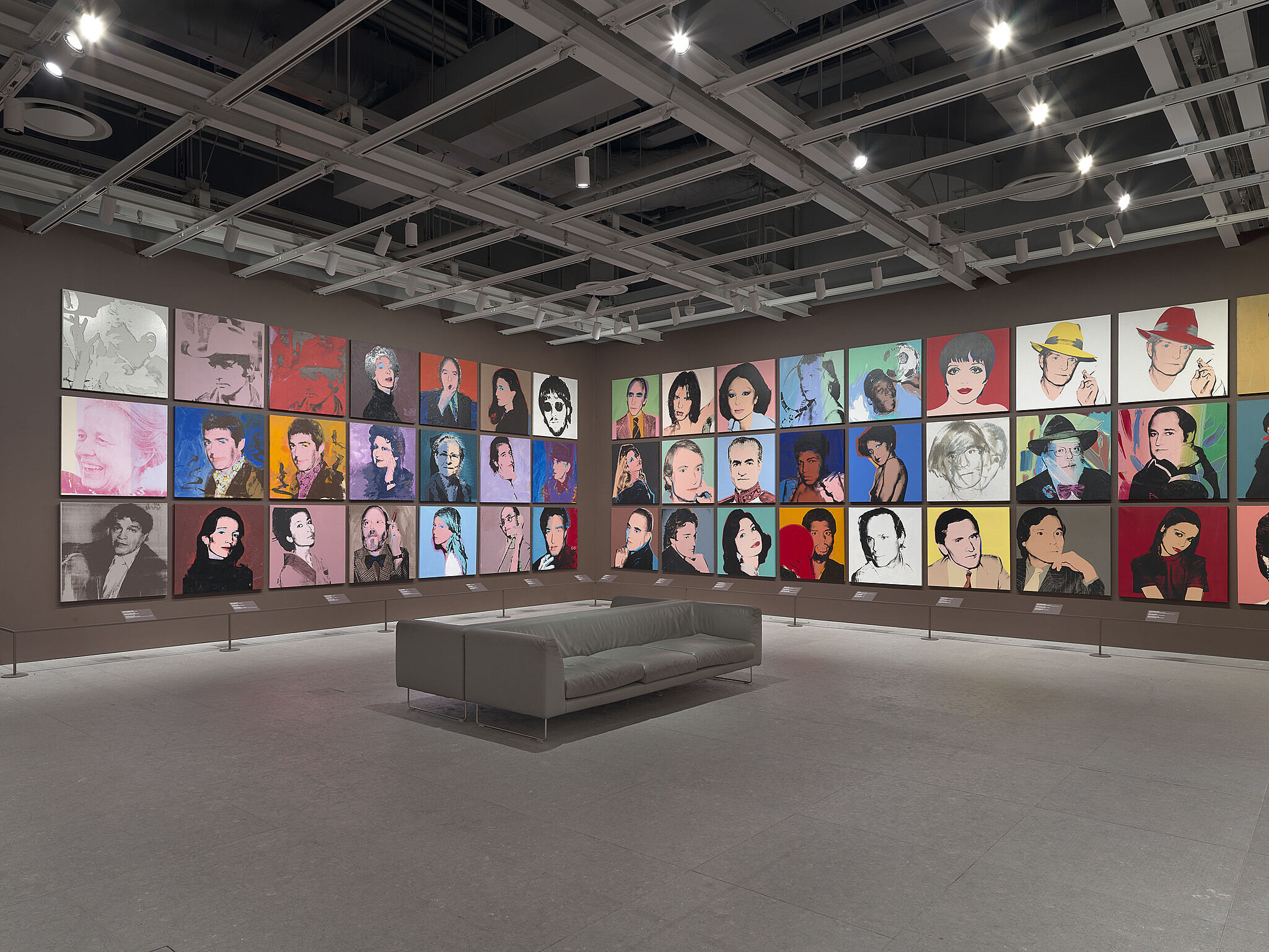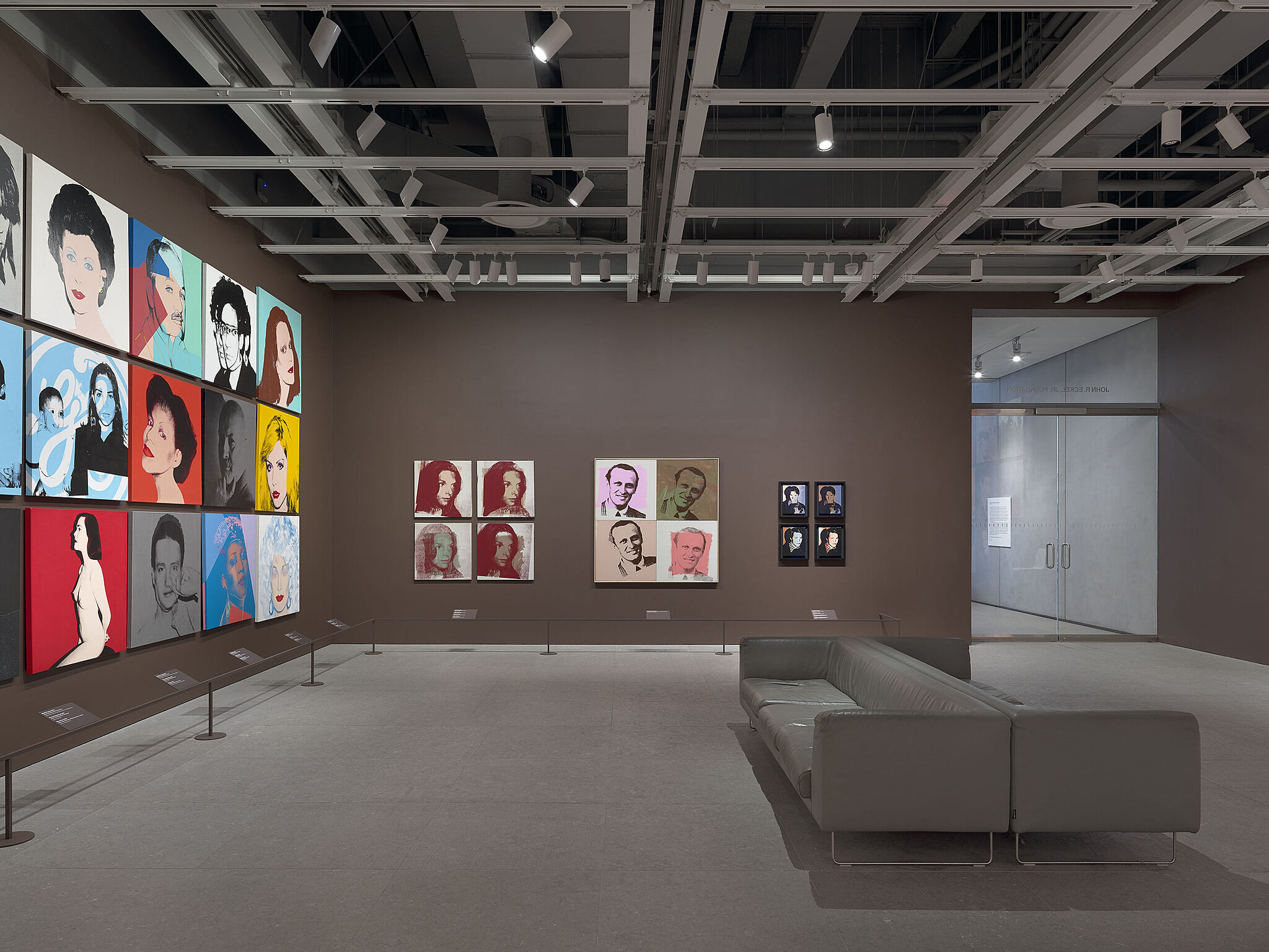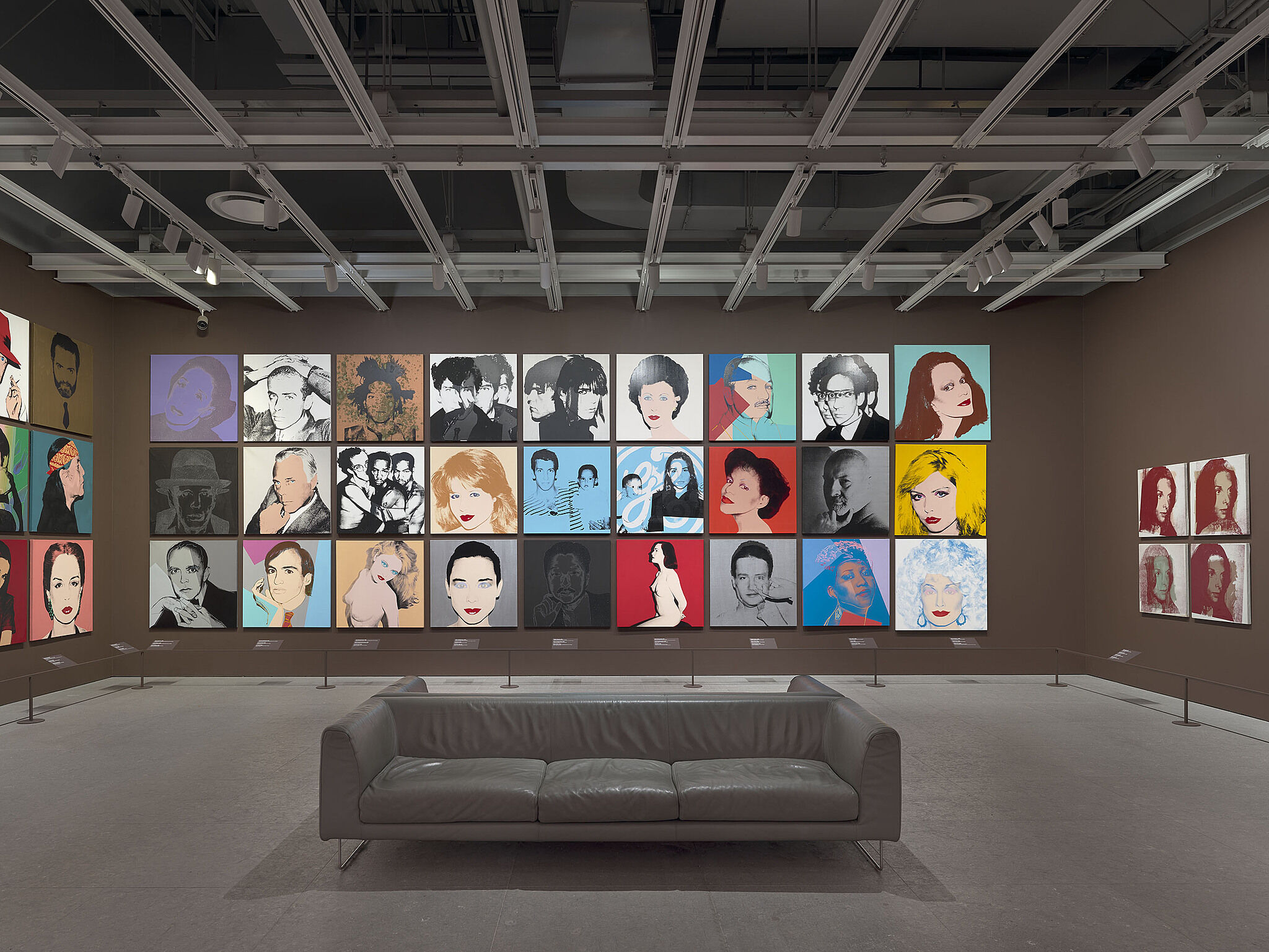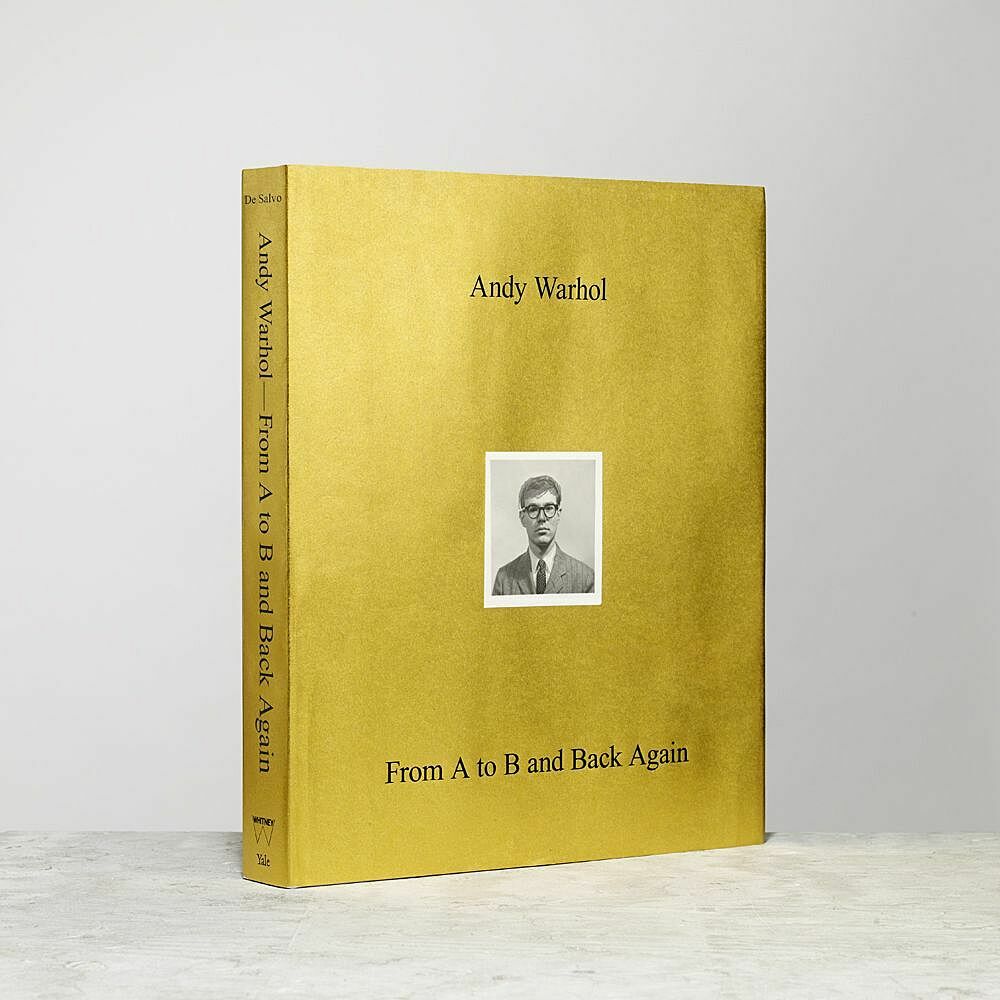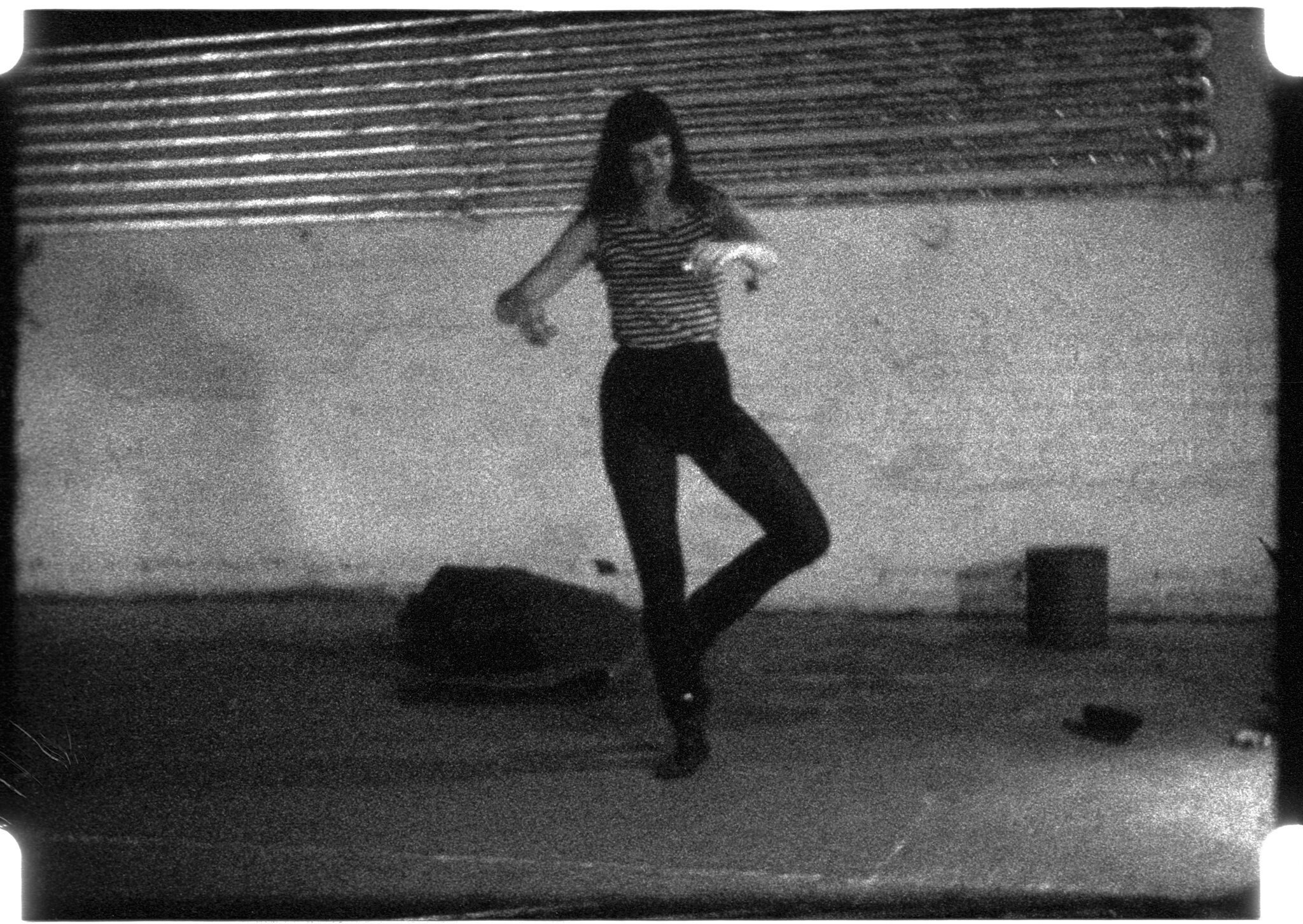Andy Warhol— From A to B and Back Again
Nov 12, 2018–Mar 31, 2019
Andy Warhol— From A to B and Back Again
Few American artists are as ever-present and instantly recognizable as Andy Warhol (1928–1987). Through his carefully cultivated persona and willingness to experiment with non-traditional art-making techniques, Warhol understood the growing power of images in contemporary life and helped to expand the role of the artist in society. This exhibition—the first Warhol retrospective organized by a U.S. institution since 1989—reconsiders the work of one of the most inventive, influential, and important American artists. Building on a wealth of new materials, research and scholarship that has emerged since the artist’s untimely death in 1987, this exhibition reveals new complexities about the Warhol we think we know, and introduces a Warhol for the 21st century.
Tour New York With Warhol
Explore the spots where Andy Warhol lived, worked, and socialized.
More about the exhibition
The exhibition positions Warhol's career as a continuum, demonstrating that he didn't slow down after surviving the assassination attempt that nearly took his life in 1968, but entered into a period of intense experimentation. The show illuminates the breadth, depth, and interconnectedness of the artist’s production: from his beginnings as a commercial illustrator in the 1950s, to his iconic Pop masterpieces of the early 1960s, to the experimental work in film and other mediums from the 1960s and 70s, to his innovative use of readymade abstraction and the painterly sublime in the 1980s. His repetitions, distortions, camouflaging, incongruous color, and recycling of his own imagery challenge our faith in images and the value of cultural icons, anticipating the profound effects and issues of the current digital age.
This is the largest monographic exhibition to date at the Whitney's new location, with more than 350 works of art, many assembled together for the first time.
The exhibition is organized by Donna De Salvo, Deputy Director for International Initiatives and Senior Curator, with Christie Mitchell, senior curatorial assistant, and Mark Loiacono, curatorial research associate.
The accompanying film program is co-organized with the Andy Warhol Museum, Pittsburgh, and curated by Claire K. Henry, assistant curator.
Leadership support of Andy Warhol—From A to B and Back Again is provided by Kenneth C. Griffin.
Bank of America is the National Tour Sponsor

In New York, exhibition is also sponsored by


Generous support is provided by Neil G. Bluhm and Larry Gagosian.
Major support is provided by The Brown Foundation, Inc., of Houston; Foundation 14; Mr. and Mrs. J. Tomilson Hill; The Horace W. Goldsmith Foundation; the Philip and Janice Levin Foundation; The Thompson Family Foundation, Inc.; and the Whitney’s National Committee.
Significant support is provided by the Blavatnik Family Foundation, Lise and Michael Evans, Susan and John Hess, Allison and Warren Kanders, Ashley Leeds and Christopher Harland, the National Endowment for the Arts, Brooke and Daniel Neidich, Per Skarstedt, and anonymous donors.
Additional support is provided by Bill and Maria Bell, Kemal Has Cingillioglu, Jeffrey Deitch, Andrew J. and Christine C. Hall, Constance and David Littman, the Mugrabi Collection, John and Amy Phelan, Louise and Leonard Riggio, Norman and Melissa Selby, Paul and Gayle Stoffel, Mathew and Ann Wolf, and Sophocles and Silvia Zoullas.

New York Magazine is the exclusive media sponsor.
This exhibition is supported by an indemnity from the Federal Council on the Arts and the Humanities.
Support for the catalogue is provided by Acquavella Galleries and the Paul J. Schupf Lifetime Trust.
The opening dinner is sponsored by

Events
View all-
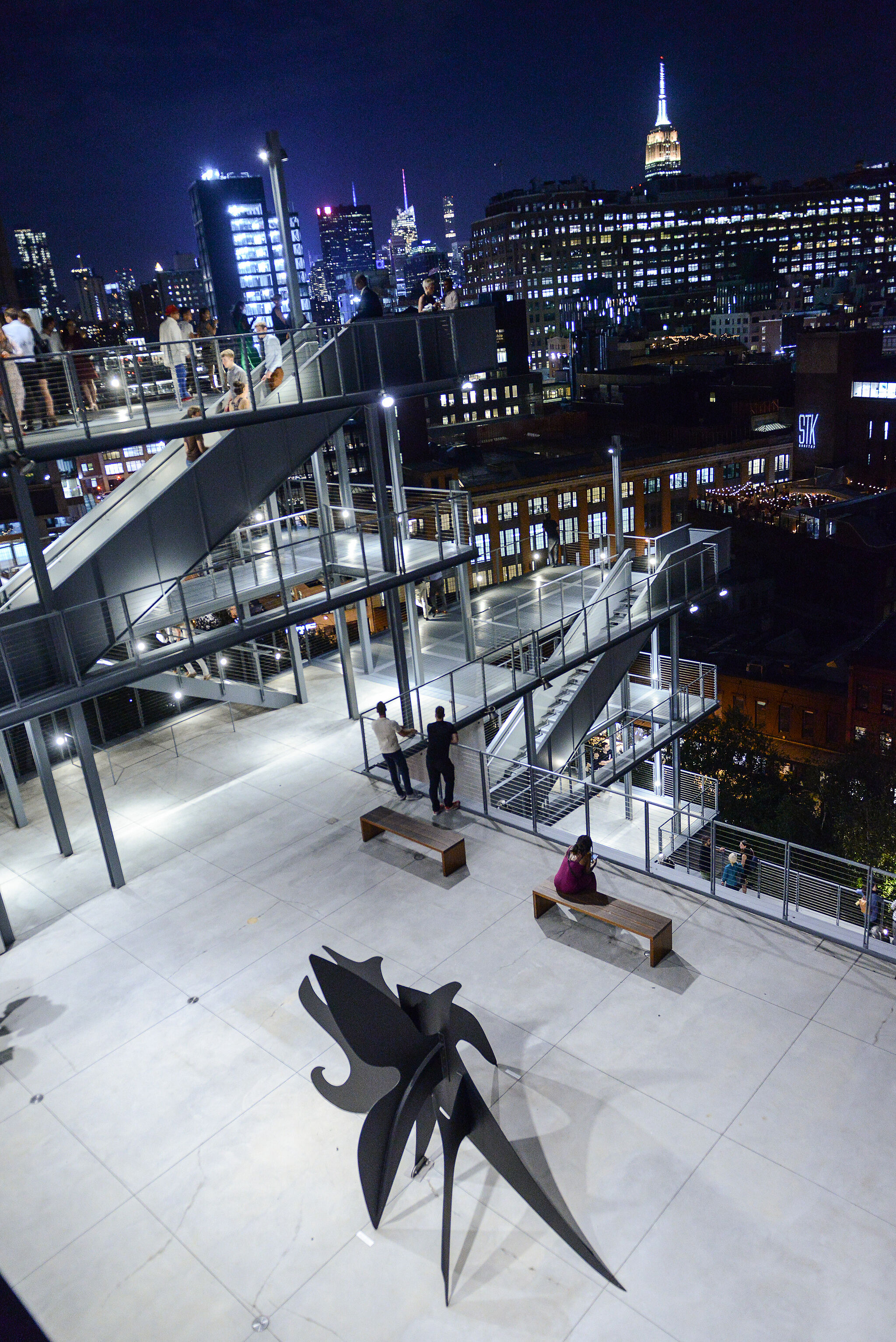
Member Night
Thursday, March 28, 2019
7:30–10 pm -
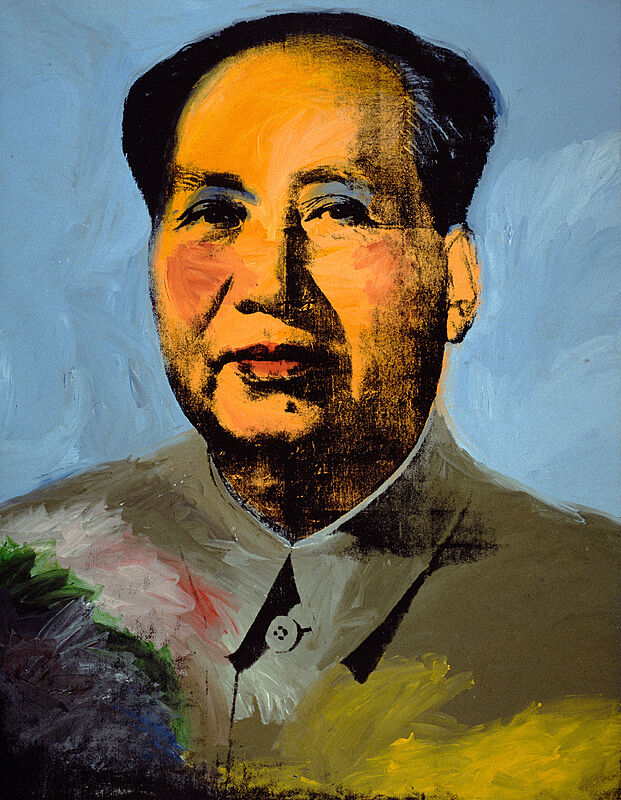
Contemporaries Salon: The Muscle Behind Andy Warhol—From A to B and Back Again
Monday, March 25, 2019
7–9:30 pm -
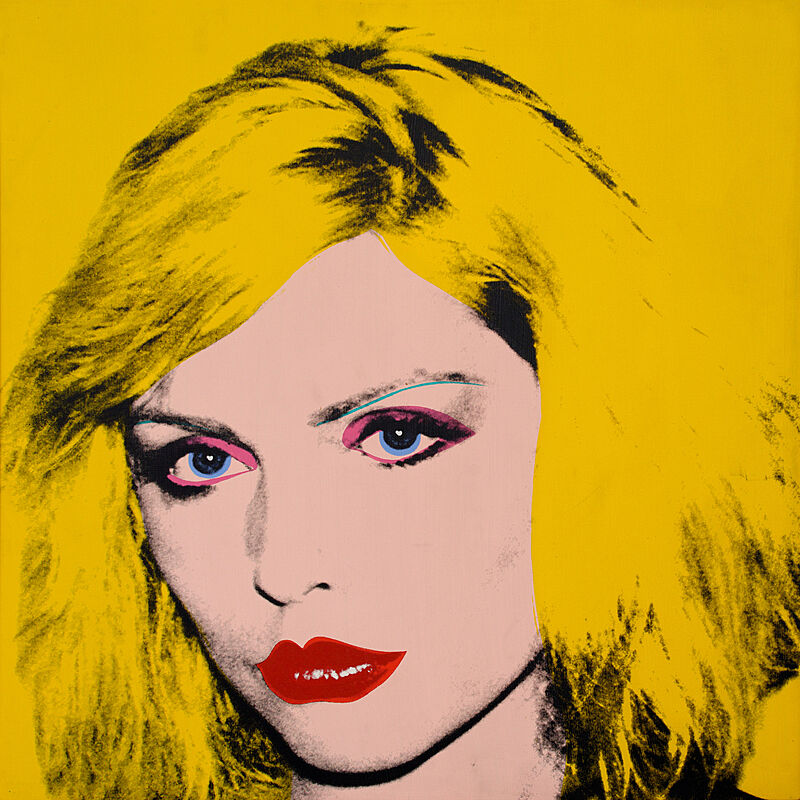
Contemporaries Studio Night: Andy Warhol
Monday, March 18, 2019
7–9 pm -
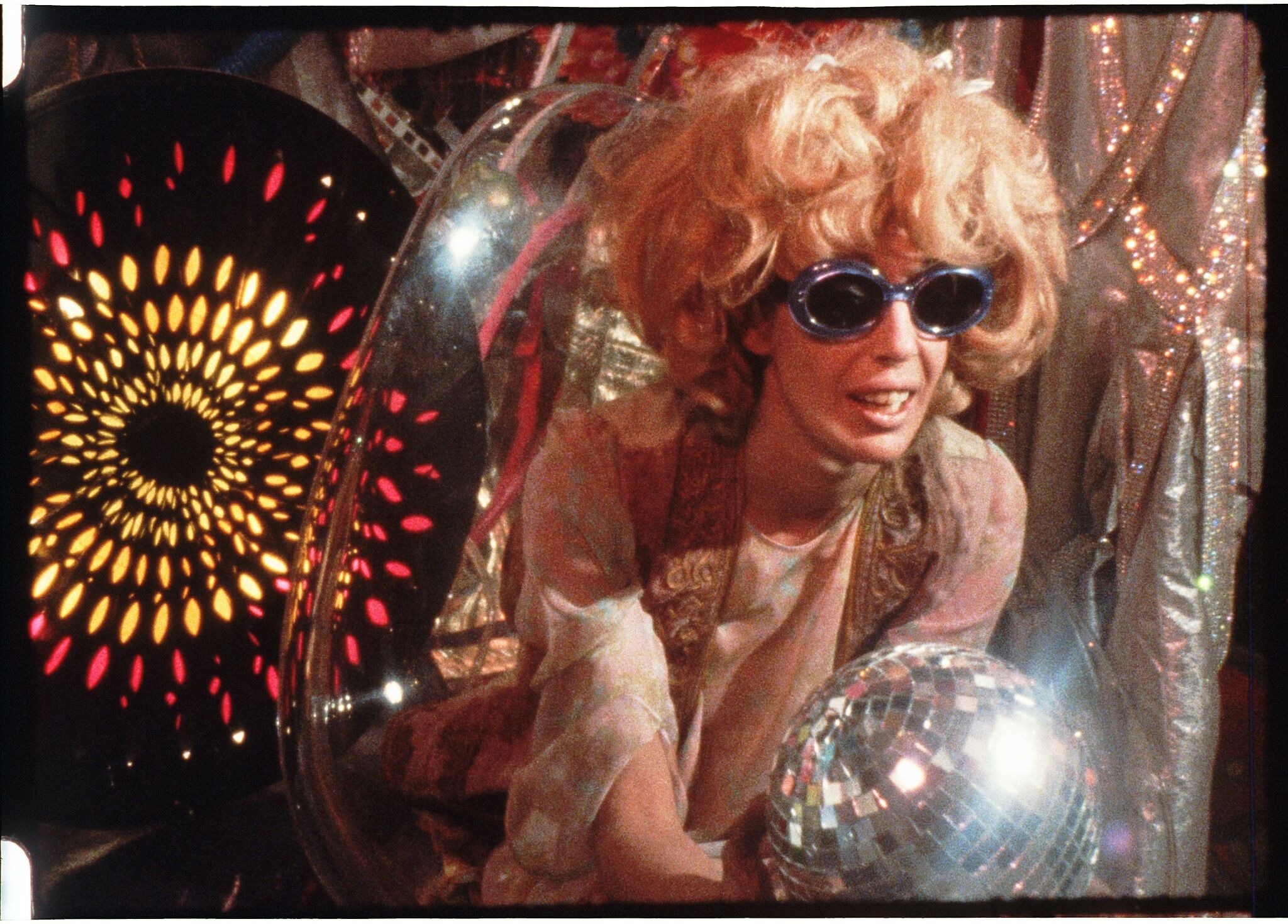
Warhol Film Screening—"Ladies and Gentlemen": Portraiture in Warhol’s Film, Part III
Saturday, March 16, 2019
7 pm
Publication
Andy Warhol—From A to B and Back Again
This ambitious book is the first to examine Warhol’s work in its entirety. It builds on a wealth of new research and materials that have come to light in recent decades and offers a rare and much-needed comprehensive look at the full scope of Warhol’s production—from his commercial illustrations of the 1950s through his monumental paintings of the 1980s. Donna De Salvo explores how Warhol’s work engages with notions of public and private, the redefinition of media, and the role of abstraction, while a series of incisive and eye-opening essays by eminent scholars and contemporary artists touch on a broad range of topics, such as Warhol’s response to the AIDS epidemic, his international influence, and how his work relates to constructs of self-image seen in social media today.
In the News
"It explores tensions between conformity and innovation, celebrity and privacy, and examines how Warhol expressed commentary and desire in his art."
—PBS News Hour
"A sweeping retrospective shows a personal side of the Pop master — his hopes, fears, faith — and reasserts his power for a new generation."
—The New York Times
“It can be guaranteed that 'From A to B and Back Again' will prove an inescapable cultural event. It also promises an equal intellectual bonanza.”
—Artforum
“'To humanize Warhol and get people to actually look at what he made is not as easy as it might sound.’ Now Ms. De Salvo is tackling that challenge in 'Andy Warhol—From A to B and Back Again,' the first Warhol retrospective organized by a United States museum since 1989.”
—The New York Times
“His 15 minutes of fame will never expire. More than 350 works make up this major retrospective that spans Warhol’s entire career from illustrator to pop icon.”
—Los Angeles Times
“In November, the Whitney Museum of American Art will feature the first U.S. retrospective of Andy Warhol’s art in some three decades, in an exhibition that will occupy a great deal of the institution’s eight-story, High Line-adjacent building.”
—The New Yorker
“De Salvo said she believes that the show will inspire viewers to look past the persona that the artist cultivated during his lifetime.”
—ARTnews
“What more is there to learn about this deeply superficial artist? The Whitney’s brilliant curator Donna De Salvo answers the question with the largest Warhol survey ever, featuring more than three hundred and fifty works.”
—The New Yorker
“Titled 'Andy Warhol — From A to B and Back Again,' it stars a full cross-section of his epochal creations."
—The New York Times
“The heart of Warhol’s idea — that by playing the role of businessman, an artist could turn himself into the latest, living example of a commodification he believed none of us can avoid — was perhaps as revolutionary in its time as Marcel Duchamp presenting a humble urinal as sculpture had been in 1917.”
—The New York Times
“One of its most groundbreaking aspects will be the concentration on the least-known time of Warhol’s life, the 1950s.”
—W Magazine
"All the possible aspects of his four-decades-long, multilayered practice, meticulously analyzed and presented."
—Widewalls
“Andy is in the air we breathe. Among the most revolutionary artists who ever lived, Warhol (was) an artist in a state of creative grace feeding on, mirroring, doubling, and actually changing the culture he pictured. The Whitney’s new retrospective…isn’t to be missed.”
—New York Magazine
"A remarkably handsome and topical show.”
—WNYC
“De Salvo aims to offer a unique perspective on his work—a personal one. She looks behind Warhol’s carefully constructed mask to explore how a gay man raised by Czech immigrants in a Catholic family became one of the world’s most experimental artists.”
—Artnet
“The wonderful thing about the Whitney show is that it places Warhol’s famous moments alongside the moments you have likely never seen or heard of… "
—The Daily Beast
“It’s all about Andy!...More than three decades after his death, Warhol’s art continues to draw crowds and remains relevant.”
—CBS New York
“There are plenty of hits— mediated and sequential images, experiments with abstraction, and Popism on full display.”
—Cultured
“The Best Part of the Whitney Warhol Retrospective Might Be His Pre-Fame Drawings of Shoes and Boys.”
—Vulture
"The Whitney’s celebrated Warhol extravaganza explores lesser-known elements of the Pop artist’s oeuvre, including his homoerotic drawings and portraits of men in drag from the 1960s.”
—Artnet
“Warhol didn’t make a mark on American culture. He became the instrument with which American culture designated itself.”
—The New Yorker
"Warhol—a pale, oracular ghost—looms as a spiritual father of this media-saturated age.”
—The Economist

